Paradox Security Systems 1759EX Alarm Receiver User Manual 1759EXei01
Paradox Security Systems Alarm Receiver 1759EXei01
Users Manual
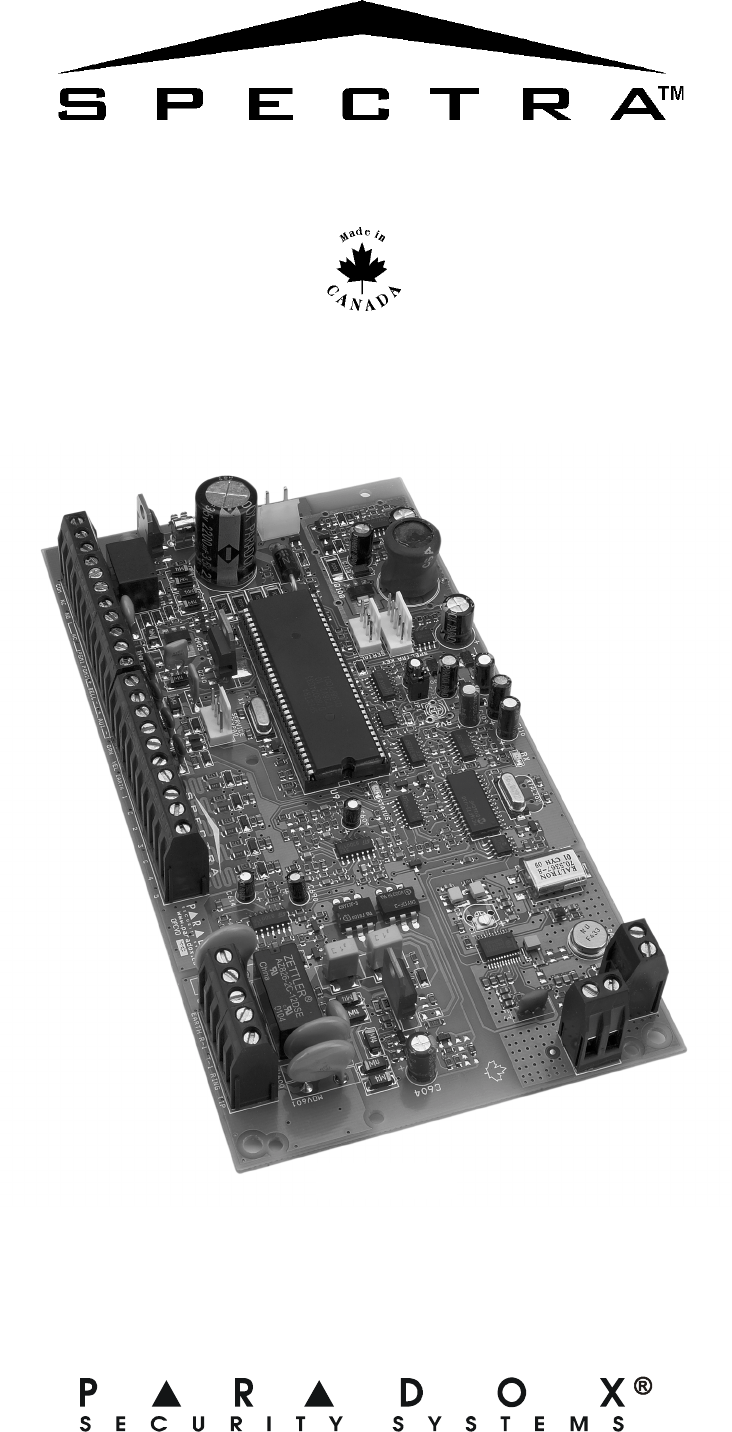
1759EX V1.0
REFERENCE & INSTALLATION MANUAL
(433MHZ / 868MHZ)
1759EX

TABLE OF CONTENTS
INTRODUCTION ................................................. 3
Features.............................................................................................. 3
Specifications...................................................................................... 3
INSTALLATION .................................................. 4
Location and Mounting ....................................................................... 4
Earth Ground ...................................................................................... 4
AC Power............................................................................................ 4
Backup Battery ................................................................................... 4
Auxiliary Power Terminals .................................................................. 6
Telephone Line Connection................................................................ 6
Bell Output Connection....................................................................... 6
Programmable Output Connections ................................................... 6
Single Zone Inputs.............................................................................. 7
Keypad and Keypad Zone Connections ............................................. 7
Keyswitch Connections....................................................................... 8
Fire Circuits......................................................................................... 8
PROGRAMMING METHODS................................ 9
WinLoad Software for Windows.......................................................... 9
Programming Using a Keypad............................................................ 9
Configuring The LED Keypads ......................................................... 10
Programming Using A Paradox Memory Key ................................... 11
ACCESS CODES ............................................ 12
Access Code Length......................................................................... 12
Installer Code (Default: 000000)....................................................... 12
System Master Code (Default: 123456)............................................ 12
User Code Options ........................................................................... 12
Lock Master Code............................................................................. 13
Duress Code..................................................................................... 13
ZONE PROGRAMMING..................................... 14
What is an Expansion Input? ............................................................ 14
Reassign Keypad Zone 2 ................................................................. 14
Reassign Zones to Expansion Inputs ............................................... 15
Zone Programming ........................................................................... 15
Zone Definitions................................................................................ 16
Exclusive Zone Definitions................................................................ 17
Zone Partition Assignment................................................................ 18
Zone Options .................................................................................... 18
Zone Speed ...................................................................................... 20
EOL Zones........................................................................................ 20
WIRELESS ZONE PROGRAMMING................ 20
Wireless Transmitter Programming .................................................. 20
Viewing the Wireless Transmitter Signal Strength............................ 21
Serial Number Display ...................................................................... 21
Supervision Options.......................................................................... 22
Remote Control Programming .......................................................... 22
ARMING AND DISARMING OPTIONS............... 25
Switch To Stay Arming ..................................................................... 25
Stay Arming with Delay..................................................................... 25
Regular Arming switches to Force Arming (Not to be used with UL Instal-
lations) .............................................................................................. 25
Restrict Arming On Battery Fail ........................................................ 25
Restrict Arming On Tamper Failure .................................................. 25
Timed Auto-Arming........................................................................... 25
No Movement Auto-Arming .............................................................. 26
Auto-Arming Options (Not to be used with UL installations)............. 26
One-Touch Arming (Not to be used with UL installations)................ 26
Exit Delay.......................................................................................... 26
Bell Squawk On Arm/Disarm With Keypad ...................................... 27
Bell Squawk On Arm/disarm with Remote Control........................... 27
No Exit Delay When Arming with Remote Control ........................... 27
No Exit Delay Beeps and No Bell Squawk When Stay Arming........ 27
ALARM OPTIONS .......................................... 27
Bell Cut-Off Timer............................................................................. 27
Recycle Alarm .................................................................................. 27
Tamper Recognition......................................................................... 28
Keypad Panic Options...................................................................... 28
Panic Lockout Timer......................................................................... 29
REPORTING AND DIALER SETTINGS.............. 30
Reporting/Dialer (Enable/Disable).................................................... 31
Report Codes ................................................................................... 31
Central Station Telephone Numbers................................................ 33
Partition Account Numbers............................................................... 33
Reporting Formats............................................................................ 33
Pager Delay...................................................................................... 34
Event Call Direction.......................................................................... 35
Dialing Method ................................................................................. 35
Pulse Ratio....................................................................................... 35
Bell on Communication Failure ........................................................ 35
Dial Tone Delay................................................................................ 35
Maximum Dialing Attempts............................................................... 35
Delay Between Dialing Attempts...................................................... 36
Alternate Dial Option ........................................................................ 36
Recent Close Delay.......................................................................... 36
Auto Test Report .............................................................................. 36
Power Failure Report Delay ............................................................. 36
Disarm Reporting Options................................................................ 36
Zone Restore Report Options .......................................................... 36
Telephone Line Monitoring (TLM) .................................................... 36
PROGRAMMABLE OUTPUTS ........................ 37
PGM Activation Event ...................................................................... 37
PGM Deactivation Event .................................................................. 38
PGM Delay ....................................................................................... 38
PGM Normal State ........................................................................... 38
PGM2 Strobe Options ...................................................................... 38
Alarm Relay Options ........................................................................ 38
SYSTEM SETTINGS ......................................... 39
Hardware Reset ............................................................................... 39
Installer Lock .................................................................................... 39
Keypad Lockout Feature .................................................................. 39
Battery Charge Current .................................................................... 39
Partitioning ....................................................................................... 39
System Real-Time Clock.................................................................. 39
Clock Adjust ..................................................................................... 39
Keypad Tamper Supervision............................................................ 40
Keypad Audible Trouble Warning..................................................... 40
Confidential Mode ............................................................................ 40
Installer Quick Functions Keys......................................................... 41
PGM Modules Supervision............................................................... 41
Printer Module Supervision .............................................................. 41
Zone Expansion Bus Module Supervision........................................ 41
Wireless Transmitter Low Battery Supervision................................. 42
Wireless Transmitter Supervision Options ....................................... 42
ReProgram All Expansion Modules.................................................. 42
SETTINGS FOR WINLOAD SOFTWARE............ 43
Panel Answer Options...................................................................... 43
Panel Identifier ................................................................................. 43
PC Password .................................................................................... 43
PC Telephone Number ..................................................................... 43
Call WinLoad Software ..................................................................... 43
Answer WinLoad Software ............................................................... 43
Auto Event Buffer Transmission ....................................................... 44
Call Back WinLoad ........................................................................... 44
USER OPERATION.......................................... 45
Trouble Display................................................................................. 45
Programming Access Codes ............................................................ 46
Disarming & Deactivating an Alarm .................................................. 46
Regular Arming................................................................................. 46
Stay Arming ...................................................................................... 47
Instant Arming................................................................................... 47
Force Arming (Not to be used with UL Installations) ........................ 47
Manual Bypass Programming........................................................... 47
One-Touch Arming ........................................................................... 48
Keyswitch Arming ............................................................................. 48
Panic Alarms..................................................................................... 48
Auto-Arming (Not to be used with UL installations) .......................... 49
Alarm Memory Display...................................................................... 49
Programming Chime Zones.............................................................. 49
Keypad Muting (Not to be used with UL installations) ...................... 49
Keypad Backlight (1686H and 1686V only) ...................................... 49
FCC WARNINGS .............................................. 50
INDEX .............................................................. 52
LIST OF TABLES
Transformer Requirements Table....................................................... 6
Current Consumption Table................................................................ 8
Decimal and Hexadecimal Programming Table ............................... 11
Zone Recognition Table.................................................................... 16
Zone Display with 10-Zone LED Keypad.......................................... 17
Sections and Expansion Inputs ........................................................ 22
Button Options .................................................................................. 26
Remote Control Button Programming............................................... 26
Special Keys for Telephone Numbers .............................................. 35
Reporting Formats ............................................................................ 36
Zone Tamper Report Code for Keypad Tamper Supervision Failure 42
Trouble List ....................................................................................... 47

PART 1: INTRODUCTION
1.1 FEATURES
• Up to 15 fully programmable zones
• Two completely independent partitions. Many of the features and options in the Spectra System can be independently set for each
partition such as event reporting, entry/exit delay, auto-arming and many more. All zones, the keyswitches and all user codes are
assigned to specific partitions, which makes this a true partitioned system.
• Communication bus facilitates the adding, programming and monitoring of all expansion modules.
• 1 Installer Code and 48 User Codes (including: 1 System Master, 2 Masters, and 1 Duress)
• 2 on-board, fully programmable outputs (PGMs) and one 5A alarm relay
• Simple, direct and logical programming
• Event Call Direction: The Spectra 1759EX control panel events are divided into 5 groups of events. Each of these event groups can
be programmed with a separate dialing sequence.
• Two 32-digit Central Station Telephone Numbers and one 32-digit Backup Telephone Number
• Contact ID, Pager Format and many more High-Speed Communication Formats
• "False Alarm Prevention" features such as: Intellizone, Auto Zone Shutdown, Beep on Exit Delay, Programmable Delay Before Alarm
Transmission, and Recent Closing Report
• Regular Arming, Stay Arming, Instant Arming, Force Arming, One-Touch Arming, Auto-Arming, or Keyswitch Arming
• 256 Event Buffer with time stamp
• Telephone Line Supervision
• Keypad activated panic alarms
• Compatible with Winload Security System Management Software for Windows®
1.2 SPECIFICATIONS
1.2.1 SPECTRA 1759EX CONTROL PANEL
• AC Power: 16Vac transformer with minimum 20VA rating (Rec.: 40VA), 50 to 60Hz
• Battery: 12Vdc, 4Ah/7Ah
• Aux. Power:+600mA typical, 700mA maximum, fuseless shutdown @ 1.1A
• Bell Output:++ 1A, fuseless shutdown @ 3A
• PGM Outputs: PGM1 = 150mA low-current output, PGM2 = 2.5A high-current output
• Alarm Relay: One form “C” relay rated @ 125V, 5A receptive load
• Frequency: 433MHz or 868MHz
1.2.2 SPECTRA KEYPADS (1686H, 1686V, 1689 AND 1641)
• Power input: Typically 9-16Vdc
• 1 standard keypad zone
• On-board tamper switch (optional)
1686H and 1686V 10-Zone LED Keypad
• Current consumption: 62 to 116mA
1689 16-Zone LED Keypad
• Current consumption: 50 to 117mA
1641 32-Character LCD Keypad
• Current consumption: 60 to 80mA
• PGM: 1 with 50mA current limit
• LCD: Super Twisted Nematic display (STN), Wide viewing angle, Backlight & Contrast
adjustable.
• Approvals: 433MHz
868MHz
Specifications may change without prior notice
+Cannot exceed 200mA for UL installations
++ Cannot exceed 1A for UL installations
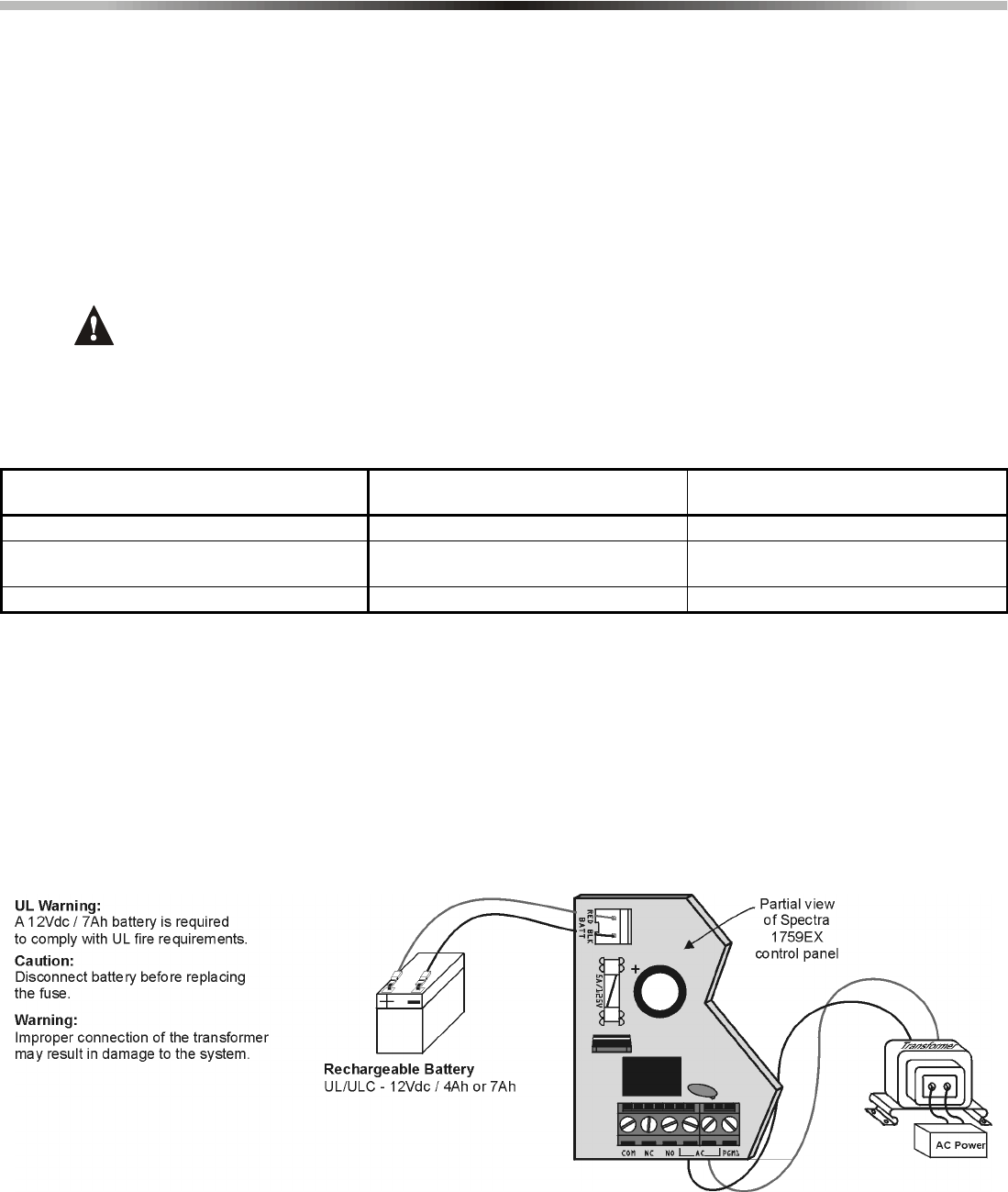
PART 2: INSTALLATION
2.1 LOCATION AND MOUNTING
Before mounting the cabinet, push the five white nylon mounting studs into the back of the cabinet. Pull all cables into the cabinet
and prepare them for connection before mounting the circuit board into the back of the cabinet. Select a centralized installation
site on the main floor that isn't easily accessible to intruders and leave at least 2in. (5cm) around the panel box to permit
adequate ventilation and heat dissipation. The installation site should be dry and close to an AC source, ground connection and
telephone line connection. Avoid installation near or in the path of strong RF fields (i.e. neon lights, computers), on or near metal
objects, circuit breaker boxes, air conditioners and heater ducts since they may cause interference and reduce sensitivity. Avoid
installing the 1759EX in the basement.
2.2 EARTH GROUND
Connect the zone and dialer ground terminals from the control panel to the metallic enclosure and cold water pipe or grounding
rod as per local electrical codes.
For maximum lightning protection, use separate earth grounds for the zone and dialer grounds as shown in
Figure 2.2 on page 5. For UL installations, the metallic enclosure must be grounded to the cold water pipe.
2.3 AC POWER
Do not use any switch-controlled outlets to power the transformer. Connect the transformer as shown in Figure 2.1 on page 4.
Use Table 1 to determine the required transformer.
2.4 BACKUP BATTERY
To provide power during a power loss, connect a 12Vdc 4Ah rechargeable acid/lead or gel cell backup battery as shown in Figure
2.1 on page 4. Use a 7Ah battery to comply with UL fire requirements. Connect the backup battery after applying AC power.
When installing verify proper polarity as reversed connections will blow the battery fuse. Also, refer to Battery Charge Current on
page 39.
2.4.1 BATTERY TEST
If the battery is disconnected or if the battery fuse is blown, a No/Low Battery failure will appear in the keypads’ Trouble Display
(see page 45). This trouble will also appear if the battery’s capacity is too low or if the voltage drops to 10.5 volts or lower while
the control panel is running on the backup battery. At 8.5 volts or lower, the panel shuts down and all outputs close.
Figure 2.1: AC Power and Backup Battery Connections
Table 1:
Transformer Requirements Table
Transformer: Amseco XP-1620 16VAC 20VA
(not verified by UL) UL: Basler Electric BE156240CAA007
16.5VAC 40VA
Spectra DC Power Supply rated at: 1.2A 1.5A
Auxiliary Supply can provide a maximum of: typ: 600mA, max: 700mA typ: 600mA, max: 700mA
Do not exceed 200mA for UL installations
Acceptable Battery Charge Currents 350mA 350mA/700mA
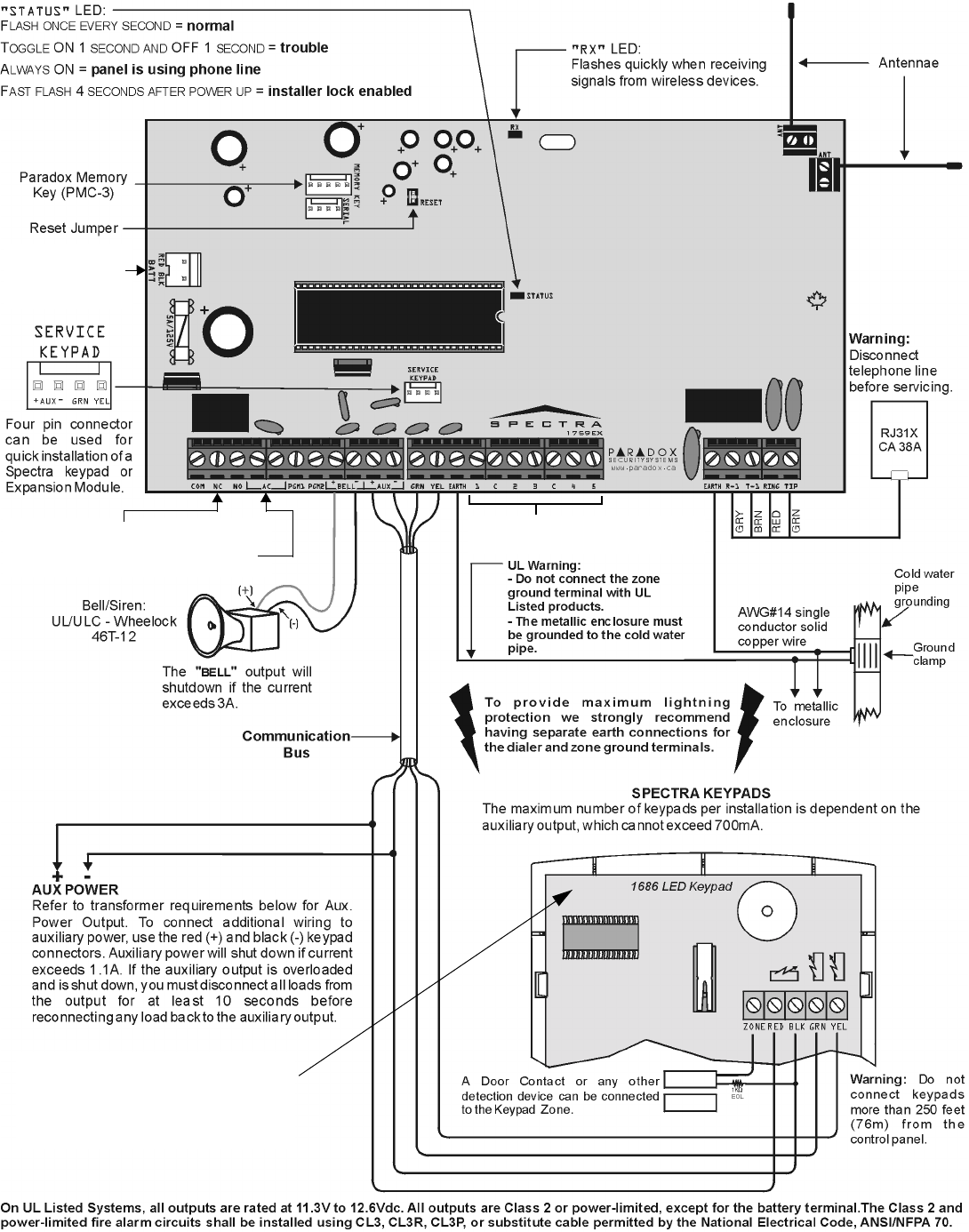
Figure 2.2: Spectra 1759EX Control Panel Overview
For the keypad’s zone, EOL and tamper
configurations, refer to Configuring The
LED Keypads on page 10.
RefertoSingleZoneInputson
page 7
Refer to AC Power
and Backup Battery
Connections on
page 4.
To connect the 5A Alarm Relay and the PGMs,
refer to Relay and PGM Connections on page 7.
To connect AC power, refer to AC Power and
Backup Battery Connections on page 4.
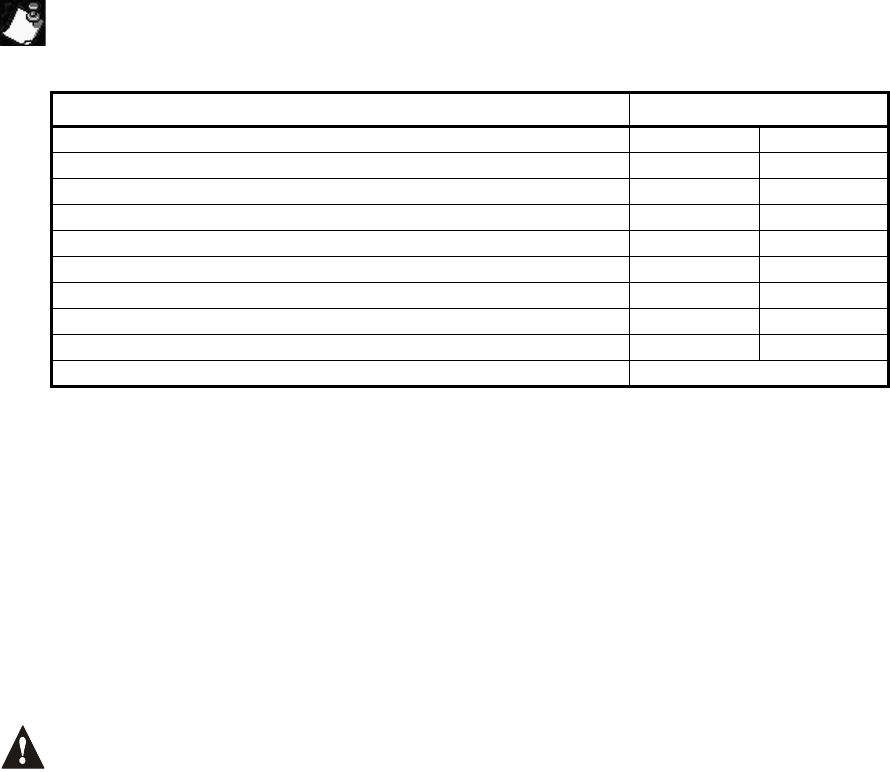
2.5 AUXILIARY POWER TERMINALS
The auxiliary power supply terminals can be used to power motion detectors, keypads and other modules or accessories in the
security system. A fuseless circuit protects the power supply against current overload and automatically shuts down if the current
exceeds 1.1A. If this occurs, the Maximum Auxiliary Current failure will appear in the keypads’ Trouble Display (see page 45).
Therefore, the combined current consumption of devices connected to the auxiliary power supply should not exceed 700mA. If
the auxiliary output is overloaded and is shut down, you must disconnect all loads from the output for at least 10 seconds before
reconnecting any load back to the auxiliary output.
Modules with the APR- prefix are compatible with the Spectra 1759EX and Digiplex. Modules with the APR3- prefix are
compatible with the Spectra 1759EX, Digiplex and DigiplexNE.
2.6 TELEPHONE LINE CONNECTION
In order to report system events to the central station, you must connect the incoming telephone company wires into the TIP and
RING connections of the control panel and then run the wires from T1 and R1 to the telephone or telephone system as shown in
Figure 2.2 on page 5.
2.7 BELL OUTPUT CONNECTION
The BELL+ and BELL- terminals power bells, sirens and other warning devices requiring a steady voltage output during an alarm.
The bell output supplies 12VDC upon alarm and can support one 30-watt or two 20-watt sirens. The bell output uses a fuseless
circuit and will automatically shut down if the current exceeds 3A. When this occurs the Maximum Bell Current failure will only
appear in the keypads’ Trouble Display (see page 45) during an alarm. If the load on the BELL terminals returns to normal, the
control panel will re-instate power to the BELL terminals during the next alarm. When connecting sirens, please verify correct
polarity. Connect the positive lead to the BELL+ terminal and the negative lead to the BELL- terminal of the control panel as
shown in Figure 2.2 on page 5.
If the BELL output is not being used, the Bell Disconnected failure will remain in the keypads’ Trouble Display
(see page 45). To avoid this connect a 1KΩresistor across the BELL terminals.
2.8 PROGRAMMABLE OUTPUT CONNECTIONS
When a specific event occurs in the system, a PGM can reset smoke detectors, activate strobe lights, open/close garage doors
and much more.
2.8.1 ALARM RELAY AND PGMS
The Spectra 1759EX control panel includes two on-board programmable outputs (PGMs). For details on how to program the
PGM, refer to PGM Programming on page 37. PGM1 can support up to 150mA while PGM2 supports up to 2.5A (see Figure 2.3
on page 7) and can be used as a strobe output (see page 38). The PGMs are limited by the power source being used. If powered
by:
•
The
AUX
terminals.
The current consumption of the
AUX
terminals cannot exceed 700mA. Therefore, whatever devices are con-
nected to the
AUX
terminals (i.e. modules and PGMs) cannot exceed 700mA combined. For example, if there are six modules con-
nected to the
AUX
terminals that are using 600mA and you wish to power the PGM using the
AUX
terminals, the PGM’s current
consumption will not 100mA.
•
An external power supply.
If using an external power supply, the current consumption cannot exceed 150mA for PGM1 and 2.5A for
PGM2. If the external power supply’s current consumption limit is less than that of the PGM it is connected to, than the current con-
sumption will not exceed the power supply’s current limit.
The Spectra 1759EX control panel also has a 5A relay. This relay can be connected as shown in Figure 2.3 on page 7. The Alarm
Relay can be programmed to follow the bell output or the activation and deactivation of the Global PGM (see Alarm Relay
Options on page 38).
Table 2:
Current Consumption Table
Modules Current Consumption
Typical Maximum
Spectra 1686H and 1686V 10-Zone LED Keypad 62mA 116mA
Spectra 1689 16-Zone LED Keypad 50mA 117mA
Spectra 1641 LCD Keypad 60mA 80mA
4-Zone Hardwire Modules (APR3-ZX4/SPC-ZX4) 12mA 12mA
8-Zone Hardwire Modules (APR3-ZX8/SPC-ZX8) 30mA 30mA
4-PGM Output Module (APR3-PGM4) 13mA 150mA
Printer Module (APR3-PRT1) 22mA 40mA
InTouch Voice-Assisted Arm/Disarm Module (APR3-ADM2) 70mA 105mA
Motion Detectors (see detector instructions for details) 10 to 50mA
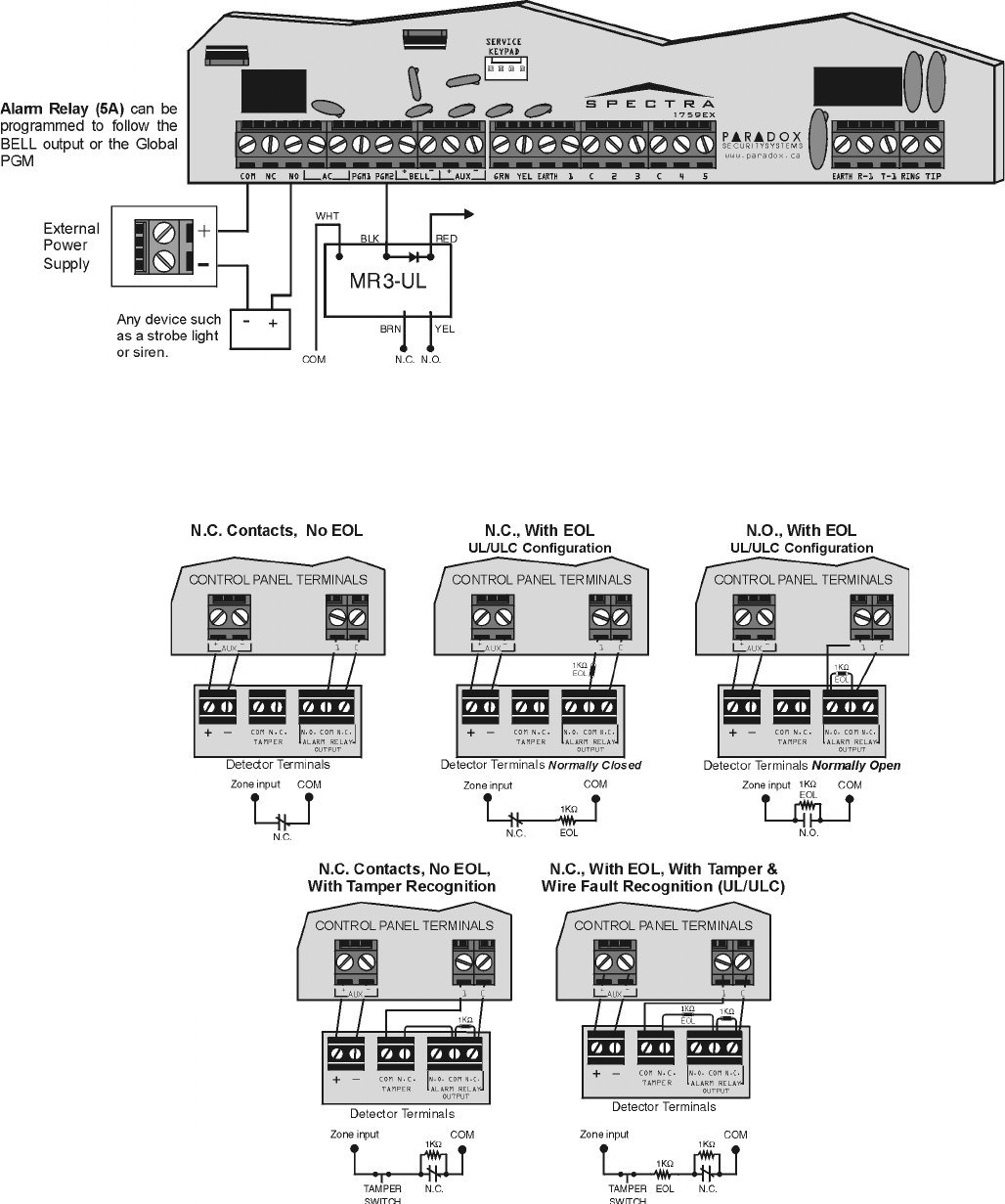
Figure 2.3: Relay and PGM Connections
2.9 SINGLE ZONE INPUTS
Detection devices such as motion detectors and door contacts are connected to the control panel's zone input terminals. Figure
2.4 (below) demonstrates single zone input terminal connections recognized by Spectra. Once connected, the associated zone's
parameters must be defined. For details refer to Zone Programming on page 14.
Figure 2.4: Single Zone Input Connections
2.10 KEYPAD AND KEYPAD ZONE CONNECTIONS
To connect the keypads to the control panel, remove the back cover and wire the GRN, YEL, RED, and BLK terminals of each
keypad to the corresponding terminals on the control panel as shown in Figure 2.2 on page 5. There is no limit to the number of
keypads that can be connected to the control panel so long as the current consumption does not surpass 700mA. For details on
Keypad Tamper Supervision see section 11.8 on page 40.
AUX+ or External Power Supply.
See Programmable Output
Connections on page 6
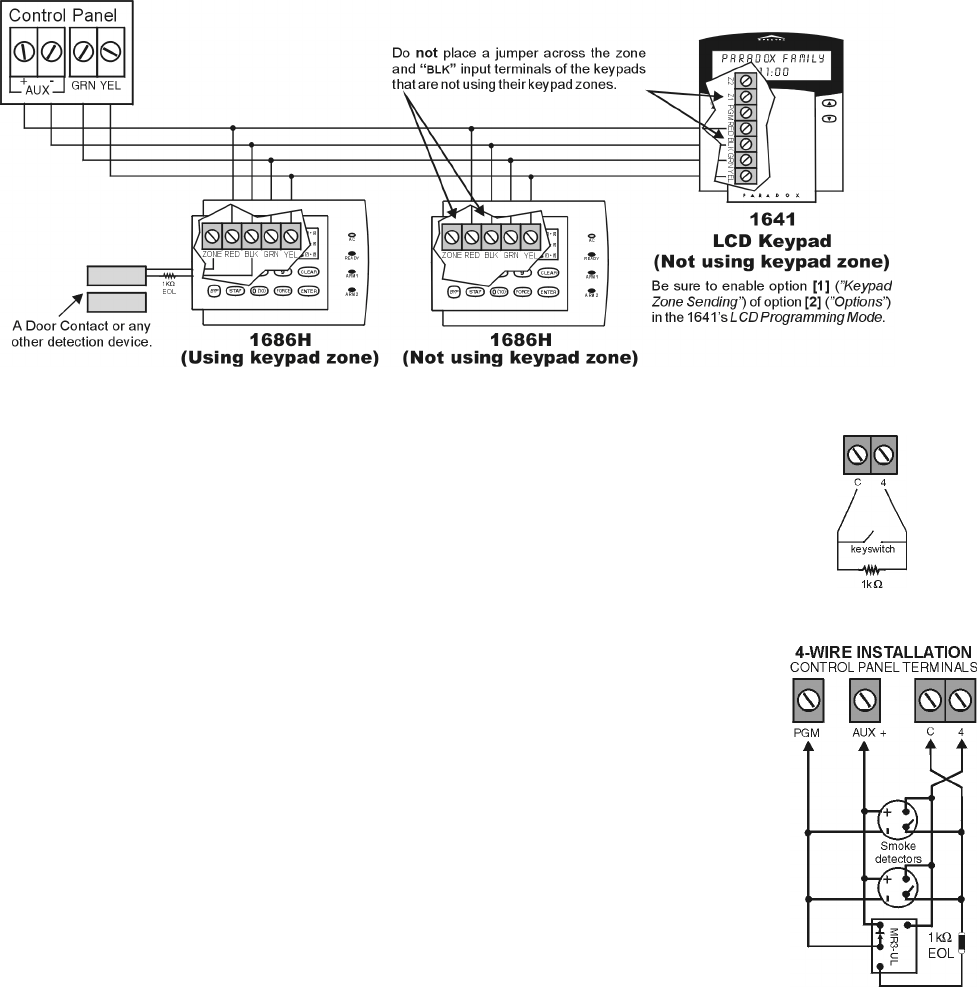
Each keypad has one zone input terminal, allowing you to connect one motion detector or door contact directly to a keypad. The
keypad can then communicate the status of the zone to the control panel. A maximum of two keypad zones can be used with
each control panel. After connecting the device, the zone's parameters must be defined. For details on zone recognition and
Zone Programming refer to page 14. Also, refer to the feature Reassign Keypad Zone 2 on page 14.
Example: A door contact located at the entry point of an establishment can be wired directly to the input terminal of the entry
point keypad instead of wiring the door contact all the way to the control panel.
Figure 2.5: Keypad Zone Connections
2.11 KEYSWITCH CONNECTIONS
Keyswitches allow users to arm or disarm a partition by pushing a button or by activating a
switch with a key. Connect the keyswitch as shown in Figure 2.6 directly to the control
panel terminals. Once a keyswitch is connected, it must be assigned to a zone and its
parameters must be programmed (see Zone Programming on page 14 and Keyswitch
Options on page 19).
2.12 FIRE CIRCUITS
When a zone is programmed as a Fire zone, the zone becomes normally open and requires
an EOL resistor. If a line short occurs or if the smoke detector becomes active, whether the
system is armed or disarmed, the control panel will generate an alarm. If a trouble occurs on a
Fire zone, the Fire Loop Trouble will appear in the keypads’ Trouble Display (see page 45) and
the control panel can transmit the Fire Loop Trouble report, if programmed, in section [206].
2.12.1 4-WIRE INSTALLATION:
Any on-board zone can be defined as a Fire Zone (see page 16) when using the 4-
wire installation. Connect the smoke detectors as shown in Figure 2.7 directly to the
control panel terminals. Program the PGM with the “[PG]/[FNC1] Key was Pressed”
Activation Event (see page 37) so the smoke detectors can be reset by pressing the
[PG]or[FNC1] key. Pressing the [PG]or[FNC1] key will interrupt power to the smoke
detectors for 4 seconds (see PGM Delay on page 38).
Figure 2.6: Keyswitch
Figure 2.7: Fire Zones
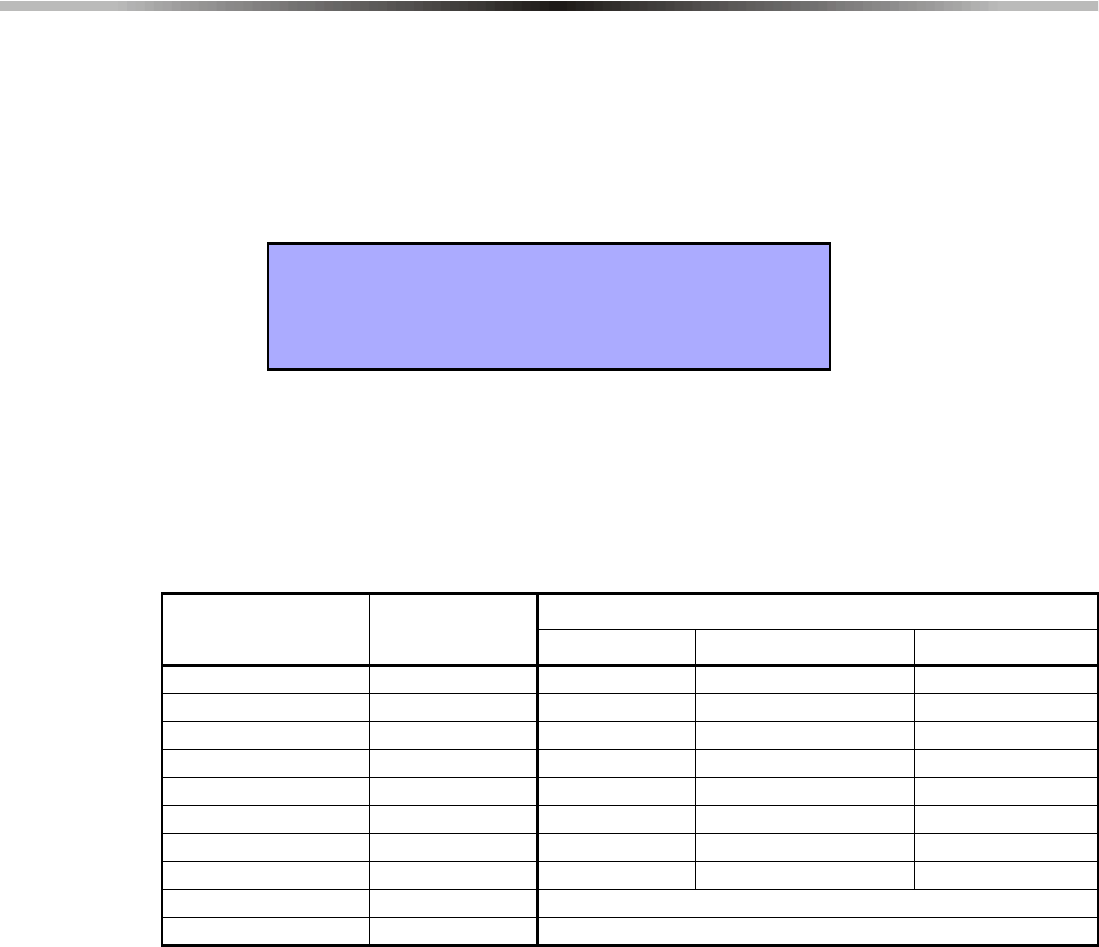
PART 3: PROGRAMMING METHODS
3.1 WINLOAD SOFTWARE FOR WINDOWS
Program the Spectra Series control panels remotely or on-site using the Winload Software for Windows®. For more information,
contact your local Paradox Distributor or visit our web site at http://www.paradox.ca. If you are using the WinLoad software, you
must program the features explained on pages 43 and 44.
3.2 PROGRAMMING USING A KEYPAD
Use the supplied Spectra 1759EX Programming Guide to keep track of which sections were programmed and how. We
recommend you read this entire manual before you begin programming.
3.2.1 SINGLE DIGIT DATA ENTRY METHOD (HEXADECIMAL AND DECIMAL)
Single Digit Data Entry is used in all sections except those specified in the Feature Select Programming Method. After
entering the programming mode as described in the shaded box above, some sections will require that you enter
Decimal values from 000 to 255. Other sections will require that you enter Hexadecimal values from 0toF.The
required data will be clearly indicated in this manual as well as in the Spectra 1759EX Programming Guide. When
entering the final digit in a section, the control panel will automatically save and advance to the next section. Except
sections 001 to 016, after entering the first two digits the control panel will switch to Feature Select Programming.
3.2.2 FEATURE SELECT PROGRAMMING METHOD
After entering sections [001] to [016], [126] to [138], and [302] to [348], each option from [1] to [8] represents a specific
feature or option. Press the key corresponding to the desired option and the corresponding light will illuminate or the
option number will appear in the LCD display. This means the option is on. Press the key again to extinguish the
corresponding light or remove the digit from the LCD display, thereby, turning off the option. Press the [FORCE]key to
set all 8 options to off. Press the keys until the current section’s options are set. When the options are set, press the
[ENTER]key to save and advance to the next section.
3.2.3 DATA DISPLAY MODE (LED KEYPADS ONLY)
In the Data Display Mode you can view the programmed contents of each section one digit at a time. After entering the
desired 3-digit section (see step 3 of the shaded box on page 9), press the [ENTER]key to access the Data Display
Mode (will not function with sections using Multiple Feature Select Programming).
How Do I Enter Programming Mode?
STEP 1: Press [ENTER]
STEP 2: Enter your [INSTALLER CODE] (default: 000000)
STEP 3: Enter 3-digit [SECTION] you wish to program
STEP 4: Enter required [DATA]
Table 3:
Decimal and Hexadecimal Programming Table
Value or Action What Do I Press? What Do I See?
10-Zone LED 16-Zone LED LCD
Values1to9 [1]to[9]
[1]
to
[9] [1]
to
[9] [1]
to
[9]
A (hexa only) [0] [0 (10)] [10] 0
B (hexa only) [STAY][STAY][11] B
C (hexa only) [BYP][BYP] [12] C
D (hexa only) [MEM][MEM] [13] D
E (hexa only) [TBL]/[TRBL][TBL] [14] E
F (hexa only) [PG]/[FNC1] [PG] [15] F
Exit Without Saving [CLEAR][ENTER] flashes [ARM1] & [STAY1] flash “SECTION [ ]”
Insert Blank Digit [FORCE] Displays next digit or next section
Save Data [ENTER] Advances to the next section
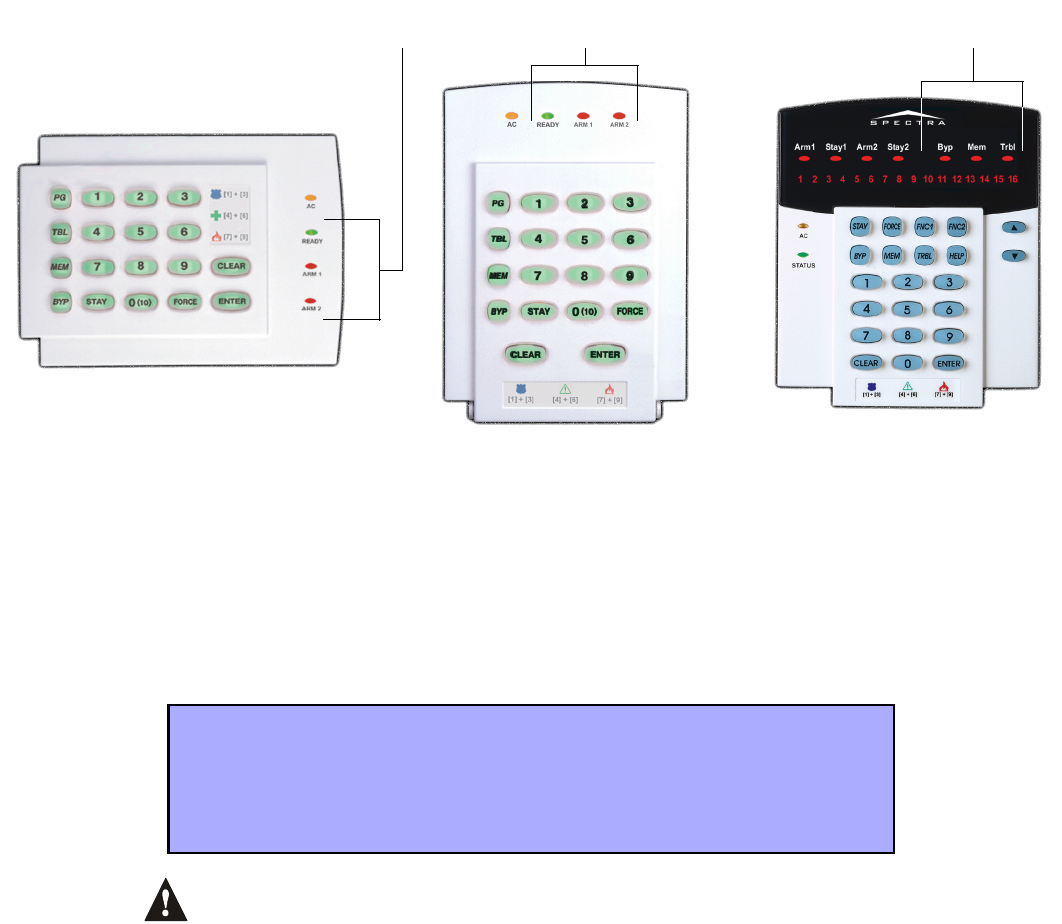
Figure 3.1: Data Display Mode (LED Keypads Only)
3.3 CONFIGURING THE LED KEYPADS
Depending on the version of the keypad, two methods can be used to configure the LED keypads (1686H, 1686V and 1689):
3.3.1 CONFIGURING THE 1686H, 1686V AND 1689 KEYPADS V2.0 OR HIGHER
The keypad’s zone number, EOL definition and tamper switch are programmed through the control panel’s
programming mode. To do so:
PLEASE NOTE: After two minutes, the keypad exits programming mode.
Key [1] - Keypad Zone Selection
Key [1] determines whether the keypad’s zone is Keypad Zone 1 or Keypad Zone 2. When key [1] is OFF (not
illuminated), the keypad’s zone is Keypad Zone 1. When key [1] is ON (illuminated), the keypad’s zone is Keypad Zone 2.
Key [1] OFF - Keypad Zone 1 (default)
Key [1] ON - Keypad Zone 2
Key [2] - EOL Definition
Key [2] determines the keypad zone’s EOL definition. When key [2] is OFF (not illuminated), EOL is disabled and the
keypad zone will use the on-board EOL resistor. When key [2] is ON (illuminated), EOL is enabled and the keypad
zone requires that an external EOL resistor be connected (refer to Spectra 1759EX Control Panel Overview on page 5
for more details).
Key [2] OFF - EOL disabled
Key [2] ON - EOL enabled (default)
Key [3] - On-Board Tamper
Key [3] enables or disables the keypad’s on-board tamper switch. When key [3] is OFF (not illuminated), the tamper
switch is disabled. When key [3] is ON (illuminated), the tamper switch is enabled.
Key [3] OFF - On-board tamper switch disabled
Key [3] ON - On-board tamper switch enabled
How Do I Configure The Keypad?
STEP 1: Press [ENTER]
STEP 2: Enter your [INSTALLER CODE] (default: 000000)
STEP 3: Press the [PG] (1686H/V) / [FNC1] (1689) key and hold it for 3 seconds.
STEP 4: Press the desired key ([1] to [3]. See below)
STEP 5: Press [ENTER] to exit programming mode
To access the Data Display Mode, press the [enter] key after entering a section and before entering any data. The three LEDs as indicated will begin
to flash indicating that you are in the Data Display Mode.
Each time the [ENTER]key is pressed, the keypad will display the next digit in the current section and will continue through all the following sections
one digit at a time without changing the programmed values. Not available for sections using the Multiple Feature Select Method. Press the [CLEAR]
key at any time to exit the Data Display Mode.
1686H
1686V 1689
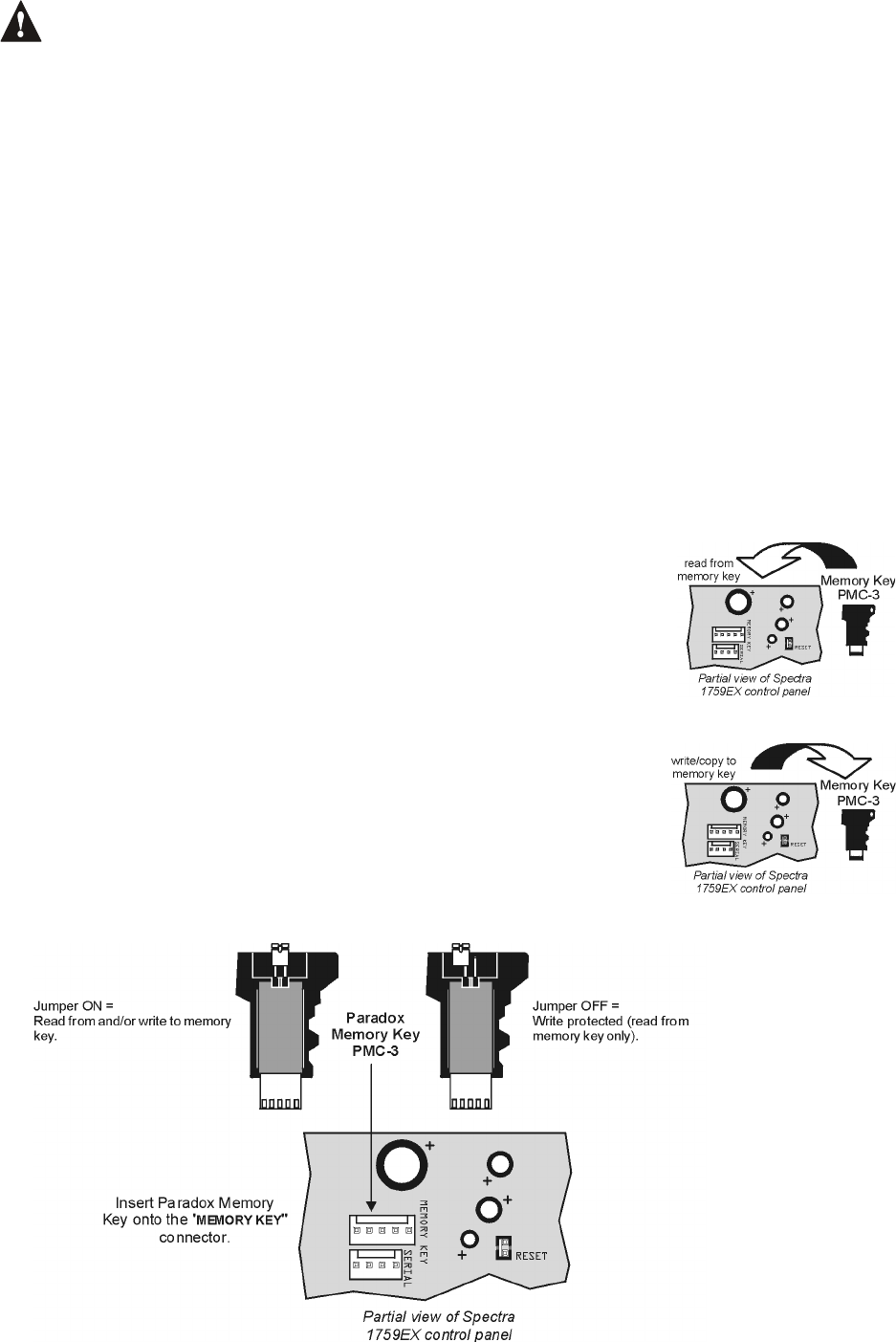
PLEASE NOTE: The keypad can be ordered with or without a tamper switch. If the keypad has no
tamper switch, key [3] will be OFF by default. If the keypad has a tamper switch, key [3] will be ON by
default.
3.3.2 CONFIGURING THE 1686H, 1686V AND 1689 KEYPADS PRIOR TO V2.0
The keypad’s zone number and EOL definition are defined through the jumpers located on the PCB board. The
jumpers are as follows:
J1 - Keypad Zone Select Jumper
Jumper J1 determines whether the keypad’s zone is Keypad Zone 1 or Keypad Zone 2. When the jumper is OFF, the
keypad’s zone is Keypad Zone 2. When the jumper is ON, the keypad’s zone is Keypad Zone 1.
J1 OFF - Keypad Zone 2
J1 ON - Keypad Zone 1
J2 - EOL Definition Jumper
Jumper J2 determines the keypad zone’s EOL definition. When the jumper is OFF, EOL is disabled and the keypad zone
uses the on-board EOL resistor. When the jumper is ON, EOL is enabled and the keypad zone requires that an external
EOL resistor be connected (refer to Spectra 1759EX Control Panel Overview on page 5 and more details).
J2 OFF - EOL disabled
J2 ON - EOL enabled
3.4 PROGRAMMING USING A PARADOX MEMORY KEY
Copy the sections of one Spectra control panel into the Paradox Memory Key (PMC-3). Then copy the contents of the Memory
Key into as many Spectra control panels as needed. Each panel is programmed in less than 3 seconds.
Download to DESTINATION Control Panel
1) Remove AC and battery power from the control panel.
2) Place the Memory Key on the serial connector labeled KEY of the Spectra Control Panel that is
to receive the contents of the Memory Key.
3) Reapply AC and battery power.
4) In installer programming mode, enter section [900], then press [ENTER]to acknowledge.
5) When the keypad emits a Confirmation Beep, remove the Memory Key.
6) Enter section [750] to reprogram the modules with the information downloaded from the
Paradox Memory Key.
Copy to Memory Key from SOURCE Control Panel
1) Remove AC and battery power from the control panel.
2) Place Memory Key on the serial connector labeled KEY of the Spectra Control Panel that you
want to copy. Make sure the write protect jumper of the Memory Key is on.
3) Reapply AC and battery power.
4) In installer programming mode, enter section [902], then press [ENTER]to acknowledge.
5) When the keypad emits a Confirmation Beep, remove the Memory Key. Remove the Memory
Key’s jumper if you do not wish to accidentally overwrite its contents.
Figure 3.2: Paradox Memory Key
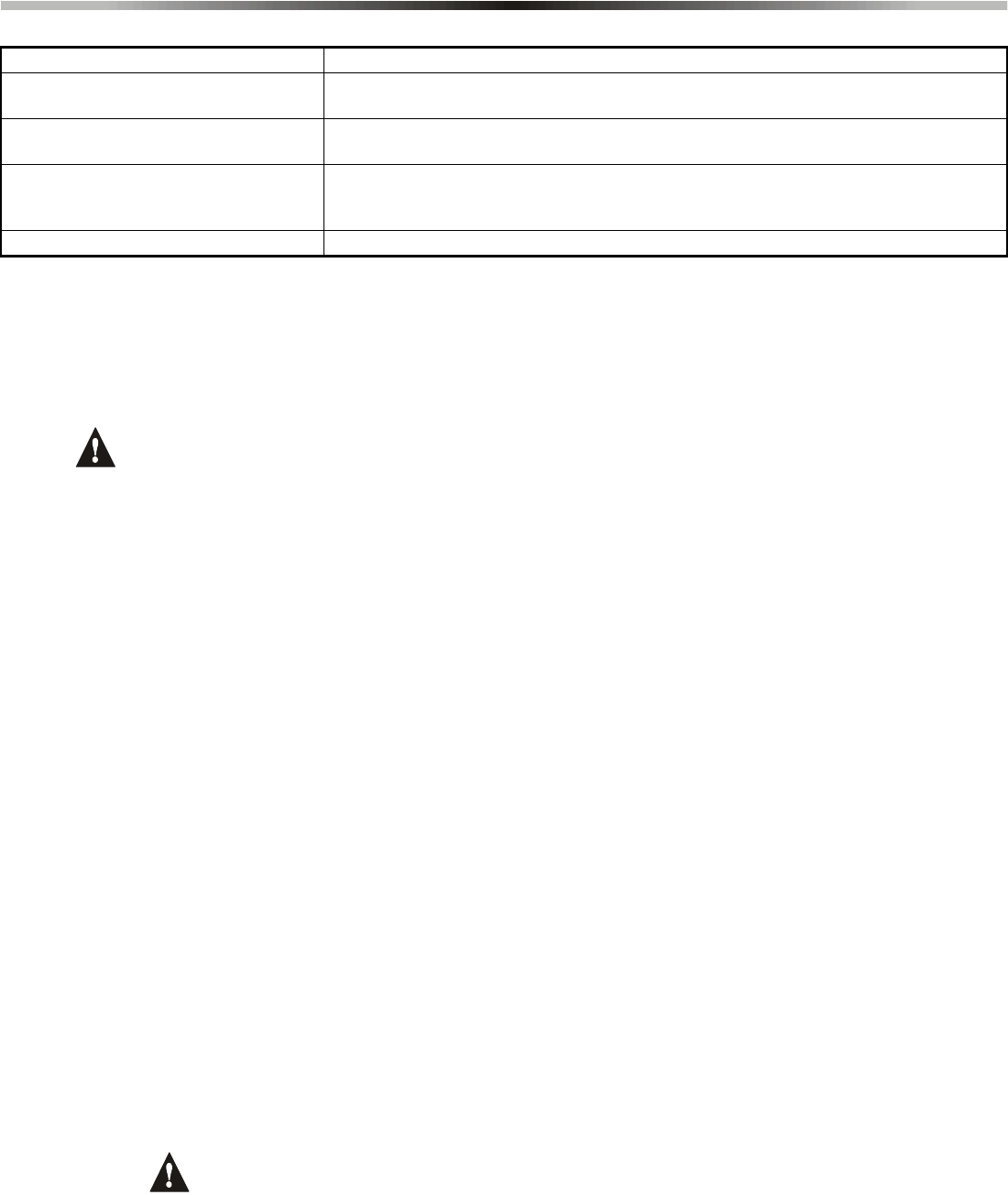
PART 4: ACCESS CODES
The Spectra 1759EX control panel supports the following access codes:
4.1 ACCESS CODE LENGTH
Section [127]: System Options
Option [2] OFF = 6-Digit Access Codes
Option [2] ON = 4-Digit Access Codes (default)
All access codes can be set to lengths of either 4- or 6-digits. When the 4-digit option is selected, entering a 4-digit code will allow
access. Using the 6-digit option, entering 6 digits is required to allow access.
If the Access Code Length is changed from four digits to six digits when access codes have already been
programmed, the control panel will automatically add the last 2 digits by using the first 2 digits. For example, if
the access code is 1234 and you switch to 6 digits, the code will become 123412. Be sure to verify the access
codes after switching from 4-digit access codes to 6-digit codes. When switching from six digits to four digits,
the control panel will simply remove the final two digits of the access code. For example, 123456 will become
1234.
4.2 INSTALLER CODE (Default: 000000)
The Installer Code is used to enter the control panel's programming mode (see page 9), which allows you to program all the
features, options and commands of the control panel. The Installer Code can be 4- or 6-digits in length (see above) where each
digit can be any value from 0 to 9. The Installer Code cannot be used to program Master Code 1,Master Code 2 or User Access
Codes. To program the Installer Code press:
[ENTER]+[CURRENT INSTALLER CODE]+[281] +new 4- or 6-digit Installer Code
4.3 SYSTEM MASTER CODE (Default: 123456)
The Installer Code canbeusedtoprogramtheSystem Master Code. With the System Master Code a user can use any arming
method and can program any User Access Code, but not the User Code Options.TheSystem Master Code canbe4or6digits
in length (see section 4.1), where each digit can be any digit from 0 to 9. To change the System Master Code press:
[ENTER]+[INSTALLER CODE]+[301] +new 4- or 6-digit System Master Code
4.4 USER CODE OPTIONS
Sections [302] to [348]: Options [1] to [7]
The User Code Options define which arming methods each user can use to arm or disarm the system. Regardless of these
settings, all users can Regular Arm assigned partitions and all users except those with the Arm Only option can disarm an
assigned partition, regardless of how it is armed. Select one or more of the options described on the following pages for each
User Access Code, where sections [302] to [348] represent User Access Codes 002 to 048. For information on how User Access
Codes are programmed, please refer to page 46.
4.4.1 PARTITION 1ASSIGNMENT
Sections [302] to [348]: User Codes 002 to 048
Option [1] OFF = Deny access to partition 1
Option [1] ON = User code has access to partition 1 (default)
If Partitioned (see page 39), user codes with this option enabled can arm and disarm partition 1.
If the system is not partitioned, you must assign partition 1 to the User Access Code. Otherwise, the
User Access Code will be considered disabled.
INSTALLER CODE: Used to program all control panel settings except User Access Codes.
SYSTEM MASTER CODE (001) Provides full access. Arm and disarm using any method described in the User Code Options
in section 4.4 as well as program the User Access Codes.
Master Code 1 (002): Permanently assigned to partition 1. Same as a regular User Code except it can also
program access codes for User Codes assigned to partition 1.
Master Code 2 (003): Permanently assigned to partition 2. Same as a regular User Code except it can program
access codes for User Codes assigned to partition 2. If the system is not partitioned Master
Code 002 will be assigned to partition 1.
45 User Codes (004 to 048): Can arm and disarm as per User Code Options in section 4.4.
4.4.2 PARTITION 2ASSIGNMENT
Sections [302] to [348]: User Codes 002 to 048
Option [2] OFF = Deny access to partition 2 (default)
Option [2] ON = User code has access to partition 2
If the system is partitioned (see page 39), user codes with this option enabled can arm and disarm partition 2. If the
system is not partitioned, the control panel ignores this option.
4.4.3 BYPASS PROGRAMMING
Sections [302] to [348]: User Codes 002 to 048
Option [3] OFF = Bypass Programming Disabled
Option
[3]
ON = Bypass Programming Enabled (default)
User codes with this option enabled can perform Bypass Programming in assigned partitions.
4.4.4 STAY ARMING
Sections [302] to [348]: User Codes 002 to 048
Option [4] OFF = Stay Arming Disabled
Option
[4]
ON = Stay Arming Enabled for selected User Code (default)
User codes with this option enabled can Stay Arm assigned partitions.
4.4.5 FORCE ARMING
Sections [302] to [348]: User Codes 002 to 048
Option [5] OFF = Force Arming Disabled (default)
Option [5] ON = Force Arming Enabled for selected User Code
User codes with this option enabled can Force Arm assigned partitions.
4.4.6 ARM ONLY
Sections [302] to [348]: User Codes 002 to 048
Option [6] OFF = Arm Only Disabled (default)
Option [6] ON = Arm Only Enabled for selected User Code
The user code with this option enabled can arm assigned partitions, but cannot disarm any partitions. The type of
arming is dependent on the other User Code Options selected. Please note that with the Arm Only option, the user can
cancel a recently armed system by re-entering the access code before the end of the Exit Delay.
4.4.7 PGM ACTIVATION
Sections [302] to [348]: User Codes 002 to 048
Option
[7]
OFF = User Code follows User Code Options and can activate a PGM (default)
Option [7] ON = User Code can activate a PGM only
With option [7] off, entering the access code will arm or disarm according to the programmed User Code Options as
well as activate or deactivate a PGM. The appropriate PGM Activation/Deactivation Event must also be programmed
(see page 37). With option [7] on, the control panel will ignore all other User Code Options. Therefore, entering the
access code will only activate or deactivate the PGM.
4.5 LOCK MASTER CODE
Section [127]: System Options
Option [4] OFF = Lock System Master Code Disabled (default)
Option [4] ON = Lock System Master Code Enabled
With this feature enabled, the control panel will lock the System Master Code (001). This means that the System Master Code
cannot be deleted, but it can be changed.
4.6 DURESS CODE
Section [127] = System Options
Option [6] OFF = Duress Code Disabled (default)
Option [6] ON = User Code 048 becomes a Duress code
With this feature enabled, User Code 048 becomes a Duress Code. When forced to arm or disarm their system, users can enter
a Duress Code (User Code 048) to arm or disarm the system which can immediately transmit a silent alert to the Central Station,
transmitting the duress report code programmed in section [196].
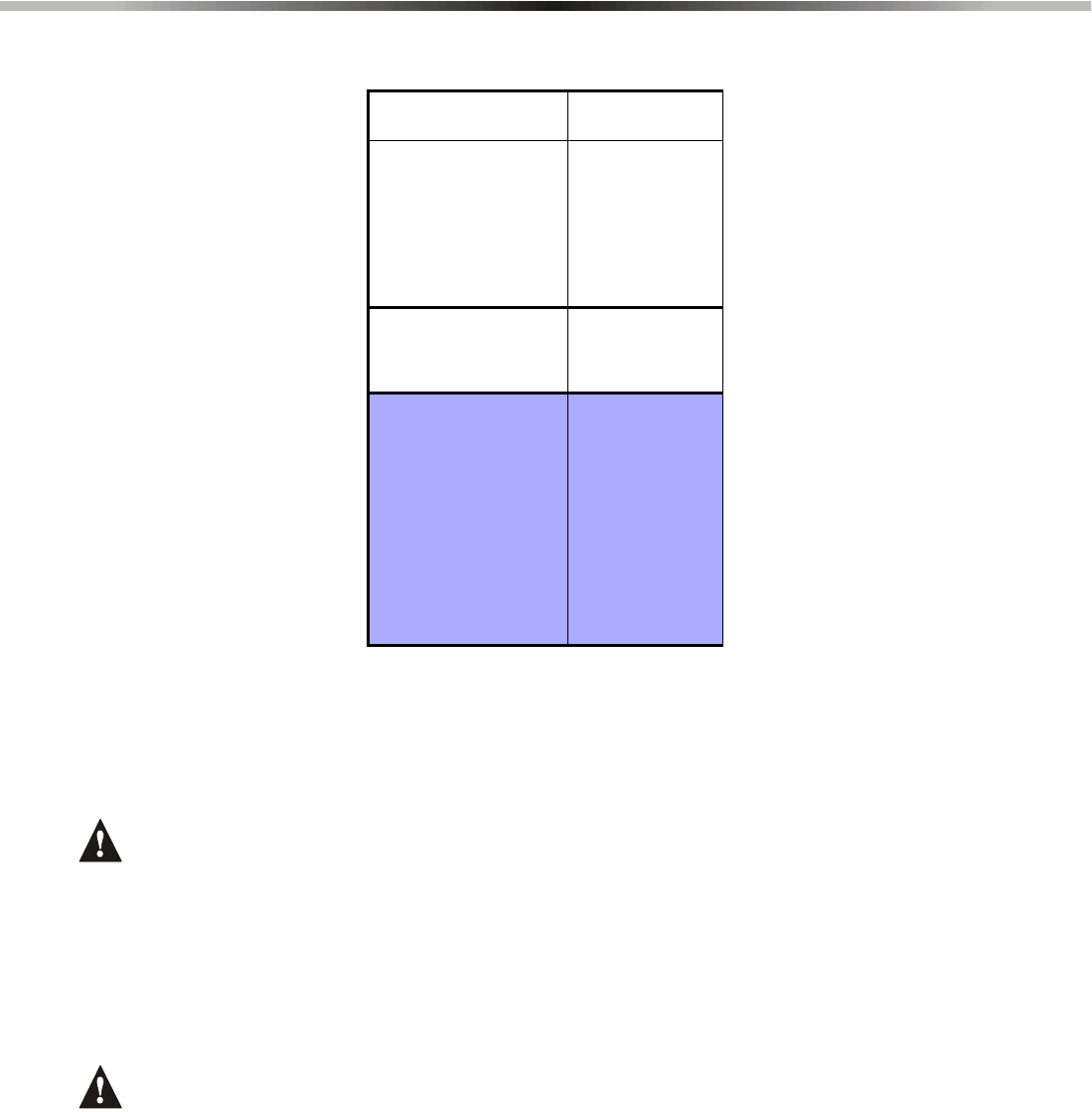
PART 5: ZONE PROGRAMMING
The Spectra 1759EX control panel’s zone assignment depends on where the detection devices are connected (see Table 4).
5.1 WHAT IS AN EXPANSION INPUT?
An expansion input allows you to connect modules to the system to increase the number of zones available up to 15 zones. Each
hardwired input on a zone expansion bus module or wireless transmitter can be assigned to an expansion input. The expansion
inputs can be used in any combination. For example, 5 wireless transmitters and 3 hardwire inputs can be assigned to the
expansion inputs. Spectra control panels cannot support more than eight expansion inputs. Refer to the appropriate module’s
Instruction Sheet for details.
Do not assign inputs from different modules to the same expansion input.
5.2 REASSIGN KEYPAD ZONE 2
Section [126]: General Options
Option [7] OFF = Reassign Keypad Zone 2 Disabled (default)
Option [7] ON = Reassign Keypad Zone 2 Enabled
Reassign Keypad Zone 2 changes the keypad zone into an expansion input. In Table 4 above, the effects of enabling this feature
are shown. For example, when option [7] is enabled, Zone 4 moves to Expansion Input 1 (see Table 5 on page 15). Then, you are
able to use Expansion Input 1.
When Reassign Keypad Zone 2 is enabled, the Keypad Tamper Supervision (see page 40) for keypad zone 2 is
lost. Keypad Tamper Supervision will ONLY function on Keypad Zone 1.
Table 4:
Zone Recognition Table
Device connected to
which input? 1759EX
Control Panel
Input 1 = Zone 1
Input 2 = Zone 2
Input 3 = Zone 3
Input 4 = Zone 4
Input 5 = Zone 5
Keypad
Zone 1 = Zone 6
Zone 2 = Zone 7
Expansion
Input 1 = Zone 8
Input 2 = Zone 9
Input 3 = Zone 10
Input 4 = Zone 11
Input 5 = Zone 12
Input 6 = Zone 13
Input 7 = Zone 14
Input 8 = Zone 15
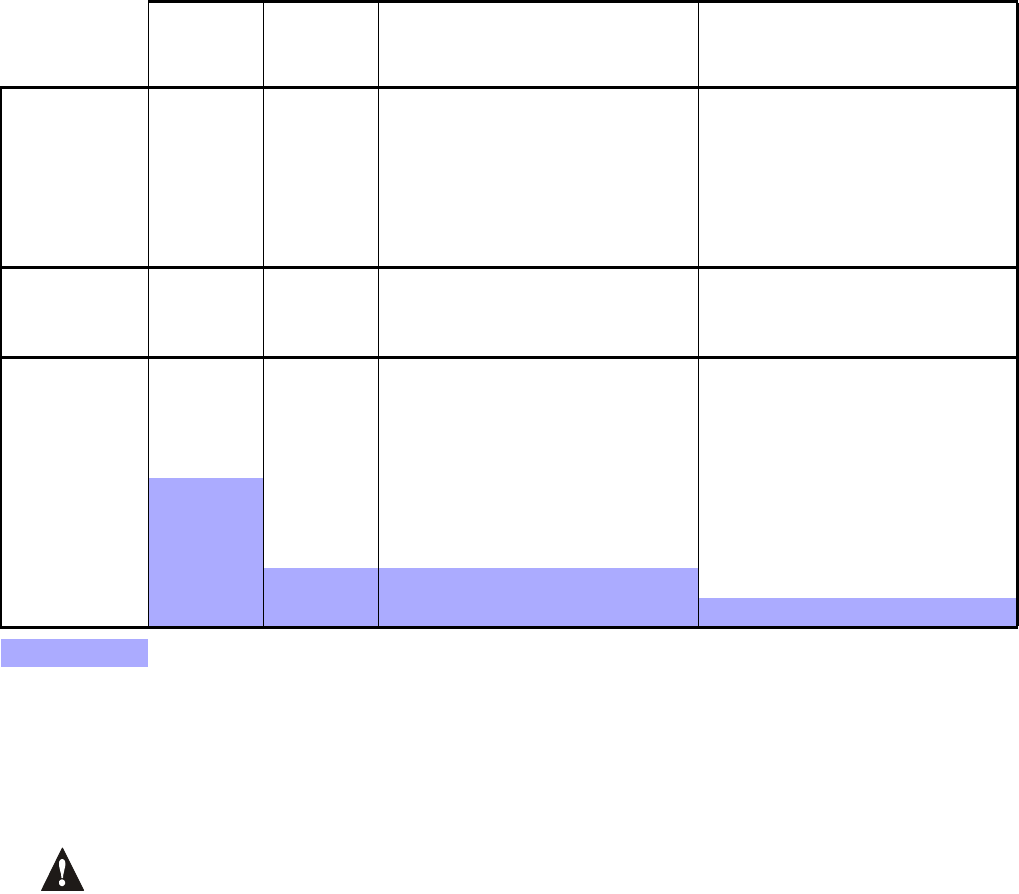
5.3 REASSIGN ZONES TO EXPANSION INPUTS
Section [126]: General Options
Option [8] OFF = Reassign Zones to Expansion Inputs Disabled (default)
Option [8] ON = Reassign Zones to Expansion Inputs Enabled
Reassign Zones to Expansion Inputs changes the zone numbering to increase the number of expansion inputs that can be
displayed on 10-Zone LED Keypads. In installations that require using mostly the expansion inputs, such as using wireless
zones, the 10-Zone LED Keypads may be unable to display some of the zones. In the following table, the effects of enabling this
feature and Reassign Keypad Zone 2 ( see section 5.2 on page 14) are shown:
5.4 ZONE PROGRAMMING
After connecting a hardwired detection device to one of the control panel's or zone expansion bus module’s input terminals or
after setting up any wireless transmitters, define the associated zone's parameters. The Zone Parameters define the type of
zone, the zone's partition assignment and how the control panel will react when an alarm condition occurs on that zone. These
Zone Parameters are programmed into one section as detailed in Figure 5.1 on page 16.
Only the control panel’s on-board inputs can be defined as a Fire, Delayed Fire or a Keyswitch zone. The on-
board zones are zones 01 to 05.
Table 5:
Zone Display with 10-Zone LED Keypad
Option [8]:
OFF Option [8]:
ON
Option [8]: ON and
Option [7]: OFF (Reassign Keypad Zone 2)
Option [8]: ON and
Option [7]: ON (Reassign Keypad Zone 2)
1759EX 1759EX 1759EX 1759EX
Control Panel
Input 1 = Zone 1 Zone 1 Zone 1 Zone 1
Input 2 = Zone 2 Zone 2 Zone 2 Zone 2
Input 3 = Zone 3 N/A N/A N/A
Input 4 = Zone 4 N/A N/A N/A
Input 5 = Zone 5 N/A N/A N/A
Keypad
Zone1= Zone 6 Zone 3 Zone 3 Zone 3
Zone2= Zone 7 Zone 4 Zone 4 N/A
Expansion
Input 1 = Zone 8 Zone 5 Zone 5 Zone 4
Input 2 = Zone 9 Zone 6 Zone 6 Zone 5
Input 3 = Zone 10 Zone 7 Zone 7 Zone 6
Input 4 = Zone 11 Zone 8 Zone 8 Zone 7
Input 5 = Zone 12 Zone 9 Zone 9 Zone 8
Input 6 = Zone 13 Zone 10 Zone 10 Zone 9
Input 7 = Zone 14 Zone 11 Zone 11 Zone 10
Input 8 = Zone 15 Zone 12 Zone 12 Zone 11
= not displayed on 10-Zone LED Keypads
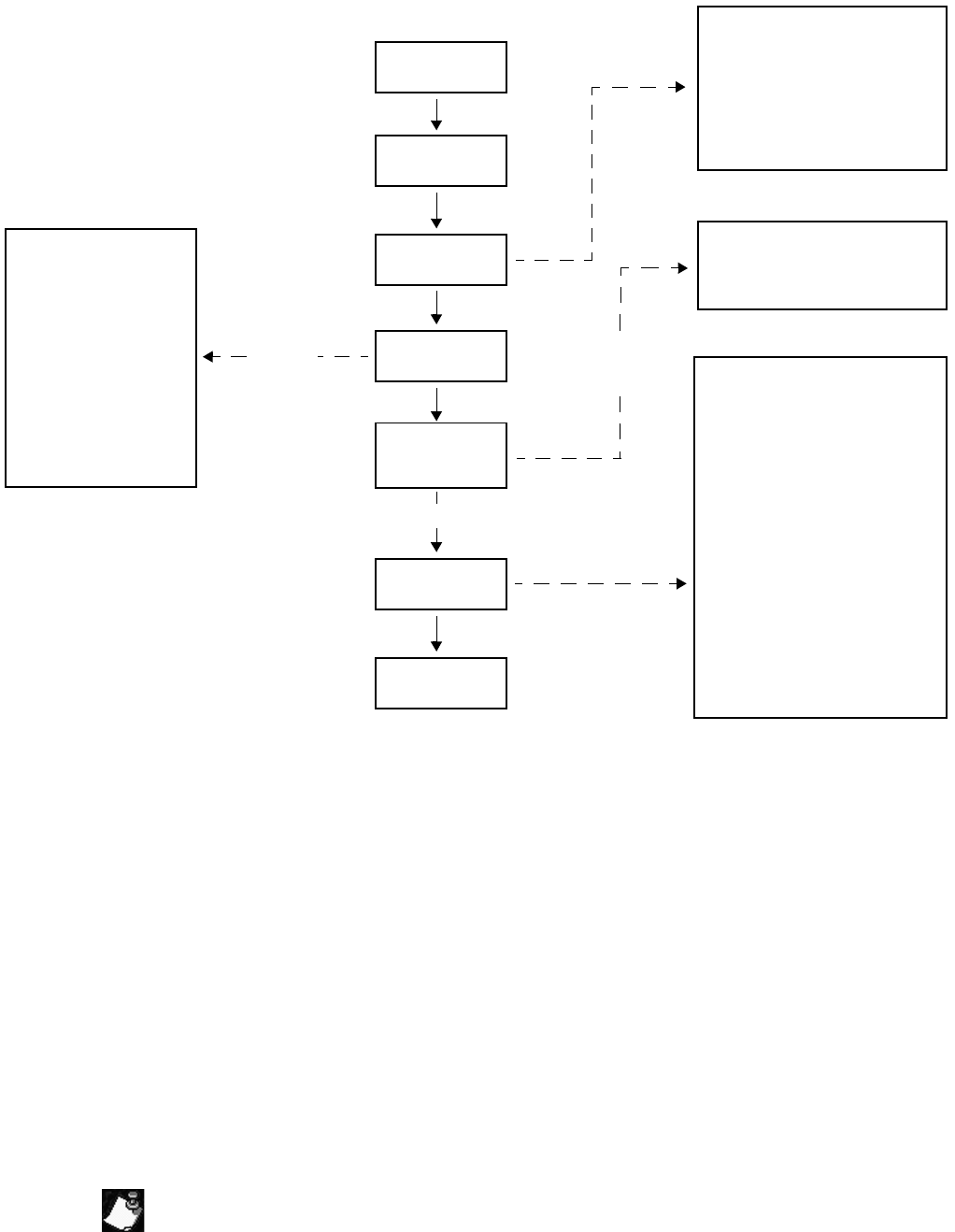
Figure 5.1: Spectra Zone Programming
5.5 ZONE DEFINITIONS
As demonstrated in Figure 5.1, sections [001] to [015] represent zones 1 through 15 respectively, where the first digit in each of
these sections represents the zone's definition. Also, refer to Zone Speed on page 20. To disable a zone, clear the contents of
the section corresponding to the desired zone by pressing the [FORCE]key 3 times and pressing [ENTER]. There are 9 available
Zone Definitions, which are described as follows.
5.5.1 ENTRY DELAY 1
Sections [001] to [015]: Zones 1 to 15, First Digit = 1
When the system is armed and a zone defined with Entry Delay 1 opens, the control panel will generate an alarm after
the programmed Entry Delay 1 Timer elapses. This is to provide users with enough time to enter the protected area
and disarm the system. To program the Entry Delay 1 Timer, key in the desired 3-digit delay value (000 to 255
seconds, Default = 45 seconds) into section [069]. Entry Delay zones are commonly used at the entry/exit points of the
protected area (i.e. front/back door, garage, etc.). Using different Entry Delays (see Entry Delay 2) is useful when, for
example, one entry point requires a longer delay than the other entry point or in a partitioned system where each
partition may require a different Entry Delay.
5.5.2 ENTRY DELAY 2
Sections [001] to [015]: Zones 1 to 15, First Digit = 2
Entry Delay 2 zones are identical to the Entry Delay 1 zones (see section 5.5.1), except it uses a separate Entry Delay
Timer. To program the Entry Delay 2 Timer, key in the desired 3-digit delay value (000 to 255 seconds, Default = 45
seconds) into section [070].
This timer is also used as the Stay Delay timer (see section 7.2).
Zone Definitions
1-Entry Delay 1
2-Entry Delay 2
3-Follow
4-Instant
5-24Hr. Burglary
6-24Hr. Buzzer
Additional definitions for
on-board terminals:
7-Keyswitch
8-24Hr. Fire
9-24Hr. Delayed Fire
Press the
[ENTER]key
Enter the
[INSTALLER CODE]
Key in 3-digit
[SECTION]
Zone Definition
First Digit
Zone Partition
Assignment
Second Digit
Zone Options
Feature Select
Press [ENTER]
[001] =Zone1 [009] =Zone9
[002] =Zone2 [010] =Zone10
[003] =Zone3 [011] =Zone11
[004] =Zone4 [012] =Zone12
[005] =Zone5 [013] =Zone13
[006] =Zone6 [014] =Zone14
[007] =Zone7 [015] =Zone15
[008]=Zone8
Zone Partition Assignment
1-Zone Assigned to Partition 1
2-Zone Assigned to Partition 2
3-Zone Assigned to both Partitions
Zone Options
[1] Auto Zone Shutdown Enabled
[2] Bypass Enabled
[3] Stay Zone
[4] [5] Zone Alarm Type
OFF OFF Audible Alarm (steady)
OFF ON Audible Alarm (pulsed)
ON OFF Silent Alarm
ON ON Generates only a report
[6] Intellizone
[7] Delay alarm transmission
[8] Force Zone
Keyswitch Options
[1] OFF= Maintained
ON = Momentary
[2] OFF = Regular Arm
ON = Stay Arm
Keypads beep twice
Select
one Select
one
5.5.3 FOLLOW ZONES
Sections [001] to [015]: Zones 1 to 15, First Digit = 3
When an armed Follow Zone opens, the control panel will immediately generate an alarm, unless an Entry Delay zone
opens first:
• If an armed Follow Zone opens after an Entry Delay zone opens, the control panel waits until the Entry Delay Timer
has elapsed before generating an alarm.
• If an armed Follow Zone opens after more than one Entry Delay zone opens, the control panel will wait until the
Entry Delay Timer of the zone that opened first has elapsed.
This feature is commonly used when a motion detector is protecting the area occupied by the entry point keypad. This
will prevent the motion detector from causing an alarm when a user enters through the entry point to disarm the
system.
5.5.4 INSTANT ZONES
Sections [001] to [015]: Zones 1 to 15, First Digit = 4
When an armed Instant Zone opens, the control panel immediately generates an alarm. Instant Zones are commonly
used for windows, patio doors, skylights and other perimeter type zones.
5.5.5 24HR.BURGLARY ZONES
Sections [001] to [015]: Zones 1 to 15, First Digit = 5
Whenever a 24Hr. Burglary Zone opens, whether the system is armed or disarmed, the control panel will immediately
generate an alarm.
5.5.6 24HR.BUZZER
Sections [001] to [015]: Zones 1 to 15, First Digit = 6
Whenever a 24Hr. Buzzer Zone opens, whether the zone is armed or disarmed, the control panel sets off the keypads’
buzzers to indicate that the zone was breached. The control panel will report the alarm, but will not enable the bell/
siren output. Enter any valid access code on the keypad to stop the buzzer. This zone definition is particularly useful
when a user wishes to be notified when something such as a safe or locker within the home has been accessed (i.e. a
child accessing a valuable collection).
5.6 EXCLUSIVE ZONE DEFINITIONS
The following three zone definitions can only be used for devices connected directly to the control panel’s on-board input
terminals. When a zone is programmed as a Keyswitch Zone, the control panel will ignore all other Zone Options. When a zone is
programmed as a Standard Fire Zone or Delayed Fire Zone, the control panel will ignore the Zone Options that may have been
programmed, except Auto Zone Shutdown. Wireless devices and devices connected to the zone expansion bus modules cannot
be programmed with these definitions.
5.6.1 KEYSWITCH ZONE
Sections [001] to [005]: Zones 1 to 5, First Digit = 7
Connecting a keyswitch to a zone allows users to arm the system by pressing a button or by turning a switch on or off
with a key. Please refer to Keyswitch Connections on page 8 and to Keyswitch Options on page 19.
5.6.2 STANDARD 24HR.FIRE ZONE
Sections [001] to [005]: Zones 1 to 5, First Digit = 8
Whenever a Standard 24Hr. Fire Zone opens, whether it is armed or disarmed, the control panel will generate the
following:
• The control panel can send the corresponding Alarm Report Code from sections [187] to [190].
• If a tamper/wiring fault occurs on a Fire Zone, the control panel can send a Fire Loop Trouble report code
programmed in section [206] to the Central Station. The keypads will display a Fire Loop Trouble in their Trouble
Display (see page 45).
• Alarms are always audible regardless of other settings. Fire alarms generate an intermittent (pulsed) bell/siren
output signal as shown in Figure 5.2 on page 18.
For information on how to connect smoke detectors to the control panel, refer to Fire Circuits on page 8.
5.6.3 DELAYED FIRE ZONE
Sections [001] to [005]: Zones 1 to 5, First Digit = 9
When a Delayed 24Hr. Fire Zone opens, whether it is armed or disarmed, the control panel will react as shown in
Figure 5.3 on page 18. Delayed 24Hr. Fire Zones are commonly used in residential homes where a smoke detector
often generates false alarms (i.e. burning bread, etc.).
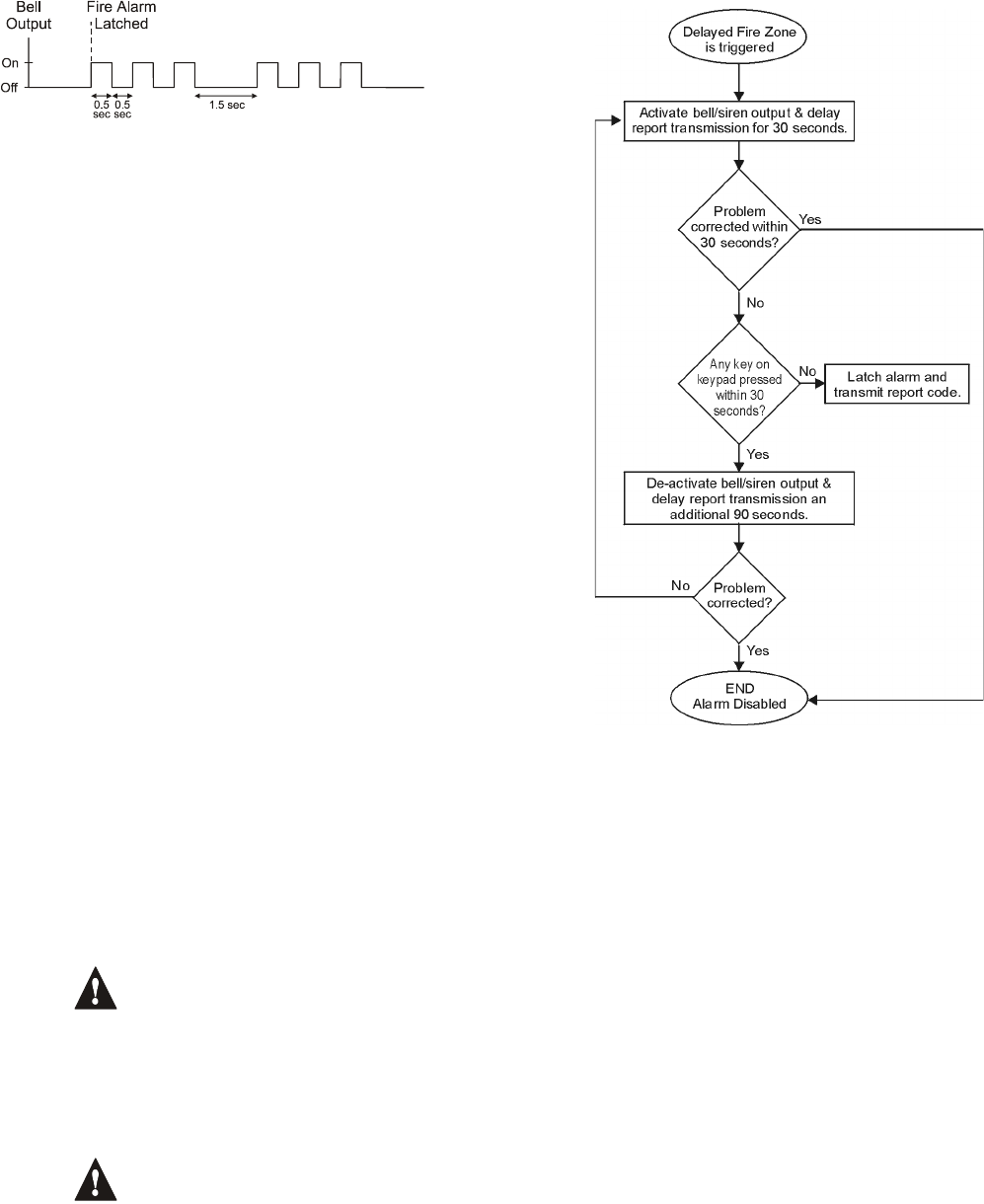
5.7 ZONE PARTITION ASSIGNMENT
Sections [001] to [015]: Zones 1 to 15
The control panel provides the option of partitioning the security system
into two completely independent systems. As demonstrated in Figure 5-1
on page 16, sections [001] to [015] represent zones 1 through 15
respectively, where the second digit in each of these sections represents
the zone's partition assignment. The zone is assigned to Partition 1 if
second digit = 1, Partition 2 if second digit = 2, or both partitions is
second digit = 3. For details on Partitioning, refer to page 39.
5.8 ZONE OPTIONS
As demonstrated in Figure 5.1, sections [001] to [015] represent zones 1
through 15 respectively. After entering the first two digits, select one or
more of the following Zone Options by using the Multiple Feature Select
Programming Method (see page 9):
5.8.1 AUTO ZONE SHUTDOWN
Sections [001] to [015] = Zones 1 to 15
Option [1] OFF = Auto Zone Shutdown Disabled
Option [1] ON = Auto Zone Shutdown Enabled for
selected zone (default)
If, in a single armed period, the number of alarms generated by
a zone with the Auto Zone Shutdown option enabled exceeds
the number defined by the Auto Zone Shutdown Counter, the
control panel will no longer generate an alarm for that zone. To
program the Auto Zone Shutdown Counter, key in the desired
limit (000=Disabled, 001 to 015, Default = 5) into section [089].
The Auto Zone Shutdown Counter resets every time the
system is armed.
5.8.2 BYPASS ZONES
Sections [001] to [015] = Zones 1 to 15
Option [2] OFF = Bypass Zone Disabled
Option [2] ON = Selected Zone is Bypass Enabled (default)
When a user, utilizes the Bypass Programming feature (see page 47), only zones with the Bypass option enabled can
be programmed as bypassed.
Do not program a Fire Zone with the Bypass option, as the control panel will never bypass Fire Zones.
5.8.3 STAY ZONES
Sections [001] to [015]: Zones 1 to 15
Option [3] OFF = Stay Zone Disabled (default)
Option [3] ON = Selected Zone is Stay Enabled
Zones with the Stay option enabled will be bypassed when the system is Stay Armed (see page 47).
Do not program a Fire Zone with the Stay option, as the control panel will never bypass Fire Zones
when Stay Arming.
5.8.4 ALARM TYPES
Sections [001] to [015]: Zones 1 to 15
[4] OFF / [5] OFF: Audible Steady (default)
When the conditions for an alarm have been met, the control panel can transmit the appropriate Zone Alarm report
code (see page 31) and provides a steady output for any bells or sirens connected to the control panel’s bell output.
Figure 5.2: Bell Output During Fire Alarm Figure 5.3: Delayed 24Hr. Fire Zone

[4] OFF / [5] ON: Audible Pulsed Alarm
When the conditions for an alarm have been met, the control panel can transmit the appropriate Zone Alarm report
code (see page 31) and provides a pulsed output (see Figure 5-2 on page 18) for any bells or sirens connected to the
control panel’s bell output.
[4] ON / [5] OFF: Silent Alarm
When the conditions for an alarm are met, the control panel can transmit the appropriate Zone Alarm report code (see
page 31) and will not activate the control panel’s bell output. The appropriate ARM or STATUS LED on the keypads will
flash to indicate an alarm and the user will still have to disarm the system.
[4] ON / [5] ON: Report Only
When the conditions for an alarm have been met, the control panel can transmit the appropriate Zone Alarm report
code (see page 31). The system will not have to be disarmed.
5.8.5 INTELLIZONE
Sections [001] to [015]: Zones 1 to 15
Option [6] OFF = Intellizone Disabled (default)
Option [6] ON = Intellizone Enabled for Selected Zone
This feature reduces the possibility of false alarms. When a zone with the Intellizone option opens, the panel does not
immediately generate an alarm. First it triggers the Intellizone Delay Timer.To program the Intellizone Delay Timer, key
in the desired 3-digit value (010 to 255 seconds, Default = 48 seconds) into section [084]. If any of the following
conditions occur during this period, the panel will generate an alarm:
• During the Intellizone Delay, a second zone has caused an alarm.
• During the Intellizone Delay, the zone in alarm has restored (closed) and re-occurred (opened).
• The zone in alarm remains open for the entire Intellizone Delay.
5.8.6 DELAY BEFORE ALARM REPORT CODE TRANSMISSION
Sections [001] to [015]: Zones 1 to 15
Option [7] OFF = Delay Alarm Transmission Disabled (default)
Option [7] ON = Delay Alarm Transmission Enabled for Selected Zone
When an alarm condition occurs on a zone with this option enabled, the control panel enables the bell/siren output, but
does not report the alarm to the central station until the end of the Alarm Before Transmission Delay. To program the
Alarm Transmission Delay, key in the desired 3-digit delay value (000 = Disabled, 001 to 255 seconds) into section
[080]. During this period, disarming the system disables the bell/siren output and cancels the report code transmission.
This feature is commonly used with Entry Delay zones to reduce false alarms created by new users who may not
disarm the system in time.
5.8.7 FORCE ZONES
Sections [001] to [015]: Zones 1 to 15
Option [8] OFF = Force Zone Disabled (default)
Option [8] ON = Selected Zone is Force Enabled
Any open Force Zones at the time of arming will be considered deactivated by the control panel (see page 47). If
during this period a deactivated zone is closed, the control panel will revert that zone to active status. Consequently,
the control panel will generate an alarm if the zone is breached.
Do not program a Fire Zone with the Force option, as the control panel will never bypass Fire Zones
when Force Arming.
5.8.8 KEYSWITCH OPTIONS
Sections [001] to [005]: Option [1] and [2]
When an on-board zone is programmed as a Keyswitch Zone (see section 5.6.1 on page 17), the control panel will
ignore any other Zone Option. The keyswitch can be programmed as a Maintained or Momentary Keyswitch and to
Regular or Stay Arm (see section 13.4 on page 46). A Maintained Keyswitch will arm the system when it is set to the
ON position and will disarm when set to the OFF position. To arm with a Momentary Keyswitch, set the keyswitch to the
ON position then turn it back to the OFF position. Repeating this sequence will disarm the system. Program the
keyswitch with the following:
Option [1] OFF = Maintained (default) Option [2] OFF = Regular Arming (default)
Option [1] ON = Momentary Option [2] ON = Stay Arming
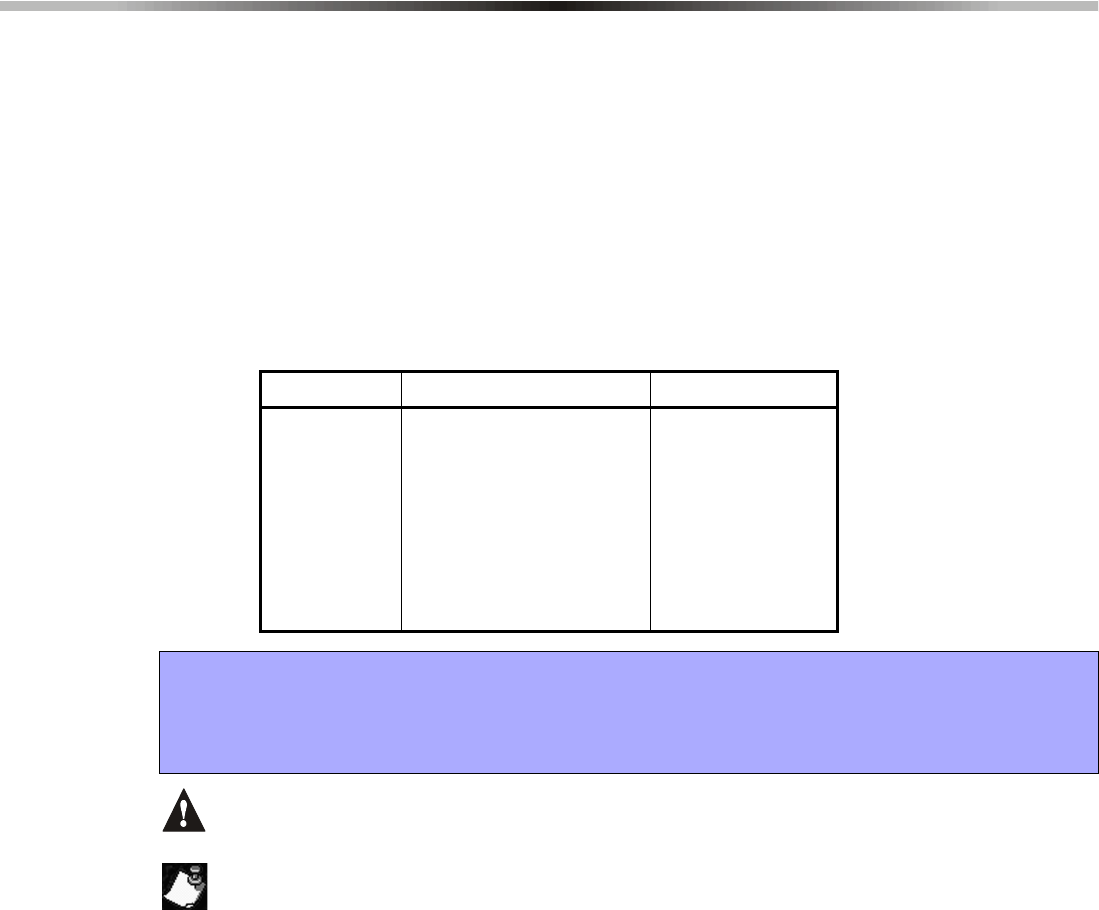
5.9 ZONE SPEED
Sections [050] to [064]: Zones 1 to 15
001 to 255 X 10ms, Default = 600ms
The Zone Speed defines how quickly the control panel will respond to an open zone. The control panel will not display an open
zone on the keypad or generate an alarm until the programmed Zone Speed has elapsed. All other zone definitions and options
do not come into effect until the Zone Speed has elapsed. This feature prevents any momentary glitches from causing an alarm
or unnecessary reporting.
5.10 EOL ZONES
Section [132]: Zone Options
Option [4] OFF = Zones do not use EOL resistors (default)
Option [4] ON = Zones require EOL resistors
If all detection devices connected to the control panel have input terminals that require 1KΩend of line resistors, enable option [4]
in section [132]. For details on using EOL resistors, refer to see Single Zone Inputs on page 7.
PART 6: WIRELESS ZONE PROGRAMMING
The Spectra 1759EX allows for the addition of up to eight fully supervised Omnia wireless transmitters, and up to eight programmable
remote controls.
6.1 WIRELESS TRANSMITTER PROGRAMMING
The programming of the wireless transmitters (detectors and door contacts) is accomplished in two steps:
1. Assign the wireless transmitter to the Spectra 1759EX.
2. Program the zones.
6.1.1 ASSIGNING WIRELESS TRANSMITTERS TO THE RECEIVER
Sections [601] to [608]
Sections [601] to [608] represent expansion inputs 1 to 8 respectively. For example, section [601] is assigned to
expansion input 1, section [602] is assigned to expansion input 2, etc. (refer to Table 6). Each Expansion Input
represents a specific zone in the Spectra 1759EX system (see Zone Recognition Table on page 14).
Do not assign detection devices from different modules to the same expansion input. For example, do
not assign a wireless transmitter to section [601] and then connect a detection device to input Z1 of the
APR3-ZX8.
The serial number is located on the inside of the transmitter or you can use the Serial Number Display (refer to
section 6.3 on page 21) to determine its serial number.
The transmitters must be activated once having been assigned to the Spectra 1759EX. To activate a
transmitter, insert the batteries and close the cover. To ensure proper synchronization between the control
panel and the transmitter, open and close the zone corresponding to the transmitter.
Table 6:
Sections and Expansion Inputs
Section # 6-digit Serial Number Expansion Input
[601] ___/___/___/___/___/___ Input 1
[602] ___/___/___/___/___/___ Input 2
[603] ___/___/___/___/___/___ Input 3
[604] ___/___/___/___/___/___ Input 4
[605] ___/___/___/___/___/___ Input 5
[606] ___/___/___/___/___/___ Input 6
[607] ___/___/___/___/___/___ Input 7
[608] ___/___/___/___/___/___ Input 8
How Do I Assign Wireless Transmitters to the Spectra 1759EX?
1) Press the [ENTER]key.
2) Enter your [INSTALLER CODE].
3) Enter the desired [SECTION NUMBER](from sections [601] to [608]).
4) Enter the 6-digit [SERIAL NUMBER]of the wireless transmitter.
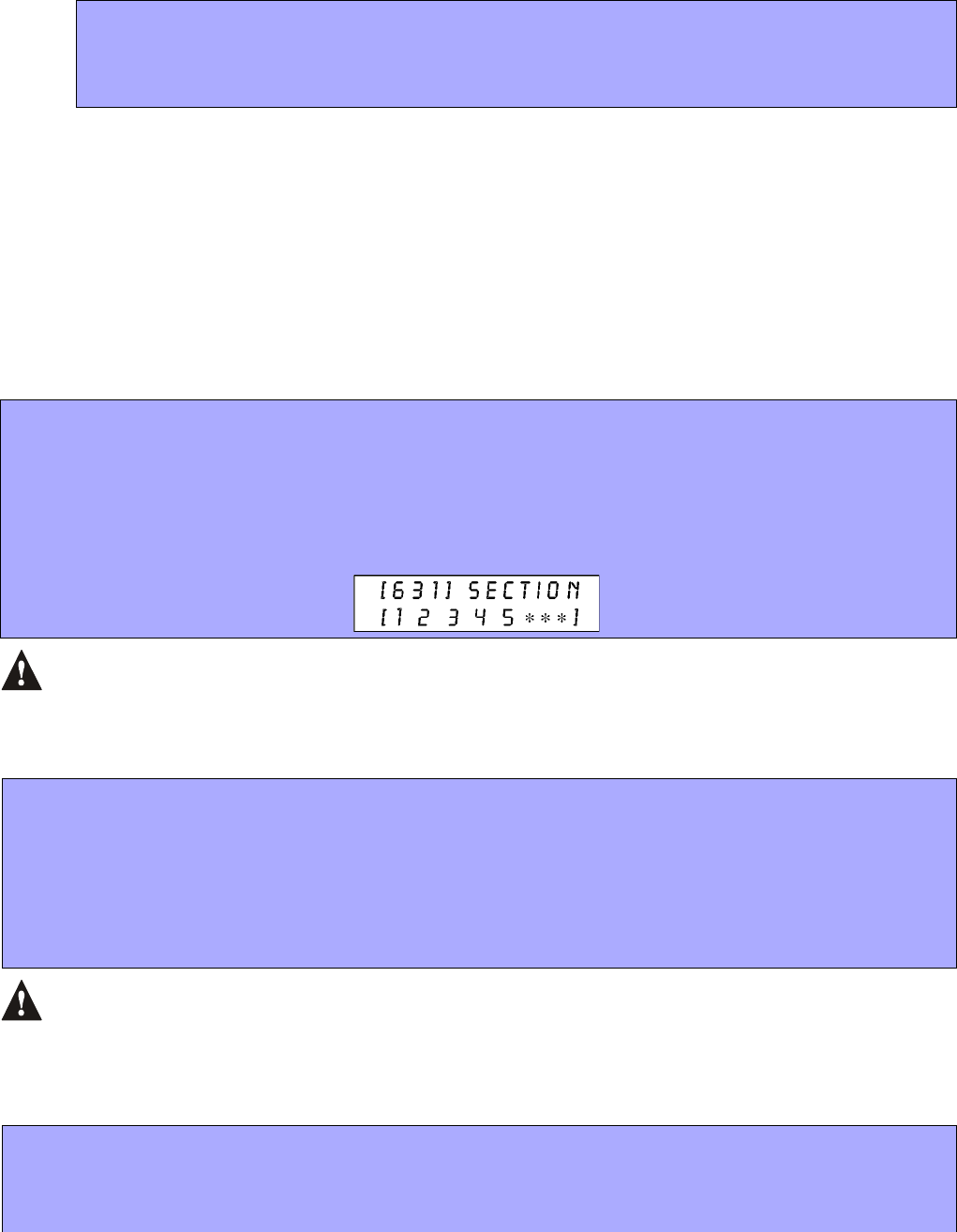
6.1.2 DELETING ASSIGNED WIRELESS TRANSMITTERS
Sections [601] to [608]
6.1.3 PROGRAMMING THE ZONES
The zones allocated to the wireless transmitters must be programmed. Refer to Zone Programming on page 14 for
more information.
6.2 VIEWING THE WIRELESS TRANSMITTER SIGNAL STRENGTH
Sections [631] to [638]
Once wireless transmitters have been installed and assigned to the Spectra 1759EX, the signal strength of each transmitter can
be verified in sections [631] to [638]. Each section represents the signal strength viewer for a specific device. For example,
section [631] is the viewer for the device in section [601] and section [638] is the viewer for the device in section [608]. Please
note that this feature only works with wireless transmitters assigned to an Expansion Input (zone) as described in section 6.1.1 on
page 20. A reading of 1 is the weakest and a reading of 8 is the strongest. An average reading of 3 and up is acceptable.
Sometimes moving the transmitter or control panel by a small amount will greatly increase the signal reception.
After entering the desired section, ignore the first reading as it will not be accurate.
You can also use a beep sequence feature to verify a transmitter’s signal strength. When you press a transmitter’s tamper switch,
beep tones emanating from all the keypads connected to the communication bus will advise you of the transmitter’s signal
strength.
This feature cannot be used with any remote controls assigned to the control panel.
6.3 SERIAL NUMBER DISPLAY
Section [630]
This feature will display the serial number of any wireless transmitter on any Spectra keypad.
How Do I Delete Assigned Wireless Transmitters?
1) Press the [ENTER]key.
2) Enter your [INSTALLER CODE].
3) Enter the desired [SECTION NUMBER](from sections [601] to [608]).
4) Press the [0] key six times to clear the serial number.
How Do I View a Wireless Transmitter’s Signal Strength?
1) Press the [ENTER]key.
2) Enter your [INSTALLER CODE].
3) Enter the desired [SECTION NUMBER](from sections [631] to [638]).
4) Press the transmitter’s tamper switch or open the corresponding zone.
5) On an LED keypad: The keypad will illuminate numbers 1 to 8.
On an LCD keypad: The keypad will display numbers from 1 to 8 on the screen. For example, the LCD screen below
shows a signal strength reading of 5.
How Do I Attain a Wireless Transmitter’s Signal Strength using the Beep Sequence?
1) Press the [ENTER]key.
2) Enter your [INSTALLER CODE].
3) Enter the desired [SECTION NUMBER](from sections [631] to [638]).
4) Press the transmitter’s tamper switch or open the corresponding zone.
5) Listen for the beep tones:
If the signal strength is less than 3 = One beep
If the signal strength is between 3 and 6 = Two beeps
If the signal strength is greater than 6 = Three beeps
How Do I View a Transmitter’s Serial Number?
1) Press the [ENTER]key.
2) Enter your [INSTALLER CODE].
3) Enter the section [630].
4) Press the [0] key six times to clear the serial number.
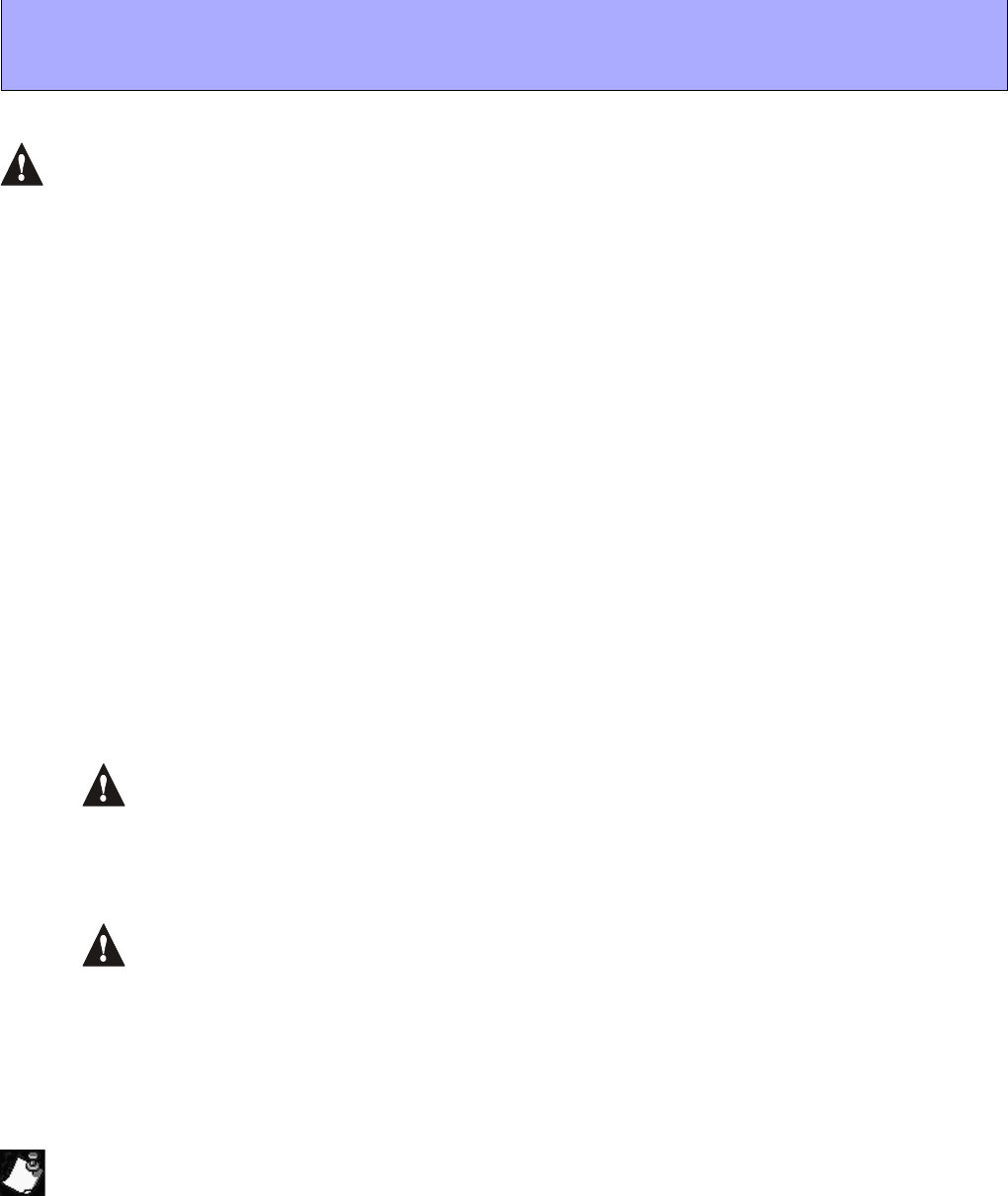
6.4 SUPERVISION OPTIONS
The Supervision Options cannot be used with any remote controls assigned to the control panel.
6.4.1 CHECK-IN SUPERVISION
Section [610]: Supervision Options
Option [1] OFF = Check-in supervision disabled (default)
Option [1] ON = Check-in supervision enabled
Option [1] enables the Check-in Supervision feature. The Spectra 1759EX waits for each of its assigned wireless
transmitters to send a status signal within a specified time period (as programmed in section 6.4.2) to confirm their
presence and functionality. If a device has not sent a signal within that time period, the Spectra 1759EX can generate
a trouble, an alarm, and/or transmit a report code to the monitoring station (refer to Wireless Transmitter Supervision
Options on page 42).
6.4.2 CHECK-IN SUPERVISION TIMER SETTINGS
Section [610]: Supervision Options
Option [2] OFF = Check-in supervision base time setting in Hours (default)
Option [2] ON = Check-in supervision base time setting in Minutes
Option [5] OFF = Check-in supervision time value set to 12 (default)
Option [5] ON = Check-in supervision time value set to 6
Options [2] and [5] define the time period that the control panel will expect a check-in status signal from its assigned
wireless transmitters. For example, if the timer is set to 12 min. (option [5] = OFF; option [2] = ON), the control panel
will expect a check-in status signal to be sent from its assigned wireless transmitters every 12 minutes. If the Spectra
1759EX does not receive a signal from one of its wireless transmitters within the period defined here, the Spectra
1759EX can then generate a trouble, an alarm, and/or can transmit a report code to the monitoring station (refer to
Wireless Transmitter Supervision Options on page 42). Refer to section 6.4.1 on page 22 for instructions on enabling
check-in supervision.
Options [2] and [5] must match the jumper settings of the assigned transmitters. For example. if the
check-in supervision is set for every 12 hours, the transmitters’ jumper settings must be set to 12 hours.
6.4.3 LOW BATTERY SUPERVISION
When the battery voltage of a wireless transmitter (motion detector or door contact) drops below a certain value, the
Spectra 1759EX will send a low battery report code to the monitoring station, and a trouble will appear in the keypad’s
trouble display.
Section [129] option [6] must be enabled in order for Low Battery Supervision to work. For more
information, refer to Wireless Transmitter Low Battery Supervision on page 42.
6.5 REMOTE CONTROL PROGRAMMING
The Spectra 1759EX accepts up to eight fully programmable remote controls. Programming the remote controls is accomplished
in three steps:
1. Assign the remote controls to the Spectra 1759EX control panel.
2. Assign the remote controls to User Access Codes.
3. Program the buttons on the remote controls.
The remote control will transmit a signal for only 1 second when a button is pressed. This is done to conserve the remote
control’s batteries.
6.5.1 REMOTE CONTROL ASSIGNMENT MODE
Section [650]: Option [8]
Option [8] OFF = The Spectra 1759EX is configured to use Omnia (OMN-RCT1) remote controls
(default)
Option [8] ON = The Spectra 1759EX is configured to use Parakey (344) remote controls
Though both the Parakey and Omnia remote controls are compatible with the Spectra 1759EX, all eight remote
controls allowable per 1759EX must be of the same type (Omnia or Parakey). Disabling option [8] configures the
5) On an LED Keypad: The serial number digits will appear one at a time by illuminating the corresponding LED light. To
view the next digit, press the [ENTER]key.
On an LCD Keypad: The first three digits of the serial number will appear. Press the [ENTER]key three times to view the
next three digits.

Spectra 1759EX to accept transmissions from an Omnia remote control only. Enabling option [8] configures the
Spectra 1759EX to accept transmissions from a Parakey remote control only.
6.5.2 ASSIGNING A REMOTE CONTROL TO THE SPECTRA 1759EX
Sections [731] to [738]: Remote Controls 1 to 8 respectively
Remote controls are assigned to the module using the Automatic Learning method.
If you are having trouble assigning the remote control, the environment may be too noisy. Therefore,
we recommend that you assign the remote controls before installing the transmitters.
6.5.3 DELETING ASSIGNED REMOTE CONTROLS
Sections [731] to [738]: Remote Controls 1 to 8 respectively
6.5.4 ASSIGNING REMOTE CONTROLS TO USER ACCESS CODES
Sections [701] to [708]: Remote Controls 1 to 8 respectively
Each remote control must be assigned to a User Access Code. All User Access Codes are given a User Number from
001 to 048. Enter the desired User Number in a section from [701] to [708] that represent the remote control assigned
in sections [731] to [738] (refer to section 6.5.2 on page 23). For example, the remote control assigned in section [731]
will be assigned to the User Access Code designated in section [701].
6.5.5 PROGRAMMING THE REMOTE CONTROL BUTTONS
Sections [711] to [718]: Remote Controls 1 to 8 respectively
Each remote control can be programmed to perform up to 8 different actions. Each digit in sections [711] to [718]
represents a button or combination of buttons (refer to Table 7 on page 24). When a user arms or disarms using the
remote control, the control panel will arm or disarm all the areas assigned to the User Access Code (see section 6.5.4
on page 23). Sections [711] to [718] represent the remote controls assigned to sections [731] to [738] (refer to section
6.5.2 on page 23). For example, the buttons for the remote control assigned in section [731] will be programmed in
section [711].
The User Code assigned to the remote control (refer to section 6.5.4 on page 23) must have the same
User Options enabled. For example, if you enable the Force Arming button option, you must enable the
appropriate Force Arming user option. Also, if you enable any Panic button options, you must enable
the Panic options in the control panel (refer to section 8.4 on page 28)..
How Do I Assign a Remote Control to the Spectra 1759EX?
1) Press the [ENTER]key.
2) Enter your [INSTALLER CODE].
3) Enter the desired [SECTION NUMBER](from sections [731] to [738]).
4)
Press any button on the remote control twice or until the confirmation beep sounds (“Beep-Beep-Beep-Beep-Beep”)
.
HowDoIDeleteaRemoteControl?
1) Press the [ENTER]key.
2) Enter your [INSTALLER CODE].
3) Enter the desired [SECTION NUMBER](from sections [731] to [738]).
4) Press the [FORCE]button.
HowDoIAssignaRemoteControltoaUserAccessCode?
1) Press the [ENTER]key.
2) Enter your [INSTALLER CODE].
3) Enter the desired [SECTION NUMBER](from sections [701] to [708]).
4) Enter the [USER NUMBER]to be assigned to the remote control (001 to 048).
How Do I Program the Remote Control’s Buttons?
1) Press the [ENTER]key.
2) Enter your [INSTALLER CODE].
3) Enter the desired [SECTION NUMBER](from sections [711] to [718]).
4) Enter the [HEXADECIMAL VALUE](0 to D) of the desired button option from Table 8 in the appropriate space (refer
to Table 7). If you do not wish to program all the buttons or button combinations, simply press the [ENTER]key at
any time to save and exit.
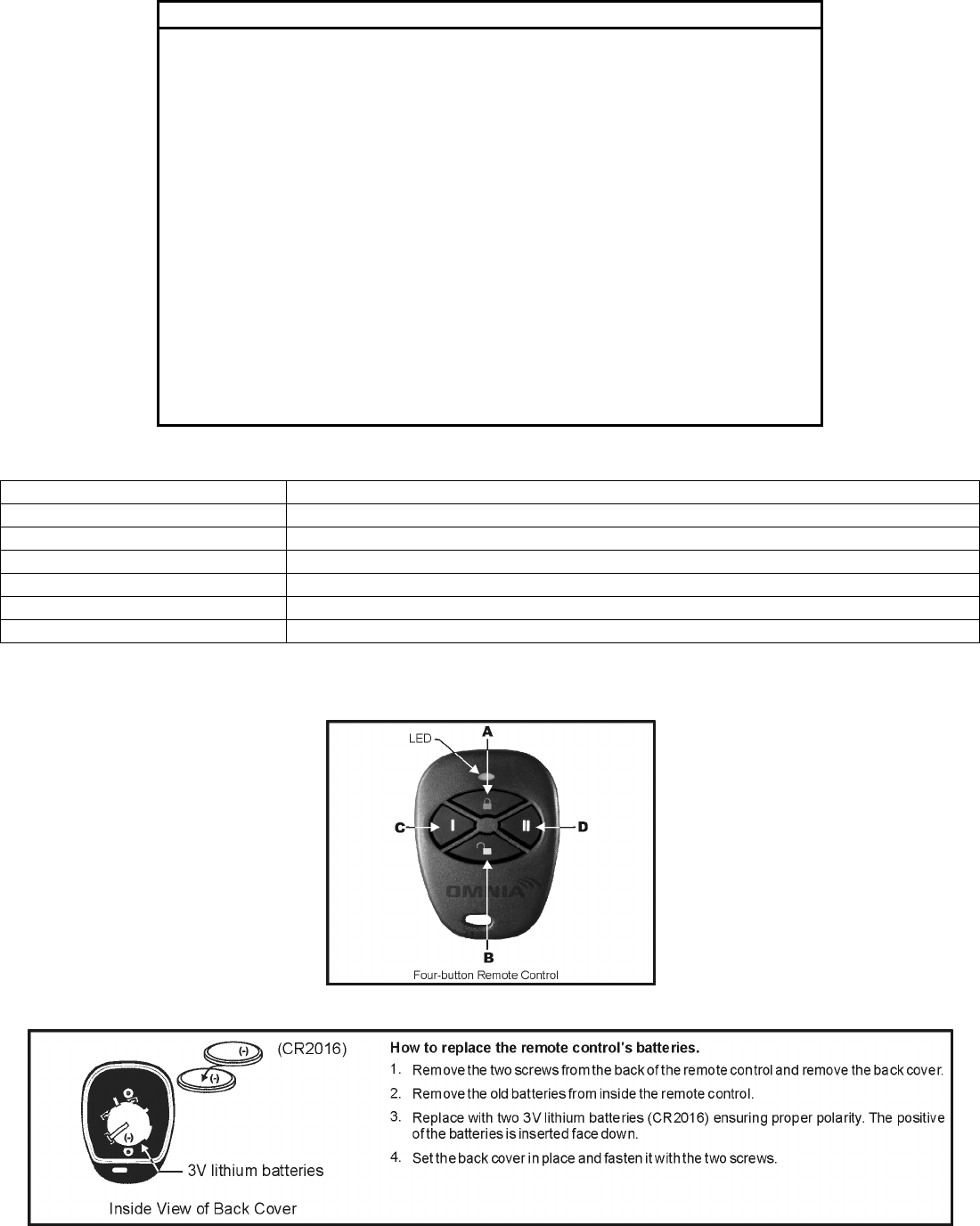
* Event Group #07, #08 and #09 (Button Pressed on Remote) of the Spectra 1759EX PGM Table. For the PGM Table, please refer to the Spectra
1759EX Programming Guide (1759EX-EP).
Figure 6.1: Remote Control Button Identification
Figure 6.2: Replacing the Remote Control’s Batteries
Table 7:
Remote Control Button Programming
Remote Control Button Programming (refer to Table 8)
Section
[711] ____/____/____/____/____/____/____/____
A B C D A+B C+D A+C B+D Remote Control # 1
[712] ____/____/____/____/____/____/____/____
A B C D A+B C+D A+C B+D Remote Control # 2
[713] ____/____/____/____/____/____/____/____
A B C D A+B C+D A+C B+D Remote Control # 3
[714] ____/____/____/____/____/____/____/____
A B C D A+B C+D A+C B+D Remote Control # 4
[715] ____/____/____/____/____/____/____/____
A B C D A+B C+D A+C B+D Remote Control # 5
[716] ____/____/____/____/____/____/____/____
A B C D A+B C+D A+C B+D Remote Control # 6
[717] ____/____/____/____/____/____/____/____
A B C D A+B C+D A+C B+D Remote Control # 7
[718] ____/____/____/____/____/____/____/____
A B C D A+B C+D A+C B+D Remote Control # 8
Table 8:
Button Options
[FORCE]= Button Disabled [7] = Regular Arm and Disarm
[1] = Regular Arm [8] = Generate a Panic 1 Alarm (Police)
[2] =StayArm [9] = Generate a Panic 2 Alarm (Medical)
[3] = Instant Arm [A] = Generate a Panic 3 Alarm (Fire)
[4] = Force Arm [B] = Activates any PGMs that have Event Group #07* as their Activation Event
[5] = Disarm [C] = Activates any PGMs that have Event Group #08* as their Activation Event
[6] = Disarm when there is no alarm [D] = Activates any PGMs that have Event Group #09* as their Activation Event

PART 7: ARMING AND DISARMING OPTIONS
7.1 SWITCH TO STAY ARMING
Section [133] = Partition 1, Section [134] = Partition 2
Option [4] OFF = Switch to Stay Arming Disabled (default)
Option [4] ON = Switch to Stay Arming Enabled
If a user Regular arms a partition, but does not exit through (open and close) an Entry Delay zone during the Exit Delay, the
control panel can be programmed to switch from Regular Arming to Stay Arming.
7.2 STAY ARMING WITH DELAY
Section [133] = Partition 1, Section [134] = Partition 2
Option [5] OFF = Stay Arming with Delay Disabled (default)
Option [5] ON = Stay Arming with Delay Enabled
When a partition is Stay Armed when this feature is enabled, all the zones in the partition, except 24Hr. zones, are associated
with the Stay Delay. Therefore, the control panel will not generate an alarm if a zone is breached until the Stay Delay has elapsed.
This feature prevents false alarms by allowing users enough time to disarm their system if a zone is accidentally triggered. For
example, if a user opens an armed window or crosses an armed detector on the way to the kitchen in the middle of the night, the
user will have enough time to disarm the system before the alarm is generated. Each partition’s Stay Delay follows the value
programmed in Entry Delay Timer 2 in section [070].
7.3 REGULAR ARMING SWITCHES TO FORCE ARMING (NOT TO BE USED WITH UL INSTALLATIONS)
Section [131]: Arming/Disarming Options
Option [2] OFF = Regular Arming Switches to Force Arming Disabled (default)
Option [2] ON = Regular Arming Switches to Force Arming Enabled
With this feature enabled, the control panel will always Force arm instead of Regular arm when a valid User Access Code with
the Force Arming Option is entered. In installations where the user must always Force arm when leaving the protected area, this
feature allows users to Force arm without pressing the [FORCE]key before entering their User Access Code.
7.4 RESTRICT ARMING ON BATTERY FAIL
Section [130]: Arming/Disarming Options
Option [5] OFF = Permit arming on battery failure (default)
Option [5] ON = Restrict arming on battery failure
If this option is enabled, the control panel will not arm the system if the control panel detects that the backup battery is
disconnected, that its fuse is blown, or that the battery voltage drops to less than 10.5V. The control panel will not arm the system
until all battery trouble conditions are rectified.
7.5 RESTRICT ARMING ON TAMPER FAILURE
Section [130]: Arming/Disarming Options
Option [6] OFF = Permit arming on tamper failure (default)
Option [6] ON = Restrict arming on tamper failure
If this option is enabled, the control panel will not arm the system if the control panel detects a tamper trouble on one or more
zones. The control panel will not arm the system until all tamper trouble conditions are rectified.
This feature will not function if the Tamper Recognition Options (see page 28) are disabled or whenever the
tampered zone is bypassed and the Tamper Bypass Options (see page 28) have been enabled.
7.6 TIMED AUTO-ARMING
Section [133] = Partition 1, [134] = Partition 2
Option [1] OFF = Timed Auto-Arming Disabled (default)
Option [1] ON = Timed Auto-Arming Enabled
Each partition can be programmed to arm every day at the time specified by the Auto-Arm Timer.TheAuto-Arming Options (see
section 7.8) determine the partition's arming method. Any open zones detected when a partition is Auto-Armed will be bypassed
regardless of their definition (except 24hr. zones). The control panel will enter a 60-second Exit Delay period before arming the
system. At this point, Auto-Arming can be cancelled by entering a valid access code. Once the partition has successfully armed,
the control panel can transmit the Timed Auto-Arming report code programmed in section [172].
Example: To automatically arm partition 2 everyday at 6:15PM, enable Timed Auto-Arming for partition 2 by turning on option [1]
in section [134]. Then key in 18:15 into section [112].
7.6.1 AUTO-ARM TIMER
Section [111] = Partition 1, [112] = Partition 2
Select the section corresponding to the desired partition and program the time (use the 24-hour clock i.e. 6:30PM =
18:30) that you wish the control panel to attempt to arm the selected partition and/or send the Late to Close report
code. If Timed Auto-Arming is disabled, the control panel will still send the Late to Close report code at the time
specified by the Auto-Arm Timer.
7.7 NO MOVEMENT AUTO-ARMING
Section [133] = Partition 1, [134] = Partition 2
Option [2] OFF = No Movement Auto-Arming Disabled (default)
Option [2] ON = No Movement Auto-Arming Enabled
If no movement occurs in a partition's protected area for the period specified by the No Movement Timer (see below), the control
panel can automatically arm that partition. The Auto-Arming Option described in section 7.8 of this manual determines the
partition's arming method. Any open zones detected when a partition is Auto-Armed will be bypassed regardless of their definition
(except 24hr. zones). Upon arming, the control panel will transmit the No Movement report code if programmed in section [172].
Regardless of whether the system was successfully armed or not, the control panel will always transmit the No Movement report
code if programmed in section [172]. If No Movement Auto-Arming is disabled, the control panel will still send the No Movement
report code at the time specified by the No Movement Timer.
Example: To arm partition 1 whenever there is no movement for a period of 4 hours, enable No Movement Auto-arming for
partition 1 by turning on the [2] Option in section [133]. Then in section [075] enter 016 (16x15min. = 240min. = 4 hours).
7.7.1 NOMOVEMENT TIMER
Section [075] = Partition 1, [076] = Partition 2
001 to 255 x15min., Default = disabled
Select the section corresponding to the desired partition and program the interval of time without movement you wish
the control panel to wait before arming and/or sending the No Movement report code. If No Movement Auto-Arming is
disabled, the control panel can still send the No Movement report code when no movement has been detected for the
period specified by the No Movement Timer.
7.8 AUTO-ARMING OPTIONS (NOT TO BE USED WITH UL INSTALLATIONS)
Section [133] = Partition 1, [134] = Partition 2
Option [3] OFF = Regular Arming (default)
Option [3] ON = Stay Arming
When using Timed Auto-Arming or No Movement Auto-Arming (see section 7.6 and section 7.7), the control panel can Regular or
Stay Arm (see page 46) the selected partition.
7.9 ONE-TOUCH ARMING (NOT TO BE USED WITH UL INSTALLATIONS)
Section [130]: Options [1] to [4]
Option [1] ON = Press & hold the [ENTER]key for One-touch Regular Arming.
Option [2] ON = Press & hold the [STAY]key for One-touch Stay Arming.
Option [3] ON = Press & hold the [FORCE]key for One-touch Force Arming.
Option [4] ON = Press & hold the [BYP]key for One-touch Bypass Programming.
The One-touch Arming features allow users to arm the system without having to enter any access codes. To arm the system,
press and hold the appropriate key (see above) for approximately 2 seconds. If the system is partitioned (see page 39), you must
also press the key corresponding to the partition you wish to arm. For more information on the different arming methods, please
refer to page 46.
7.10 EXIT DELAY
Section [071] = Partition 1, [072] = Partition 2
001 to 255 seconds, Default = 30 seconds, Maximum 60 seconds for UL Listed systems
After entering the required arming sequence (i.e. User Access code, etc.), the Exit Delay parameter determines the amount of
time a user has to leave the protected area before the control panel arms the partition. The Exit Delay applies to all zones in the
selected partition. When enabled, the keypad will beep once every second during the Exit Delay and will beep rapidly during the
final 10 seconds of the Exit Delay.
7.10.1 BEEP ONEXIT DELAY
Section [130]: Arming/Disarming Options
Option [8] OFF = Beep on Exit Delay Disabled
Option [8] ON = Beep on Exit Delay Enabled (default)

7.11 BELL SQUAWK ON ARM/DISARM WITH KEYPAD
Section [130]: Arming/Disarming Options
Option [7] OFF = Bell Squawk on Arm/Disarm Disabled (default)
Option [7] ON = Bell Squawk on Arm/Disarm Enabled
When this feature is enabled, the bell or siren will squawk once upon arming and twice upon disarming.
7.12 BELL SQUAWK ON ARM/DISARM WITH REMOTE CONTROL
Section [131]: Arming/Disarming Options
Option [3] OFF = Bell Squawk on Arm/Disarm with Remote Control Disabled (default)
Option [3] ON = Bell Squawk on Arm/Disarm with Remote Control Enabled
When this feature is enabled, the bell or siren will squawk once upon arming with a remote control and twice upon disarming with
a remote control. Must be enabled for UL installations.
7.13 NO EXIT DELAY WHEN ARMING WITH REMOTE CONTROL
Section [131]: Arming/Disarming Options
Option [4] OFF = Provides Exit Delay When Arming with a Remote Control (default)
Option [4] ON = No Exit Delay When Arming with a Remote Control
When the option is enabled, the panel cancels the Exit Delay (arms instantly) when a partition is armed with a remote control.
When disabled, the Exit Delay timer will start when a partition is armed with a remote control.
7.14 NO EXIT DELAY BEEPS AND NO BELL SQUAWK WHEN STAY ARMING
Section [131]: Arming/Disarming Options
Option [5] OFF = No Exit Delay Beeps and No Bell Squawk When Stay Arming Disabled (default)
Option [5] ON = No Exit Delay Beeps and No Bell Squawk When Stay Arming Enabled
With this feature enabled, the control panel will prevent the bell or siren from squawking and the keypads from beeping during the
Exit Delay, whenever a partition is Stay Armed.
PART 8: ALARM OPTIONS
8.1 BELL CUT-OFF TIMER
Section [073] = Partition 1, [074] = Partition 2
000 = Disabled, 001 to 255 minutes, Default = 4 minutes, 5 minutes minimum for ULC installations
After an audible alarm, the bell or siren will stop upon disarming of the partition or when the Bell Cut-Off Timer has elapsed,
whichever comes first.
8.2 RECYCLE ALARM
After the Bell Cut-Off Timer and the Recycle Delay have elapsed, the control panel will re-verify the zone status. If there are any
open zones, the control panel will generate another alarm. In one armed period, the control panel will repeat this sequence the
number of times defined by the Recycle Counter.
8.2.1 RECYCLE ALARM DELAY
Section [090]
000 = disabled, 001 to 255 minutes, Default = disabled
The Recycle Delay determines the amount of time after Bell Cut-Off that the control panel will wait before re-verifying
zone status.
8.2.2 RECYCLE COUNTER
Section [091]
000 = disabled, 001 to 255, Default = disabled
The Recycle Counter determines the number of times the control panel will re-verify the zone status after Bell Cut-Off
in one armed period.
8.3 TAMPER RECOGNITION
Section [132]: Zone Options
[1] OFF / [2] OFF: Tamper Recognition Disabled (default)
If the system is armed or disarmed
, the control panel will display the zone as open in the keypad display, but will not generate
an alarm. This option is not permitted on UL systems.
[1] OFF / [2] ON: Trouble Only
If the system is armed
and a tamper wiring failure occurs on a zone, the control panel will follow the zone's Alarm Types setting
(see page 18).
If the system is disarmed
and a tamper wiring failure occurs on a zone, a Tamper/Zone Wiring Failure will appear
in the keypads’ Trouble Display (see page 45) and the control panel will transmit the appropriate Zone Tamper report code (see
page 32).
[1] ON / [2] OFF: Silent Alarm
If the system is armed
and a tamper wiring failure occurs on a zone, the control panel will follow the zone's Alarm Types setting
(see page 18). In a disarmed system, it functions the same as the Trouble Only setting, but it will also generate a silent alarm. A
silent alarm will not trigger any bells or sirens, but the system will have to be disarmed.
[1] ON / [2] ON: Audible Alarm
In an armed system and a tamper wiring failure occurs on a zone, the control panel will follow the zone's Alarm Types setting
(see page 18). In a disarmed system, it functions the same as Trouble Only setting, except it will also generate an audible
alarm.
8.3.1 TAMPER BYPASS OPTIONS
Section [132]: Zone Options
Option [3] OFF = Will generate a tamper if detected on a bypassed zone (default)
Option [3] ON = Tampers on bypassed zones will be ignored
With option [3] on, the Tamper Recognition feature follows the zone bypass definition. This means the control panel
will ignore any tampers detected on a bypassed zone. With option [3] off, Tamper Recognition ignores the bypass
definition. This means the control panel will generate an incident as per Tamper Recognition settings if a tamper or
wire fault occurs on a bypassed zone.
8.4 KEYPAD PANIC OPTIONS
Section [128]: General Options
Option [1] OFF = Emergency Panic Disabled (default)
Option [1] ON = Emergency Panic Enabled
Pressing the [1] and [3] keys simultaneously on the keypad for 2 seconds will generate a silent or audible alarm as defined by
option [4].
Option [2] OFF = Auxiliary Panic Disabled (default)
Option [2] ON = Auxiliary Panic Enabled
Pressing the [4] and [6] keys simultaneously on the keypad for 2 seconds will generate a silent or audible alarm as defined by
option [5].
Option [3] OFF = Fire Panic Disabled (default)
Option [3] ON = Fire Panic Enabled
Pressing the [7] and [9] keys simultaneously on the keypad for 2 seconds will generate a silent or audible alarm as defined by
option [6].
Option [4] OFF = Emergency Panic is Silent (default)
Option [4] ON = Emergency Panic is Audible
Option [5] OFF = Auxiliary Panic is Silent (default)
Option [5] ON = Auxiliary Panic is Audible
Option [6] OFF = Fire Panic is Silent (default)
Option [6] ON = Fire Panic is Pulsed
Silent alarm
:
The control panel emits a Confirmation Beep and transmits the appropriate Panic report code if programmed in section [195]. The
control panel will not enable the keypad buzzers or the control panel’s BELL output (no audible alarm).
Audible alarm
:
Same as silent alarm, except the keypad buzzers and the BELL output will activate until a user cancels the alarm (disarms) with a
valid User Access Code or when the Bell Cut-Off Timer elapses (see page 27).
Fire (pulsed) alarm
:
Same as audible operation, except that the BELL output will be pulsed as shown in Figure on page 18.

Whether the system is partitioned or not, the control panel will report all panic alarms to partition 1.
8.5 PANIC LOCKOUT TIMER
Section [094]
When a panic alarm is activated, the control panel can ignore the disarm signal from a remote control for a specified period. This
prevents an aggressor from disarming the system by remote control during a panic situation. In section [094] enter a 3-digit value
(000 to 255, 000 = disabled) representing the number of seconds that the remote controls will be locked out of the system.
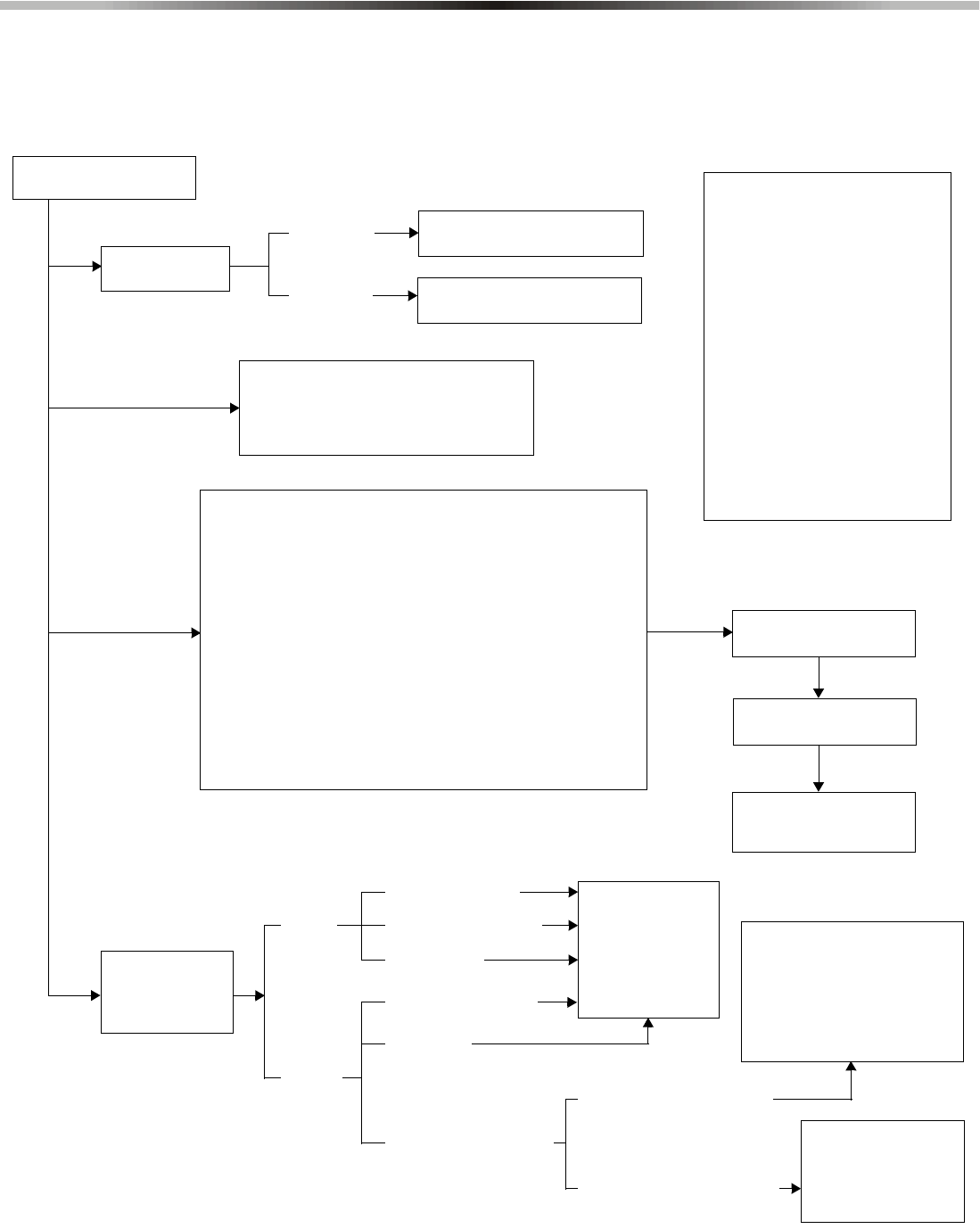
PART 9: REPORTING AND DIALER SETTINGS
The following section explains all the features and options that must be programmed in order for your security system to properly report
system events to a central station. When an event (e.g. zone in alarm) occurs in the system, the control panel verifies if a report code was
programmed in the section corresponding to the event (except Ademco Contact ID “All Codes”). If a report code was programmed, the
control panel will dial the central station telephone number defined by the Event Call Direction feature. When the central station answers,
the control panel will transmit the System Account Code, followed by the programmed Report Code.
Figure 9.1: Event Reporting
Reporting/Dialer
Option [3] - Section [135]
Partition Account
Numbers
Partition Account Number 1
3 or 4 digits (0-F) in section [143]
Partition Account Number 2
3 or 4 digits (0-F) in section [144]
Central Station Telephone Numbers 1 & 2
Defines which Central Station Telephone Numbers each group of
events will report to.
Section [137]
Option [1] ON = Call Telephone #1 for Arm/Disarm Report Codes
Option [2] ON = Call Telephone #2 for Arm/Disarm Report Codes
Option [3] ON = Call Telephone #1 for Alarm/Restore Report Codes
Option [4] ON = Call Telephone #2 for Alarm/Restore Report Codes
Option [5] ON = Call Telephone #1 for Tamper/Restore Report Codes
Option [6] ON = Call Telephone #2 for Tamper/Restore Report Codes
Section [138]
Option [1] ON = Call Telephone #1 for Trouble/Restore Report Codes
Option [2] ON = Call Telephone #2 for Trouble/Restore Report Codes
Option [3] ON = Call Telephone #1 for Special System Report Codes
Option [4] ON = Call Telephone #2 for Special System Report Codes
Central Station Telephone Numbers 1 & 2
Sections [151] & [152]
Back-up Number
Section [153]
Related Features
Delay Before Alarm Transmission
Section [080]
Pager Format Delay Transmission
Section [083]
Recent Closing Delay
Section [085]
Power Failure Report Delay
Section [086]
Auto Test Report
Sections [087] & [110]
Report Disarm Options
Option [1] - Section [131]
Report Zone Restore Options
Option [6] - Section [132]
Alternate Dial
Option [4] - Section [136]
Maximum Dialing Attempts
Section [081]
Delay between Dialing
Attempts
Section [136]
Reporting Formats
Section [140]
1st digit = CSTN#1
2nd digit = CSTN#2
Program 1 or 2-digit
(1 - FF) report codes
into sections [160]
to [213] where each
section represents
up to four events in
the system.
Program the 2-digit report codes
corresponding to the Contact I.D.
Table into sections [160] to [213]
where each section represents
up to four events in the system.
ProgramFFtousethedefault
Contact ID Report Code.
The control panel
automatically generates
all report codes. You do
not have to program
any report codes.
DTMF
(Tone)
[5] = Ademco Contact ID
[6] = Pager
[4] = Ademco Express
“Programmable”
Option [3] OFF - Section [136]
“Programmable”
Option [3] ON - Section [136
[2] = Silent Knight Fast
Pulse
[1] =AdemcoSlow
[3] = Sescoa
Partition 1
Partition 2

9.1 REPORTING/DIALER (ENABLE/DISABLE)
Section [135]: Dialer Options
Option [3] OFF = Reporting/Dialer Disabled (default)
Option [3] ON = Reporting/Dialer Enabled
9.2 REPORT CODES
A report code is a 1- or 2-digit hexadecimal value consisting of digits from 1 to F. Each section from [160] to [213] represents a set
of up to four specific events and each of these events can be programmed with a separate 1- or 2-digit report code.
Only the Ademco Slow, Silent Knight, Sescoa and Pager Formats support 1-digit report codes. To program a 1-
digit report code, press the [FORCE] key followed by the desired hexadecimal digit or vice versa.
When a specific event occurs, the control panel will attempt to transmit the programmed report code to the central station. The
method of report code transmission is defined by the Reporting Formats (see page 33) and the Event Call Direction (see
page 35). These two items define how and where the report codes are transmitted. If you are using the Ademco Contact ID “All
Codes” format, sections [160] to [213] do not have to be programmed. For more information, refer to Reporting Formats (see
page 33). The following sub-sections provide a brief description of the events that the control panel can report.
9.2.1 ARMING REPORT CODES
Sections [160] to [171]
A report code can be programmed for each of the 48 User Access Codes. When using an access code to arm a
partition, the control panel can send the appropriate report code to the central station, identifying which access code
was used to arm the partition.
9.2.2 SPECIAL ARMING REPORT CODES
Sections [172] and [173]
Whenever the system is armed using one of the special arming features listed below, the control panel can send the
appropriate report code to the central station identifying how the system was armed.
Section [172]
•T
IMED AUTO-ARMING: A partition has armed itself at the programmed time (see page 25).
•L
ATE TO CLOSE: Reports every day at the time specified by the Auto-Arm Timer (see page 26).
•NOMOVEMENT: A partition has armed itself after the programmed period without movement (see No Movement
Arming on page 26).
•PARTIAL ARMING: A partition was Stay, Instant or Force Armed or armed with Bypassed zones.
Section [173]
•ONE-TOUCH ARMING: A partition was armed using a One-touch Arming feature (see page 26).
•REMOTE ARMING: A partition was armed using the Winload software.
•KEYSWITCH ARMING: A partition was armed using a keyswitch (see page 17)
• Future use
9.2.3 DISARMING REPORT CODES
Sections [174] to [185]
A report code can be programmed for each of the 48 User Access Codes. Whenever an access code is used to disarm
an armed partition or a partition in alarm, the control panel can send the appropriate report code to the central station,
identifying which access code was used to disarm the partition.
The Disarming and the Special Disarming report codes can be transmitted every time a partition is disarmed or
only when a partition is disarmed after an alarm (see Disarming Reporting Options on page 36).
9.2.4 SPECIAL DISARMING REPORT CODES
Section [186]
Whenever using one of the special disarming features, the control panel can send the report code to the central
station, identifying how the system was disarmed.
•CANCEL AUTO-ARM: A partition is disarmed during the Timed Auto-Arm's 60-second Exit Delay (see page 25). Only
reports if Disarming Reporting Options (see page 36) are set to always report disarming.
•REMOTE DISARM: System is disarmed using the Winload software.
•KEYSWITCH DISARMING: System disarmed using a keyswitch (see page 17).
• Future use
9.2.5 ZONE ALARM REPORT CODES
Sections [187] to [190]
A report code can be programmed for each of the 15 available zones. Whenever a zone generates an alarm, the
control panel can send the appropriate report code to the central station, identifying which zone generated an alarm.

9.2.6 ZONE ALARM RESTORE REPORT CODES
Sections [191] to [194]
A report code can be programmed for each of the 15 available zones. The control panel can transmit these report
codes to the central station identifying which zone was restored.
A zone is restored when it closes after generating an alarm or once the bell has cut-off after alarm generation.
Please refer to Zone Restore Report Options on page 36.
9.2.7 SPECIAL ALARM REPORT CODES
Sections [195] and [196]
Whenever the system generates an alarm due to one of the conditions listed below, the control panel can send the
appropriate report code to the central station identifying the type of alarm.
Section [195]
•EMERGENCY PANIC: Panic keys [1] and [3] have been pressed (see page 28).
•AUXILIARY PANIC: Panic keys [4] and [6] have been pressed (see page 28).
•FIRE PANIC: Panic keys [7] and [9] have been pressed (see page 28).
•RECENT CLOSING: Reports when an alarm is generated after arming the system within period defined by the Recent
Close Delay (see page 36).
Section [196]
•AUTO ZONE SHUTDOWN: A zone communicates more than the programmed number of transmissions in a single
armed period (see page 18).
•DURESS: A Duress access code is keyed in (see page 13).
•KEYPAD LOCKOUT: If a consecutive number of invalid codes are entered into a keypad, the control panel can be set
to deny access from all keypads for a specified period.
• Future use
9.2.8 ZONE TAMPER REPORT CODES
Section [197] to [200]
A report code can be programmed for each of the 15 available zones. Whenever a tamper or wire fault occurs on a
zone, the control panel can send the appropriate report code to the central station identifying which zone was
tampered.
9.2.9 ZONE TAMPER RESTORE REPORT CODES
Sections [201] to [204]
A report code can be programmed for each of the 15 available zones. Whenever a tampered zone is restored, the
control panel can send the appropriate report code to the central station identifying which zone has been restored.
If Tamper Recognition (see page 28) is disabled, the control panel will not report the occurrence of any
tampers, wire faults or tamper restores.
9.2.10 SYSTEM TROUBLE REPORT CODES
Section [205] to [207]
Whenever the system generates one of the instances listed below, the control panel can send the appropriate report
code to the central station identifying the type of system trouble.
Section [205]
• Future use
•AC FAILURE: The control panel has detected a loss of AC power. Transmission of this report code can be delayed
(see Power Failure Report Delay on page 36).
•BATTERY FAILURE: backup battery is disconnected or battery voltage is ≤10.5V.
•AUXILIARY SUPPLY: Auxiliary power supply has overloaded (current consumption is >1.1A).
Section [206]
•BELL OUTPUT OVERLOAD: Bell/siren output has overloaded (see page 6).
•BELL OUTPUT DISCONNECTED: Devices connected to the Bell Output have been disconnected.
•TIMER LOSS: The control panel has detected a loss in time or clock failure (see page 39)
•FIRE LOOP TROUBLE: The control panel has detected a tamper trouble on a fire zone.
Section [207]
•WIRELESS LOW BATTERY: The battery voltage of an Omnia wireless transmitter (motion detector or contact switch)
has dropped below recommended limits.
•MODULE FAULT: Will report if all keypads connected to the control panel have been disconnected or if a module with
its corresponding supervision option enabled in the control panel (see pages 41 and 42) is disconnected.
•PRINTER FAULT: An error has occurred on the Printer Module.
•FAIL TOCOMMUNICATE: The control panel has failed all attempts to communicate with the central station. The report
code will be transmitted upon the next successful attempt.

9.2.11 SYSTEM TROUBLE RESTORE CODES
Sections [208] to [210]
Whenever the system restores one of the troubles listed in section 9.2.10, the control panel can send the appropriate
report code to the central station identifying the type of system trouble restore. If Telephone Line Monitoring is enabled
(see page 36), the control panel can also transmit a TLM Restore report code.
9.2.12 SPECIAL REPORTING CODES
Sections [211] to [213]
Whenever the system generates one of the instances listed below, the control panel can send the appropriate report
code to the central station identifying the type of system occurrence.
Section [211]
•COLD START: The control panel was completely shutdown (no battery, no AC) and then was re-started.
•TEST REPORT: A test report has been generated automatically (see page 36).
• Not available
•PCEXIT: The control panel has ended communication with WinLoad.
Section [212]
•INSTALLER IN: Installer has entered the programming mode.
•INSTALLER OUT: Installer has exited the programming mode.
• Future use
• Future use
Section [213]
•TXSUPERVISION LOSS: Wireless Transmitter Supervision (see SPC-319 Instruction Sheet) has been enabled and a
transmitter is no longer communicating with the system.
•TXSUPERVISION RESTORE: Reports when the above trouble has been restored
• Future use
• Future use
9.3 CENTRAL STATION TELEPHONE NUMBERS
Section [151] = Phone#1, [152] = Phone#2, [153] = Backup Phone#: Up to 32 digits
The Spectra Control Panels can dial up to 2 different central station telephone numbers. You can enter any digit from 0 to 9 and
any special keys or functions (see Table 9) up to a maximum of 32 digits. For more information on how these telephone numbers
are used, please refer to Event Call Direction on page 35 and Reporting Formats in section 9.5. After the Maximum Dialing
Attempts (see page 35) to one central station telephone number have failed, the control panel will then dial the backup telephone
number. If the Alternate Dial Option (see page 36) is enabled, the control panel will dial the programmed backup telephone
number after every failed attempt. If no backup telephone number is programmed, the control panel will never report to the
backup telephone number. Also refer to Delay Between Dialing Attempts on page 36.
9.4 PARTITION ACCOUNT NUMBERS
Section [143] = Partition 1, [144] = Partition 2
All report codes are preceded by a 4-digit or 3-digit Partition Account Number to ensure correct identification in a partitioned system.
Partition account numbers can be any hexa-digit from 1 to F. To enter a 3-digit account number, simply press the [FORCE]key
followed by the 3-digit account number. Also, when using 3-digit account numbers, you must use 1-digit report codes.
9.5 REPORTING FORMATS
Section [140]: 1st digit = Format for Phone #1, 2nd digit = Format for Phone #2
The Spectra Control Panels can use a number of different reporting formats and each Central Station Telephone Number can be
programmed with a different reporting format. The first digit entered into section [140] represents the reporting format used to
communicate with Central Station Telephone Number 1, the second digit represents the reporting format used to communicate with
Central Station Telephone Number 2. The Backup Telephone Number uses the same reporting format as the last Central Station
Telephone Number that was dialed.
Table 9:
Special Keys for Telephone Numbers
Press Action or Value
[STAY]*
[BYP]#
[MEM]switch from pulse to tone dialing or vice versa
[TBL]or [TRBL]4-second pause
[FORCE]deletes current digit
[PG]or [FNC1] inserts blank space
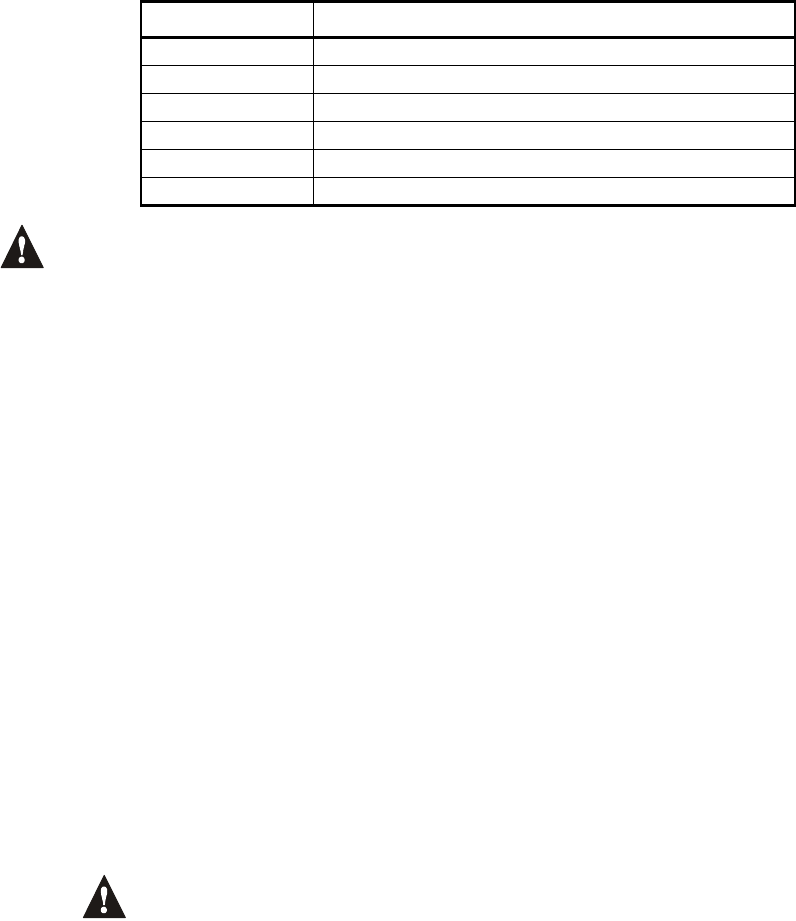
If Hexadecimals (0 to FF) are used to program the report codes, verify that the pager also supports
Hexadecimals. If the pager does not support Hexadecimals, use only the digits 0 to 9.
UL Note: The installer is required to verify the complete compatibility of the DAC Receiver and formats at least
once per year.
9.5.1 STANDARD PULSE FORMATS
The Spectra Control Panels can use the Ademco slow, Silent Knight and Sescoa standard pulse reporting formats (see
Table 10 above).
9.5.2 ADEMCO EXPRESS
The Ademco Express is a high-speed reporting format, which will transmit the 2-digit (11 to FF) report codes
programmed into sections [160] to [213]. Unlike other Ademco formats, the Ademco Express does not use the Contact
ID Report Codes.
9.5.3 ADEMCO CONTACT ID
Ademco Contact ID is a fast communicator format that uses tone reporting instead of pulse reporting. This communicator
format also uses a pre-defined list of industry standard messages and report codes that will suit most of your basic
installation needs. Please refer to the Contact ID Report Codes List in the Programming Guide for a complete list of these
report codes and messages.
9.5.4 CONTACT ID OPTIONS
Section [136]: Dialer Options
Option [3] OFF = Programmable Codes
Option [3] ON = All Codes (default)
When using the Programmable Codes format, use the Ademco Contact ID Report Codes List in the Spectra System
Programming Guide (version 2.0 or higher) to program the desired report codes into sections [160] to [213]. Enter FF
to use the default Contact ID Report Codes. Press the [FORCE] key to enter a 0 value. When using the All Codes
format, the control panel will automatically generate Contact ID Report Codes for every event in sections [160] to [213].
Refer to the “All Codes” Ademco Contact ID Report Code List in the Spectra System Programming Guide.
When using the Ademco Contact ID Programmable format, both telephone numbers must use this
reporting format.
9.5.5 PAGER REPORTING FORMAT
Section [136]: Dialer Options
[6] OFF / [7] OFF: 1 call to the pager/cellular telephone
[6] OFF / [7] ON: 2 calls to the pager/cellular telephone
[6] ON / [7] OFF: 3 calls to the pager/cellular telephone
[6] ON / [7] ON: 4 calls to the pager/cellular telephone
Using this format allows the control panel to transmit report codes to a pager or a cellular telephone. Since the control
panel cannot confirm whether the transmission was successful or not, it can be programmed to call the pager or
cellular telephone up to four times and transmit the report codes each time. To ensure that the report is received, the
control panel transmits the account number, the report code and the # sign four times during each call. Also, refer to
the Pager Delay in section 9.6.
9.6 PAGER DELAY
Section [083]
001 to 255 seconds, default = 5 seconds
When using the Pager Reporting Format (see section 9.5.5), the control panel will wait for the Pager Delay period before
transmitting the report codes. This is to allow time for the pager system to provide a dial tone or to bypass the “welcome”
message before sending data.
Table 10:
Reporting Formats
Value Entered Reporting Format
1 Ademco Slow (1400Hz, 1900Hz, 10BPS)
2 Silent Knight Fast (1400Hz, 1900Hz, 10BPS)
3 SESCOA (2300Hz, 1800Hz, 20BPS)
4 Ademco Express (DTMF 4+2)
5 (Default) Ademco Contact ID
6 Pager Format

9.7 EVENT CALL DIRECTION
This feature determines where each group of events will be reported. The control panel events are divided into five groups (see
above) where each event group can be programmed to dial one or both Central Station Telephone Numbers. When a reportable
event occurs in the system, the control panel will verify that one of the two telephone numbers has been enabled. The control
panel will begin by dialing the selected telephone number(s). If both numbers were selected it will begin with Central Station
Telephone Number 1. After the Maximum Dialing Attempts (see page 35) to one central station telephone number have failed, the
control panel will then dial the backup telephone number. If the Alternate Dial Option (see page 36) is enabled, the control panel
will dial the programmed backup telephone number after every failed attempt. If no backup telephone number is programmed,
the control panel will never report to the backup telephone number. Also, refer to Delay Between Dialing Attempts on page 36.
Example: The system is armed and zone 1 has been breached causing an alarm. If option [3] is off and option [4] is on in section
[137], the control panel will attempt to communicate with Central Station Telephone Number 2 in order to transmit the Zone 1
Alarm Report Code programmed in section [187].
9.8 DIALING METHOD
Section [135]: Dialer Options
Option [4] OFF = Pulse Dialing. (Also, refer to Pulse Ratio, below)
Option [4] ON = Tone/DTMF Dialing (default)
9.9 PULSE RATIO
Section [135]: Dialer Options
Option [5] OFF = European Pulse Ratio of 1:2
Option [5] ON = U.S.A. Pulse Ratio of 1:1.5 (default)
When using Pulse dialing, you can select one of two Pulse Ratios. Although most European countries use the 1:2 pulse ratio, the
1:1.5 ratio may provide better results in some cases. The same applies for North American countries. If the 1:1.5 pulse ratio is not
providing the desired results, the 1:2 ratio may be used.
9.10 BELL ON COMMUNICATION FAILURE
Section [135]: Dialer Options
Option [6] OFF = Bell On Communication Failure Disabled (default)
Option [6] ON = Bell On Communication Failure Enabled
If the control panel fails to communicate with the central station when the system is armed, it will enable the BELL output, setting
off any bells or sirens connected to the output.
9.11 DIAL TONE DELAY
Section [136]: Dialer Options
Option [5] OFF = Dialer will continue to dial if no dial tone is present after 4 seconds (default).
Option [5] ON = Dialer will hang-up if no dial tone is present after 16 seconds
9.12 MAXIMUM DIALING ATTEMPTS
Section [081]
001 to 016 attempts, Default = 8 attempts
The value programmed in section [081] determines how many times the control panel will re-dial the same Central Station
Telephone Number before proceeding to the next number.
Section [137]
Option [1] ON = Call Telephone #1 for
Option [2] ON = Call Telephone #2 for
Option [3] ON = Call Telephone #1 for
Option [4] ON = Call Telephone #2 for
Option [5] ON = Call Telephone #1 for
Option [6] ON = Call Telephone #2 for
Section [138]
Option [1] ON = Call Telephone #1 for
Option [2] ON = Call Telephone #2 for
Option [3] ON = Call Telephone #1 for
Option [4] ON = Call Telephone #2 for
Arm/Disarm Report Codes in sections [160] to [186] (page 31)
Alarm/Restore Report Codes in sections [187] to [196] (pages 31 to 32)
Tamper/Restore Report Codes in sections [197] to [204] (page 32)
Trouble/Restore Report Codes in sections [205] to [210] (pages 32 to 33)
Special Report Codes in sections [211] to [213] (page 33)
9.13 DELAY BETWEEN DIALING ATTEMPTS
Section [082]
000 to 255 seconds, Default = 20 seconds
This delay determines the amount of time the control panel will wait between each dialing attempt.
9.14 ALTERNATE DIAL OPTION
Section [136]: Dialer Options
Option [4] OFF = Alternate Dial Disabled (default)
Option [4] ON = Alternate Dial Enabled
With option [4] OFF, the control panel will dial the backup telephone number programmed in section [153] after all attempts to
one Central Station Telephone Number have failed (see section 9.12). With option [4] ON, the control panel will dial the backup
telephone number after every failed attempt.
9.15 RECENT CLOSE DELAY
Section [085]
000 to 255 seconds, Default = no delay
If after having armed the system, an alarm is generated within the period defined by the Recent Close Delay, the control panel will
attempt to transmit the Recent Close report code programmed in section [195].
9.16 AUTO TEST REPORT
Sections [087]
000=disabled, 001 to 255 days, Default = disabled
Section [110]: Time (HH:MM)
The control panel will transmit the Test Report report code programmed into section [211] after the number of days programmed
into section [087] has elapsed at the time programmed into section [110]. Use the 24-hour clock to program the time (i.e. 6:30PM
= 18:30). The first Test Report will be transmitted within 24 hours after the feature is enabled at the time programmed in [110].
Example: Section [087] = 005 and section [110] = 13:00. The first Test Report will be sent at 1 PM that day and then the report
will be sent every 5 days at 1 PM.
9.17 POWER FAILURE REPORT DELAY
Section [086]
001 to 255 minutes, Default = 15 minutes
The control panel will transmit the AC Failure report code programmed in section [205] after the Power Failure Report Delay
period has elapsed.
9.18 DISARM REPORTING OPTIONS
Section [131]: Arming /Disarming Options
Option [1] OFF = Always Report Disarming
Option [1] ON = Report Disarming Only After Alarm (default)
With option [1] OFF, the control panel will send the Disarming report codes (see page 31) to the central station every time the
system is disarmed. With option [1] ON, the control panel will send the Disarming report codes to the central station when the
system is disarmed following an alarm.
9.19 ZONE RESTORE REPORT OPTIONS
Section [132]: Zone Options
Option [6] OFF = Report On Bell Cut-Off (default)
Option [6] ON = Report On Zone Closure
With option [6] OFF, the control panel will send the Zone Alarm Restore report codes (see page 32) to the central station when
the zone has returned to normal and the Bell Cut-Off Timer has elapsed (see page 27). With option [6] ON, the control panel will
send the Zone Alarm Restore report codes to the central station as soon as the zone returns to normal or when the system is
disarmed.
9.20 TELEPHONE LINE MONITORING (TLM)
When enabled, the system verifies the existence of a telephone line once every second. A line test failure occurs when the TLM
detects less than 3 volts for the period defined by the TLM Fail Timer. If the line test fails, the control panel’s STATUS LED flashes
and generates one or more conditions as defined by the TLM settings below. These will be restored when the control panel
detects the telephone line again. Please note that when the dialer detects an incoming call, the TLM test will stop for 1 minute.
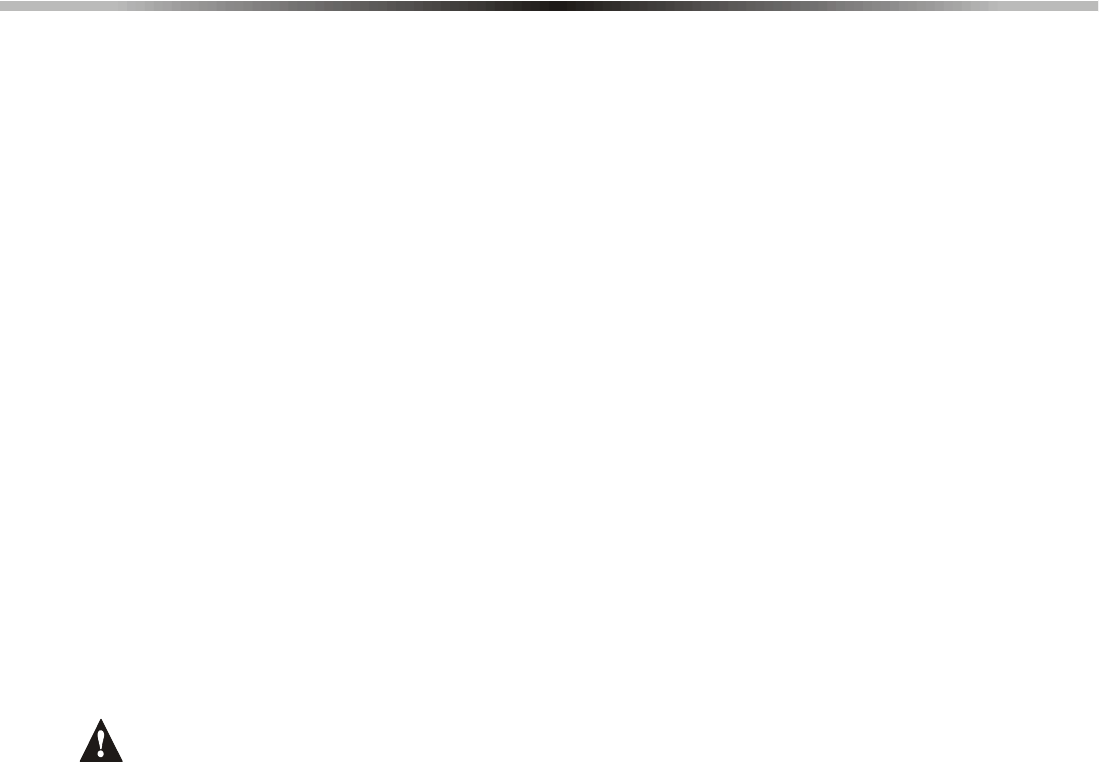
Section [135]: Dialer Options
[1] OFF / [2] OFF: TLM Disabled
[1] OFF / [2] ON: Trouble Only
Upon line test failure, a TLM Trouble will appear in the keypads’ Trouble Display (see page 45).
[1] ON / [2] OFF: AlarmIfSystemArmed
Upon line test failure, a TLM Trouble will appear in the keypads’ Trouble Display (see page 45) and if the system is armed, the
control panel will generate an alarm.
[1] ON / [2] ON: Silent Alarm Becomes Audible
Upon line test failure, a TLM Trouble will appear in the keypads’ Trouble Display (see page 45) and causes a silent zone or silent
panic alarm to switch to audible.
9.20.1 TLM FAIL TIMER
Section [079]
016 to 255 x 2 seconds, Default = 32 seconds
If TLM does not detect the existence of a telephone line for the duration of this period, the control panel will generate
the condition(s) defined by the TLM options (see above).
PART 10: PROGRAMMABLE OUTPUTS
A PGM is a programmable output that toggles to its opposite state (i.e. a normally open PGM will close) when a specific event has occurred
in the system. For example, a PGM can be used to reset smoke detectors, activate bells or strobe lights, open/close garage doors and
much more. When a PGM closes, the control panel supplies a ground to the PGM activating any device or relay connected to it. When a
PGM opens, the circuit opens from ground, therefore, cutting power to any devices connected to it.
PGM1
A programmable output that provides
up to 150mA.
Refer to
Alarm Relay and PGMs on page 6.
PGM2
PGM2 is a programmable output that can provide up to 2.5A. PGM2 is designed to be used as a Strobe Output. For information refer to
PGM Strobe Options on page 38. For connections, refer to Alarm Relay and PGMs on page 6.
Global PGM
The Global PGM allows you to use the control panel’s PGM Event List to activate PGMs located on a module or LCD keypad. For example,
if you enable a module’s “Follows Global PGM” option, the PGM on the module will activate whenever the event programmed in section
[124] occurs. Every PGM on every keypad and/or expansion bus module can be programmed to follow the event(s) defined by the Global
PGM.
10.1 PGM ACTIVATION EVENT
Sections [120], [122], and [124]
This feature allows you to program the control panel to activate a PGM when a specific event occurs in the system. The PGM will
remain in its active state until the programmed PGM Deactivation Event occurs or when the PGM Delay period elapses (see
page 38). For the Event List see the PGM Table in the Spectra 1759EX Programming Guide. To program a PGM Activation
Event:
1) Enter section that represents the desired PGM. PGM1 = [120],PGM2=[122],GlobalPGM=[124]
2) Enter the Event Group #.
3) Enter the Sub-Group #.
4) Enter the Partition #
01 = Partition 1
02 = Partition 2
99 = Both Partitions
The “AC Loss” PGM Event will only occur after the Power Failure Report Delay elapses (see page 36).

10.2 PGM DEACTIVATION EVENT
Sections [121], [123], [125]
After PGM activation, the PGM will return to its normal state (deactivate) when the programmed PGM Deactivation Event occurs.
Instead of deactivating the PGM when a specific event occurs, the PGM can deactivate after a programmed period elapses (see
PGM Delay). For the Event List see the PGM Table in the Spectra 1759EX Programming Guide. If using the PGM Delay, these
sections can be used as a second activation event.
1) Enter section that represents the desired PGM. PGM1 = [121],PGM2=[123],GlobalPGM=[125]
2) Enter the Event Group #.
3) Enter the Sub-Group #.
4) Enter the Partition #
01 = Partition 1
02 = Partition 2
99 = Both Partitions
10.3 PGM DELAY
Section [066] = PGM1, [067] = PGM2, [068] = Global PGM
001 to 255 seconds, 000 = Follows Deactivation Event, Default = 5 seconds
Instead of deactivating the PGM on the occurrence of a specific event, the PGM will deactivate after the period programmed here
has elapsed.
If a PGM Delay is programmed, the deactivation event can be used as a second activation event.
10.4 PGM NORMAL STATE
Section [126]: Options [4], [5] and [6]
A PGM toggles to its opposite state (i.e. a normally open PGM will close) when a specific event has occurred in the system. You
can program each PGM output to be normally open (N.O.) or normally closed (N.C.) by enabling or disabling options [4],[5] and
[6] in section [126].
Option [4] OFF = PGM1 Normally Closed (Default)
Option [4] ON = PGM1 Normally Open
Option [5] OFF = PGM2 Normally Closed (Default)
Option [5] ON = PGM2 Normally Open
Option [6] OFF = Global PGM Normally Closed (Default)
Option [6] ON = Global PGM Normally Open
10.5 PGM2 STROBE OPTIONS
Section [129]: General Options
Option [1] OFF = PGM2 Output is Steady (Default)
Option [1] ON = PGM2 Output is Pulsed (Strobe)
With option [1] enabled, PGM2 will flash on and off whenever activated. Otherwise, it will provide a steady output.
Option [2] OFF = Disable PGM2 Pulse When System is Armed (Default)
Option [2] ON = Enable PGM2 Pulse When System is Armed
Whenever the system is armed, PGM2 will flash once every 30 seconds until the system is disarmed.
Option [3] OFF = Disable PGM2 Pulse on Arm/Disarm (Default)
Option [3] ON = Enable PGM2 Pulse on Arm/Disarm Enabled
With this option enabled, PGM2 will flash once to indicate the system has been armed and will flash twice to indicate that the
system has been disarmed.
10.6 ALARM RELAY OPTIONS
Section [127]: General Options
Option [7] OFF = Alarm Relay Follows Bell Output (Default)
Option [7] ON = Alarm Relay Follows Global PGM
With this option off, the optional Alarm Relay will activate or deactivate whenever the Bell Output activates or deactivates. With
the option on, the Alarm Relay will activate or deactivate whenever Global PGM activates or deactivates.

PART 11: SYSTEM SETTINGS
11.1 HARDWARE RESET
Performing a hardware reset will set all control panel settings to factory default except for the Panel ID and PC Password. Also,
the event buffer will not be erased. To perform a power down reset:
1) Make sure the Installer Lock is disabled (see below)
2) Remove battery and AC power from the control panel.
3) Set the RESET jumper to on by placing a jumper on the RESET pins of the control panel.
4) Re-connect AC and battery power to the control panel.
5) Wait 10 seconds and remove the jumper.
11.2 INSTALLER LOCK
Section [282]
000 = Disabled, 147 = Lock Enabled, Default = Disabled
Program 147 into section [282] to lock all programming. Performing a hardware reset will not affect the current panel settings. To
remove the Installer Lock, enter 000. Please note that four seconds after resetting the control panel the STATUS LED on the
control panel will flash fast for 5 seconds to indicate that the installer lock is enabled.
11.3 KEYPAD LOCKOUT FEATURE
Sections [092] and [093]
If a consecutive number of invalid codes are entered into a keypad, the control panel can be set to deny access from all keypads
for a specified period and send the report code programmed in section [196]. Program the number of consecutive invalid codes
from 001 to 255 (000 = disabled) into section [092]. Program the duration of the Keypad Lockout from 001 to 255 minutes into
section [093]. If 000 is programmed in section [093], the keypads will not be locked-out, but the report code programmed in
section [196] will be sent.
11.4 BATTERY CHARGE CURRENT
Section [127]: General Options
Option [5] OFF = Battery Charge Current: 350mA (default)
Option [5] ON = Battery Charge Current: 700mA (40VA transformer required)
11.5 PARTITIONING
Section [127]: General Options
Option [1] OFF = Partitioning Disabled (default)
Option [1] ON = Partitioning Enabled
The Spectra system is equipped with a partitioning feature which can divide the alarm system into two distinct areas identified as
Partition 1 and Partition 2. Partitioning can be used in installations where shared security systems are more practical, such as an
office/warehouse building. When partitioned, each zone, each User Code (see User Code Options on page 12) and some of the
system's features can be assigned to Partition 1, Partition 2 or both (see Zone Partition Assignment on page 18). If the system
is not partitioned, all User Codes and features will be recognized as belonging to Partition 1.
• Users can only arm partitions to which they have been assigned.
• Only zones assigned to Partition 1 will arm/disarm when Partition 1 is armed or disarmed.
• Only zones assigned to Partition 2 will arm/disarm when Partition 2 is armed or disarmed.
• Zones assigned to both partitions will arm when both partitions are armed and will disarm when at least one disarms.
• The following features can be programmed separately for each partition: Entry/Exit Delay Timer, Auto-Arming Options, Bell Cut-Off
Timer, Switch to Stay Arming, PGM Events and Account Numbers.
If the system is not partitioned, all zones, User Codes, and features will be recognized as belonging to partition 1.
Zones that have been manually assigned to partition 2 will no longer function.
11.6 SYSTEM REAL-TIME CLOCK
Section [280]
Program the current time into section [280] using the 24-hour clock (i.e. 8:30PM = 20:30).
11.7 CLOCK ADJUST
Section [088]
000 = Disabled, 001 to 255, Default = Disabled
001 to 127 = + 1 to +127 seconds
128 to 255 = -1 to -127 seconds
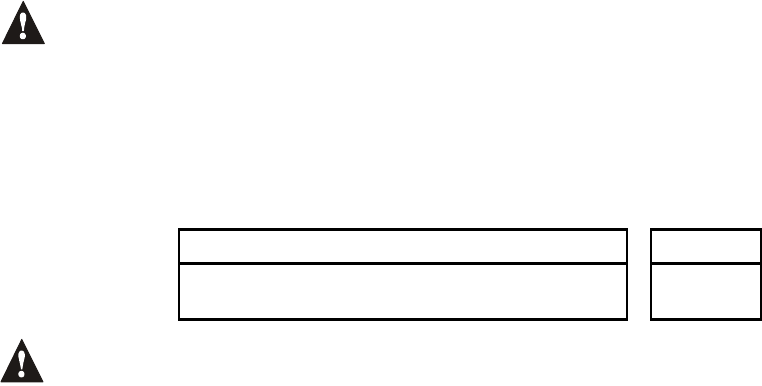
If you notice a gain or loss in control panel time, calculate the average gain or loss per day and program the opposite amount in
order to automatically correct the time setting every 24 hours.
Example: If a control panel loses 4 minutes per month, this represents an average loss of 8 seconds per day. Therefore,
programming 008 (plus 8 seconds) into section [088] would compensate for the 8-second loss.
11.8 KEYPAD TAMPER SUPERVISION
Section [128]: General Options
Option [7] OFF = Keypad 1 Tamper Supervision Disabled (default)
Option [7] ON = Keypad 1 Tamper Supervision Enabled
Option [8] OFF = Keypad 2 Tamper Supervision Disabled (default)
Option [8] ON = Keypad 2 Tamper Supervision Enabled
The control panel can be programmed to monitor the on-board tamper status of one or two keypads in the system. If Keypad 1
Tamper Supervision is enabled, the control panel will verify the on-board tamper status of a keypad whose Keypad Zone Jumper
(J1) is set to on. If Keypad 2 Tamper Supervision is enabled, the control panel will verify the on-board tamper status of a keypad
whose Keypad Zone Jumper (J1) is set to off.
Regardless of whether the keypad zones are being used or not, if more than one keypad has the same Keypad
Zone Jumper setting, Keypad Tamper Supervision will be lost. For example, if two of the keypads in your system
have the keypad zone jumper (J1) set to on, the control panel will not recognize a Keypad 1 Tamper Supervision
Failure.
If a keypad tamper occurs, the control panel can transmit the appropriate Zone Tamper report code (see page 32) as originating
from the zones specified by the Table 11. If the zone (as specified by Table 11) is enabled, the control panel will report the tamper
as originating from the partition where the zone is assigned. If the zone is not enabled, the control panel will send the Zone
Tamper report code as originating from partition 1. A Tamper/Zone Wiring Failure will also appear in the keypads’ Trouble Display
(see page 45).
When Reassign Keypad Zone 2 is enabled (see section 5.2), the Keypad Tamper Supervision for keypad zone 2 is
lost. Therefore, Keypad Tamper Supervision will ONLY function on Keypad Zone 1.
11.9 KEYPAD AUDIBLE TROUBLE WARNING
Section [127]: General Options
Option [3] OFF = Keypad Beep on Trouble Disabled
Option [3] ON = Keypad Beep on Trouble Enabled (default)
When enabled, the keypads emit an intermittent beep tone whenever a trouble condition occurs in the system. The intermittent
beep tone remains activated until the user enters the Trouble Display by pressing the [TBL]or [TRBL]key. The intermittent beeps
will re-initialize whenever a new trouble occurs or the trouble restores and re-occurs.
11.10 CONFIDENTIAL MODE
Section [126] Options [1], [2] and [3]
Option [1] OFF = Confidential Mode Disabled (default)
Option [1] ON = Confidential Mode Enabled
Option [2] OFF = Keypads activate when an access code is entered
Option [2] ON = Keypads activate when a key is pressed (default)
Option [3] OFF = Confidential Mode Timer is 2 minutes
Option [3] ON = Confidential Mode Timer is 5 seconds (default)
If Confidential Mode is enabled and no actions are performed on the keypads for the time defined by the Confidential Mode
Timer, all the keypads’ LEDs will be off and LCD screens will show “Paradox Family” until either a key is pressed or an access
code is entered. When the system exits Confidential Mode, the keypads will display the system’s status. Confidential Mode is
activated by enabling option [1].Option[2] regulates whether the keypads will be activated at the touch of a key or only when an
access code is entered. Option [3] determines the amount of time without action before the system enters Confidential Mode (5
seconds or 2 minutes).
Table 11:
Zone Tamper Report Code for Keypad Tamper Supervision Failure
Keypad Tamper
1759EX
Keypad 1 Tamper Supervision = Zone 6
Keypad 2 Tamper Supervision = Zone 7

11.11 INSTALLER QUICK FUNCTIONS KEYS
After entering the Installer Code, you can press a key to perform specific actions as described below.
11.11.1 INSTALLER TEST MODE
[ENTER]+[INSTALLER CODE]+[TBL]OR [TRBL]
The Installer Test Mode allows you to perform walk tests where the bell or siren will squawk and the keypad will emit a
Confirmation Beep to indicate opened zones. To enter this mode, simply enter the Installer Code then press the [TBL]
or [TRBL]key. The keypad will emit a confirmation beep. To disable this mode, press the [TBL]key again. The keypad
will emit a Rejection Beep.
11.11.2 TEST REPORT
[ENTER]+[INSTALLER CODE]+[MEM]
Sends the Test Report report code programmed in section [211] to the central station (see Reporting and Dialer
settings on page 30).
11.11.3 CALL WINLOAD SOFTWARE
[ENTER]+[INSTALLER CODE]+[BYP]
Refer to page 43.
11.11.4 CANCEL COMMUNICATION
[ENTER]+[INSTALLER CODE]+[STAY]
Cancels all communication until the next reportable event.
11.11.5 ANSWER WINLOAD SOFTWARE
[ENTER]+[INSTALLER CODE]+[FORCE]
Refer to page 43.
11.12 PGM MODULES SUPERVISION
Section [129]: General Options
Option [7] OFF = 4-PGM Output Module Supervision Disabled (default)
Option [7] ON = 4-PGM Output Module Supervision Enabled
By enabling this option, the control panel will supervise the 4-PGM Output Module (APR3-PGM4) connected to the Spectra bus.
This means that whenever the module is disconnected or is not communicating with the control panel, the control panel will
attempt to transmit the Module Fault report code programmed in section [210] and the Module Loss Failure will appear in the
keypads’ Trouble Display (see page 45).
Modules with the APR- prefix are compatible with Spectra (versions 2.0 and higher) and Digiplex. Modules with the APR3-
prefix are compatible with Spectra( versions 2.0 and higher), Digiplex and DigiplexNE.
11.13 PRINTER MODULE SUPERVISION
Section [129]: General Options
Option [8] OFF = Printer Module Supervision Disabled (default)
Option [8] ON = Printer Module Supervision Enabled
By enabling this option, the control panel will supervise the Printer Module (APR3-PRT1) connected to the Spectra bus. This
means that whenever the Printer Module is disconnected or is not communicating with the control panel, the control panel will
attempt to transmit the Module Fault report code programmed in section [210] and the Module Loss Failure will appear in the
keypads’ Trouble Display (see page 45).
Modules with the APR- prefix are compatible with Spectra (versions 2.0 and higher) and Digiplex. Modules with the APR3-
prefix are compatible with Spectra( versions 2.0 and higher), Digiplex and DigiplexNE.
11.14 ZONE EXPANSION BUS MODULE SUPERVISION
Section [129]: General Options
Option [4] OFF = Zone Expansion Bus Module Supervision Disabled (default)
Option [4] ON = Zone Expansion Bus Module Supervision Enabled
By enabling this option, the control panel will supervise the 4- or 8-Zone Expansion Bus Module (SPC/APR3-ZX4 or SPC/APR3-
ZX8) connected to the Spectra bus. This means that whenever the Zone Expansion Bus Module is disconnected or is not
communicating with the control panel, the control panel will attempt to transmit the Module Fault report code programmed in
section [210] and the Module Loss Failure will appear in the keypads’ Trouble Display (see page 45).
Modules with the APR- prefix are compatible with Spectra (versions 2.0 and higher) and Digiplex. Modules with the APR3-
prefix are compatible with Spectra( versions 2.0 and higher), Digiplex and DigiplexNE.
11.15 WIRELESS TRANSMITTER LOW BATTERY SUPERVISION
Section [129]: General Options
Option [6] OFF = Wireless Transmitter Low Battery Supervision Disabled (default)
Option [6] ON = Wireless Transmitter Low Battery Supervision Enabled
When option [6] in section [129] is enabled and the battery voltage of an Omnia wireless transmitter (motion detector or contact
switch) has dropped below recommended limits, the control panel will attempt to transmit the Wireless Transmitter Low Battery
report code programmed in section [210] and the Wireless Transmitter Low Battery Failure will appear in the keypads’ Trouble
Display (see page 45).
11.16 WIRELESS TRANSMITTER SUPERVISION OPTIONS
Section [132]: Zone Options
[7] OFF / [8] OFF: Supervision Failure Recognition Disabled (default)
When a tamper occurs on an Omnia wireless transmitter zone in a disarmed system, the control panel will display the zone as
open in the keypad display, but will not generate an alarm. When it occurs on in an armed system, the control panel will follow
the zone's Alarm Types setting (see page 18). This option is not permitted on UL systems.
[7] OFF / [8] ON: Trouble Only
When a tamper occurs on an Omnia wireless transmitter zone in a disarmed system, a Wireless Transmitter Supervision Loss
will appear in the keypads’ Trouble Display (see page 45) and the control panel will attempt to transmit the TX Supervision Loss
report code programmed in section [213]. When it occurs on in an armed system, the control panel will follow the zone's Alarm
Types setting (see page 18).
[7] ON / [8] OFF: Silent Alarm
When a tamper occurs on an Omnia wireless transmitter zone in a disarmed system, it functions the same as the Trouble Only
setting, but it will also generate a silent alarm. A silent alarm will not trigger any bells or sirens, but the system will have to be
disarmed. In an armed system, the control panel will follow the zone's Alarm Types setting (see page 18).
[7] ON / [8] ON: Audible Alarm
When a tamper occurs on an Omnia wireless transmitter zone in a disarmed system, it functions the same as the Trouble Only
setting, except it will also generate an audible alarm. In an armed system, the control panel will follow the zone's Alarm Types
setting (see page 18).
11.16.1 RESTRICT ARMING ON SUPERVISION LOSS
Section [131]: Arming/Disarming Options
Option [6] OFF = Disabled (default)
Option [6] ON = Restrict Arming on Wireless Transmitter Supervision Loss
The control panel will not allow users to arm the system if it receives a Supervision Loss signal. Please note that the
Wireless Transmitter Supervision Options (see section 11.16) must be enabled. The control panel will not arm any
partition until all Supervision Loss trouble conditions are rectified.
11.16.2 SUPERVISION BYPASS OPTIONS
Section [131]: Arming/Disarming Options
Option [7] OFF = Generate Supervision Loss if detected on a Bypassed Wireless Transmitter Zone
(default)
Option [7] ON = No Supervision Loss if Detected on a Bypassed Wireless Transmitter Zone
When this feature is enabled, the Wireless Transmitter Supervision Options will follow the zone's bypass definition.
This means the control panel will not perform any action if a Supervision Loss occurs on a bypassed zone. When this
feature is disabled, the Wireless Transmitter Supervision Options will ignore the bypass definition. This means the
control panel will generate an incident as per Wireless Transmitter Supervision Options if a supervision loss occurs on
a bypassed zone.
11.17 REPROGRAM ALL EXPANSION MODULES
Section [750]
After removing an expansion bus module from the communication bus, the control panel keeps the module’s programmed
sections in memory. Therefore, if you add or replace a module or when you have downloaded the contents of the Paradox
Memory Key (see section 3.4), you can reprogram the modules with the settings saved in the control panel. To do so, enter
section [750] and press [ENTER]. The keypad will emit 2 beeps every second while downloading.

PART 12: SETTINGS FOR WINLOAD SOFTWARE
12.1 PANEL ANSWER OPTIONS
The following two options define how the control panel answers an incoming call from a computer using the WinLoad Software for
Windows®.
12.1.1 ANSWERING MACHINE OVERRIDE
Section [077]
000 = Disabled, 010 to 255 seconds, Default = disabled
When using the WinLoad software to communicate remotely with an installation site that uses an answering machine
or service, the answering machine override must be programmed. Using the WinLoad software you will call the control
panel, hang up, then call back. If the installation site is called back within the programmed delay period, the control
panel will override the answering machine or service by picking-up the line after the first ring on the second call. You
must wait at least 10 seconds before attempting the second call, otherwise, the control panel will think it is the same
call. For details on how to use the WinLoad software, refer to the WinLoad Help Manual.
Example: A security installation is using an answering machine set to answer after three rings. If section
[077] has been programmed with 040 (40 seconds) and the second call is made within 40 seconds, the
control panel will pick up the line on the first ring. If it takes more than 40 seconds, the control panel will not
answer on the first ring and the answering machine will answer after three rings.
12.1.2 NUMBER OF RINGS
Section [078]
000 = disabled, 001 to 015 rings, Default = 8 rings
This value represents the number of rings the control panel will wait before picking-up the line. If the line is not
answered after the number of programmed rings, the control panel will answer the call. You must wait at least 10
seconds before attempting the second call or the control panel will think it is the same call.
12.2 PANEL IDENTIFIER
Section [141]
0000 to FFFF
This 4-digit code identifies the control panel to the WinLoad software before initiating communication. The control panel will verify
that the Panel Identifier in the WinLoad software is the same. If the codes do not match, the control panel will not establish
communication. Therefore, be sure to program the same panel identifier into both the Spectra control panel and the WinLoad
software.
12.3 PC PASSWORD
Section [142]
0000 to FFFF
This 4-digit password identifies the PC to the panel before establishing communication. Program the same PC Password into
both the Spectra control panel and the WinLoad software. If the passwords do not match, the WinLoad software will not establish
communication.
12.4 PC TELEPHONE NUMBER
Section [150]
Up to 32 digits
The control panel will dial this number when trying to initiate communication with a computer using the WinLoad software. You
can enter any digit from 0 to 9 and any special keys or functions (see Table 9 on page 33) up to a maximum of 32 digits.
12.5 CALL WINLOAD SOFTWARE
[ENTER]+[INSTALLER CODE]+[BYP]
The control panel will dial the PC Telephone Number programmed in section [150] in order to communicate with the WinLoad
software. The control panel and the WinLoad software will verify that the Panel Identifier and the PC Password match before
establishing communication.
12.6 ANSWER WINLOAD SOFTWARE
[ENTER]+[INSTALLER CODE]+[FORCE]
In order to perform on-site upload/download connect your computer directly to the control panel using an ADP-1 line adapter. In
the WinLoad software set Dialing Method to Blind Dial. Program the panel telephone number in WinLoad software and follow the
instructions on the ADP-1 adapter. When the computer has dialed, press [ENTER]followed by the Installer Code, then press the
[FORCE]key to manually answer the WinLoad software from the control panel.
12.7 AUTO EVENT BUFFER TRANSMISSION
Section [136]: Dialer Options
Option [2] OFF = Auto Event Buffer Transmission Disabled (default)
Option [2] ON = Auto Event Buffer Transmission Enabled
When the event buffer reaches 50% capacity, the control panel will make two attempts to establish communication with a PC
using the WinLoad software by calling the PC Telephone Number programmed in section [150]. The WinLoad software must be
in Wait to Dial mode. When the system establishes communication, it will upload the contents of the event buffer to the WinLoad
software. If communication is interrupted before completing transmission or if after two attempts communication is not
established, the system will wait until the Event Buffer attains another 50% capacity before attempting to re-communicate with the
central station. When the Event Buffer is full, each subsequent new event will erase the oldest event in the buffer.
12.8 CALL BACK WINLOAD
Section [136]: Dialer Options
Option [1] OFF = Call Back WinLoad Disabled (default)
Option [1] ON = Call Back WinLoad Enabled
For additional security, when a PC using the WinLoad software attempts to communicate with the control panel, the control panel
can hang up and call the PC back in order to re-verify identification codes and re-establish communication. When the control
panel hangs up, the WinLoad software automatically goes into Wait for Call mode, ready to answer when the control panel calls
back. Please note that the PC Telephone Number must be programmed in section [150] in order to use the Call Back feature.

PART 13: USER OPERATION
13.1 TROUBLE DISPLAY
The Spectra system continuously monitors fourteen possible trouble conditions. When a trouble condition occurs, the [TBL]key or
[TRBL]indicator will illuminate on the LED keypads or “Trouble” will appear on the LCD keypad’s screen. Press the [TBL]or [TRBL]
key to switch to the Trouble Display.The[TBL]key or [TRBL]indicator will flash and lights corresponding to an existing trouble
condition will illuminate on the LED keypads (see Table 12) or the appropriate trouble message will appear on the LCD keypad.
Press the [CLEAR]key to exit the Trouble Display.
Please note that the keypad can be programmed to emit a BEEP every 5 seconds whenever a new trouble condition has occurred.
Pressing the [TBL]or [TRBL]key will stop the beeping.
Table 12:
Trouble List
LED # Description Details
[1] No/Low Battery Failure The control panel performs a dynamic battery test under load every 60 seconds.
This trouble indicates that the back up battery is disconnected or that the battery
should be replaced, as it will not provide adequate current in case of AC loss. This
trouble will also appear when the control panel is running on battery power and the
battery voltage has dropped to 10.5 volts or lower. This means the battery must be
recharged or replaced.
[2] Wireless Transmitter
Low Battery The battery voltage of an Omnia wireless transmitter has dropped below
recommended limits. To determine the zones generating the trouble, examine the
Low Battery LED indicators on all the transmitters. The batteries should be
replaced.
[3] Power Failure Upon power failure, the AC LED on all keypads will turn off. The control panel can
transmit the report code programmed in section [205]. This report code can be
delayed by programming a Power Failure Report Delay in section [086]. The AC
LED turns back on as soon as power is restored.
[4] Bell Disconnected This trouble occurs when a bell or siren is not connected to the bell output
terminals. If you are not using the BELL terminals, connect a 1KΩresistor across
the bell output.
[5] Maximum Bell Current The BELL output uses a fuseless circuit and will automatically shut down if the
current exceeds 3A. After opening the short or reducing the load, the bell current is
restored upon the following alarm generation. This trouble indicator will only
appear when a condition has occurred that would activate the bell output (e.g.
duringanalarm).
[6] Maximum Auxiliary Current The auxiliary output uses a fuseless circuit to protect the power supply against
current overload and automatically shuts down if the current exceeds 1.1A. After
opening the short or reducing the load, the panel will restore power to the auxiliary
output.
[7] Communicator Report Fail The control panel has failed all attempts to communicate with the central
monitoring station.
[8] Timer Loss The control panel’s internal clock must be re-programmed. To re-program the timer
press the [8] key followed by the current time using the 24-hour clock (i.e. 8:30PM
= 20:30).
[9] Tamper/Zone Wiring Fail If the Tamper Recognition options are enabled (see page 28), this trouble indicates
a wiring problem on one or more zones or that the cover has been removed on one
or more wireless transmitters. To provide line short recognition the zone
connections must have EOL resistors. If you press the [9] key,thekeypadwill
display which zones are in trouble. Enter the Installer Code to clear Tamper
troubles.
[10] Telephone Line Monitoring If the Telephone Line Monitoring (TLM) feature is enabled (see section [135]), this
trouble indicates that the control panel has not detected the presence of a
telephone line for 30 seconds.
[STAY]or
[11]
Fire Loop Trouble Indicates a wiring problem on a Fire Zone. Press [STAY]to view the zones that are
generating this trouble.
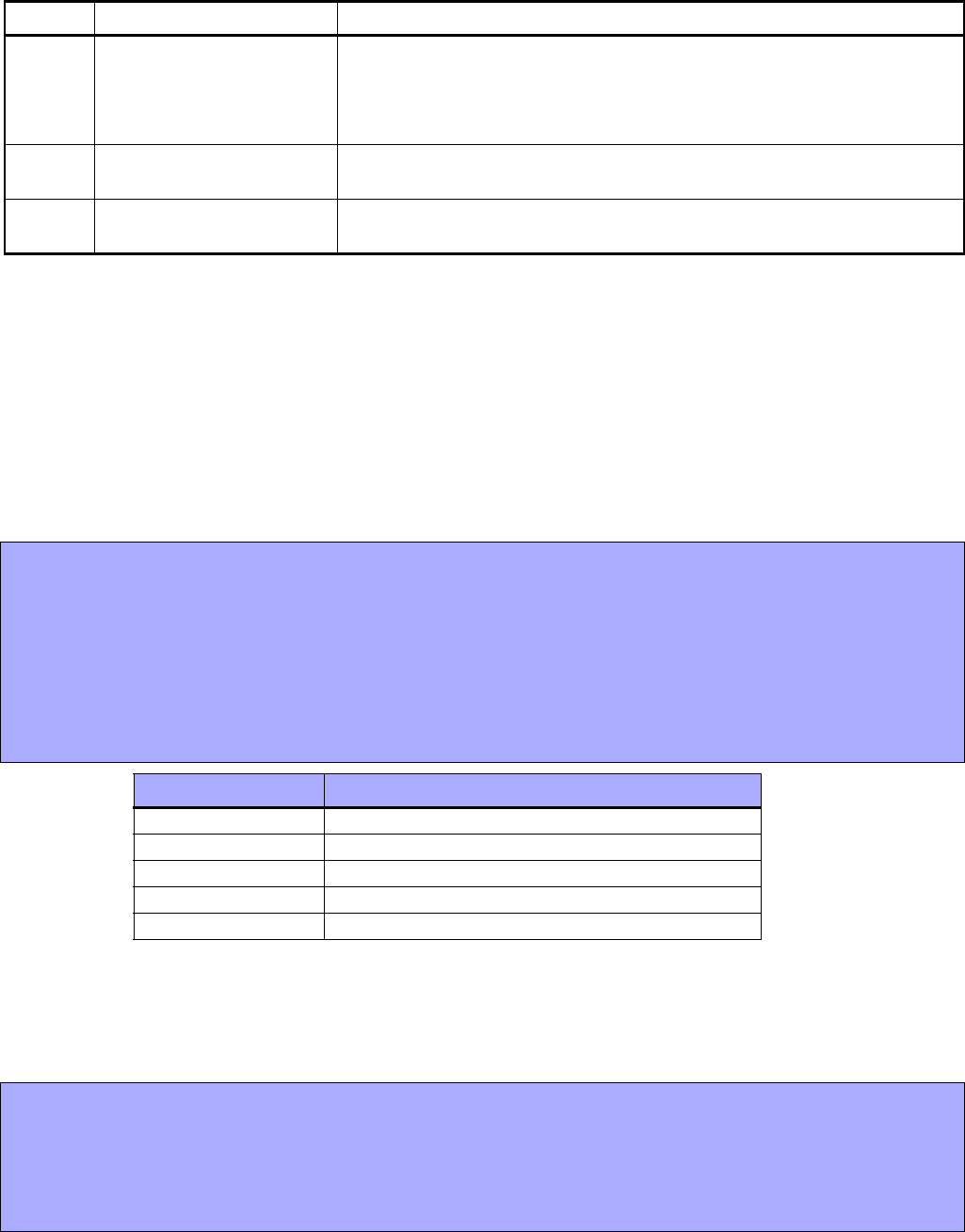
13.2 PROGRAMMING ACCESS CODES
Access Codes are personal identification numbers that allow you to enter certain programming modes, arm or disarm your
system as well as activate or deactivate PGMs. The Spectra security system supports the following:
System Master Code arms or disarm partitions using any arming method and can create, modify or delete any User Access
Code. Only the System Master Code can modify or delete User Access Codes assigned to both partitions.
Master Code 1 is permanently assigned to partition 1 and can be used to create, modify or delete User Access Codes that are
assigned to partition 1.
Master Code 2 is permanently assigned to partition 2 (except when partitioning is disabled, Master Code 2 will be assigned to
partition 1) and can be used to create, modify or delete User Access Codes that are assigned to the same partition.
45 User Access Codes (including 1 Duress code)
13.3 DISARMING & DEACTIVATING AN ALARM
To disarm an already armed system or to deactivate an alarm, simply key in a valid access code. Program a designated entry/exit
point, such as the front door or the garage door with an Entry Delay Timer. When these entry/exit point are opened (breached), it
will set off a timer. The system will not generate an alarm until this timer elapses, giving users enough time to enter the premises
and disarm the system. Any user can disarm the system, except users have been assigned the Arm Only Option.
13.4 REGULAR ARMING
This method, commonly used for day-to-day arming, will arm all the zones in the selected partition. If you make a mistake, the
[FORCE]
or [16]
Keypad Fault If the keypad is no longer communicating with the control panel, the [TBL]or [TRBL]
will flash, the [FORCE]key will illuminate (the LCD keypad displays “Keypad Fault”)
and the keypad will emit four consecutive beeps at 5-second intervals. Press any
key on the keypad to terminate the “beeping” sequence. When communication has
been restored, the system will revert to previous status.
[BYP]
or [12]
Module Loss A bus module is no longer communicating with the control panel. The
module’s supervision option must be enabled [129].
[MEM]
or [13]
Wireless Transmitter
Supervision Loss One or more wireless transmitters are no longer communicating with the receiver.
If you press the [MEM]key, the keypad will display which zones are in trouble.
How Do I Program Access Codes?
1) Press [ENTER].
2) Key in the [SYSTEM MASTER CODE]or [MASTER CODE].
3) Key in 3-digit [SECTION](see Table below).
4) Key in new 4- or 6-digit [ACCESS CODE].
[ENTER]flashes. Return to step 3.
How Do I Delete Access Codes?
1) Repeat steps 1 to 3 (see above).
2) Press the [FORCE]key once for each digit in the access code (4 or 6 times) until the keypad emits a Confirmation Beep.
Section User Codes
[001]
User Code 001 = System Master Code
[002]
User Code 002 = Master Code 1
[003]
User Code 003 = Master Code 2
[004] to [047]
User Code 004 to User Code 047
[048]
User Code 048 or Duress Code
How Do I Disarm the System or Deactivate an Alarm?
1) Key in your [ACCESS CODE]*.
The arm or alarm indication will turn off and the keypad will emit a Confirmation Beep.
*IF YOU HAVE ACCESS TO BOTH PARTITIONS
:
Press the key corresponding to the partition you wish to Disarm or to Disarm both partitions, press the [1] key then after the
Confirmation Beep press the [2] key.
Table 12:
Trouble List
LED # Description Details

keypad will emit a Rejection Beep. When you have correctly armed the system, the appropriate ARM indication will turn on and the
Exit Delay will be initiated. Please note that Regular Arming can also be activated through Auto-Arming, Keyswitch Arming or
One-Touch Arming.
13.5 STAY ARMING
This method allows users to remain in the protected area while partially arming the system. For example, when going to sleep at
night, entry/exit points like doors and windows can be armed while other zones like motion detectors remain deactivated. Please
note that Fire Zones cannot be bypassed.
If you make a mistake, the keypad will emit a Rejection Beep. When you have correctly Stay Armed the system, the appropriate
ARM or STAY indication appears and the Exit Delay is initiated. Stay Arming can also be activated using Auto-Arming, Keyswitch
Arming or One-Touch Arming. The User Code must have the Stay Arming Option enabled.
13.6 INSTANT ARMING
After Stay Arming the system and during its Exit Delay,press and hold the [STAY]key for 3 seconds.You should hear a
Confirmation Beep. This will switch all armed zones to Instant zones.
If you have access to both partitions:
To Instant Arm one partition, press [STAY]+[ACCESS CODE]+ Select Partition + [CLEAR]+ press & hold [STAY]
To Instant Arm both partitions, press [STAY]+[ACCESS CODE]+[1] +[2] + press & hold [STAY]
13.7 FORCE ARMING (NOT TO BE USED WITH UL INSTALLATIONS)
Force Arming allows users to rapidly arm the system, without having to wait for all zones in the system to be closed. Force
Arming is commonly used when a motion detector is protecting the area occupied by a keypad. Therefore, when arming the
system, if the motion detector is set as a Force Zone, the control panel will ignore the zone and allow users to arm the system
even if the zone is open. Any open Force Zones at the time of arming will be considered deactivated by the control panel. If
during this period a deactivated zone is closed, the control panel will revert that zone to active status, hence, will generate an
alarm if breached.
If you make a mistake, the keypad will emit a Rejection Beep. When correctly Force Armed, the appropriate arm indication
appears and the Exit Delay will initiate. Please note that Force Arming can also be activated using One-Touch Force Arming.
Also, note that the User Access Code must have the Force Arming Option enabled.
13.8 MANUAL BYPASS PROGRAMMING
Manual Bypass Programming allows users to program the alarm system to ignore (deactivate) specified zones the next time the
system is armed. The Access Code must have the Bypass Programming Option enabled. Please note that Fire Zones cannot be
bypassed. Manual Bypass Programming can also be activated using One-Touch Bypass Programming.
How Do I Regular Arm?
1) Green “READY” indicator must be illuminated. Unless the system is partitioned, in which case all zones in the desired parti-
tion must be closed.
2) Keyinavalid[ACCESS CODE]*.
*IF YOU HAVE ACCESS TO BOTH PARTITIONS
:
Press the key corresponding to the partition you wish to arm.To arm both partitions, press the [1] key then after the
Confirmation Beep press the [2] key.
How Do I Stay Arm?
1) All zones in the desired partition (except Stay Zones) must be closed.
2) Press the [STAY]key.
3) Keyinavalid[ACCESS CODE]*.
*IF YOU HAVE ACCESS TO BOTH PARTITIONS
:
Press the key corresponding to the partition you wish to Stay Arm. To Stay Arm both partitions, press the [1] key then after the
Confirmation Beep press the [2] key.
How Do I Force Arm?
1) All zones in the desired partition (except Force Zones)mustbeclosed.
2) Press the [FORCE]key.
3) Keyinavalid[ACCESS CODE]*.
*IF YOU HAVE ACCESS TO BOTH PARTITIONS
:
Press the key corresponding to the partition you wish to Force Arm.To arm both partitions, press the [1] key then after the
Confirmation Beep press the [2] key.

13.8.1 BYPASS RECALL FEATURE
After disarming the system, the control panel will erase the bypass entries. By using the Bypass Recall Feature,you
can reinstate the previous bypass entries saved in memory. This eliminates the need to manually program the bypass
entries every time you arm the system. The Access Code must have the Bypass Programming Option enabled.
13.9 ONE-TOUCH ARMING
One-Touch Arming allows users to arm the system without using an access code. Simply press and hold a key. One-Touch
Arming can be used to allow specific individuals like service personnel (i.e. cleaners, maintenance) to arm the system when
leaving the protected area, without giving them access to any other alarm system operations.
One-Touch Regular Arming
Press and hold the [ENTER]key for 3 seconds* to arm all zones in the partition.
One-Touch Force Arming
Press and hold the [FORCE]key for 3 seconds* to bypass any open Force Zones.
One-Touch Bypass Programming
Press and hold the [BYP]key for 3 seconds* to access Bypass Programming Mode.
One-Touch Stay Arming
Press and hold the [STAY]key for 3 seconds* to arm all zones not defined as Stay Zones.
Fast Exit - When the system is already Stay Armed:
•To Exit and Stay Arm: Press and hold the
[STAY]
key for 3 seconds*. The system will switch to Exit Delay. At the end of the Exit Delay
period, the system will return to Stay Arming.
•To Exit and Regular Arm: Press and hold the
[
ENTER
]
key for 3 seconds*. The system will switch to Exit Delay. At the end of the Exit
Delay period, the control panel will switch to Regular Arming.
•To Exit and Force Arm: Press and hold the
[FORCE]
key for 3 seconds*. The system will switch to Exit Delay. At the end of the Exit
Delay period, the control panel will switch to Force Arming.
13.10 KEYSWITCH ARMING
A keyswitch can be used to arm and disarm the system. Assign the keyswitch to a specific partition and program the keyswitch to
Stay or Regular Arm the assigned partition. Also program the keyswitch to function as a Maintained or Momentary keyswitch. To
arm the system using a Maintained Keyswitch, set the keyswitch to the ON position. To disarm the system set the keyswitch to the
OFF position. To arm the system using a Momentary Keyswitch, set the keyswitch to the ON position then turn it back to the OFF
position. Repeating this sequence will disarm the system.
13.11 PANIC ALARMS
In case of emergency, the Spectra system provides up to three panic alarms. These panic alarms, if programmed, will immediately
generate an alarm after pressing and holding two specific keys for two seconds, as described below.
Press and hold keys [1] and [3] for a panic alarm.
Press and hold keys [4] and [6] for a panic or medical alarm.
Press and hold keys [7] and [9] forapanicorfirealarm.
How do I Program Bypass Entries?
1) Press the [BYP]key.
2) Keyinavalid[ACCESS CODE]*.
3) Select one or more [ZONES]youwishtobypass.
4) Once you have entered the desired bypass entries, press the [ENTER]key to accept these entries.
*IF YOU HAVE ACCESS TO BOTH PARTITIONS
:
Press the key corresponding to the desired partition.
How Do I Recall Bypass Entries?
1) Press the [BYP]key.
2) Key in your [ACCESS CODE]*.
3) Press the [BYP]key. Previously bypassed zones will illuminate.
4) Press the [ENTER]key.
*IF YOU HAVE ACCESS TO BOTH PARTITIONS
:
Press the key corresponding to the desired partition.
*If you have access to both partitions after activating a one-touch feature, press the key corresponding to the desired partition.
To select both partitions, press the [1] key then after the confirmation beep press the [2] key.

13.12 AUTO-ARMING (NOT TO BE USED WITH UL INSTALLATIONS)
Each partition can be programmed to arm every day at the time specified by the Auto-Arm Timer or for the period specified by the
No Movement Timer. The user can program the Auto-Arm Timer by using the System Master Code, Master Code 1 or Master
Code 2. Please note that the control panel will enter a 60-second Exit Delay period before arming the system. At this point, Auto-
Arming can be cancelled by entering a valid access code.
13.13 ALARM MEMORY DISPLAY
A record of all alarm situations that occur will be stored in memory. After disarming the system, pressing the [MEM]key will display
which zones were in alarm during the alarm period. To exit the Alarm Memory Display, press the [CLEAR]key. The control panel
will erase the contents of the alarm memory every time the system is armed.
13.14 PROGRAMMING CHIME ZONES
Users can program which zones will be Chime Enabled. A Chime Enabled zone will cause the keypad to emit a rapid intermittent
beep tone (BEEP-BEEP-BEEP-BEEP) advising the user every time it is opened. Each keypad must be Chime Programmed
separately.
10-ZONE LED KEYPAD:
Press and hold any key from [1] to [10] for 3 seconds to activate or deactivate Chiming for zones 1 to 10. For example, press and
hold the [1] key to enable chiming on zone 1. If after pressing and holding a key, the keypad emits a confirmation beep, this
means the chime feature has been enabled for that zone. If the keypad emits a rejection beep, this means the chime feature has
been disabled for the corresponding zone.
16-ZONE LED KEYPAD:
Press and hold the [9] key. Enter the 2-digit (01 to 15) zone number(s). When the corresponding LED is on, the zone is chimed.
When the corresponding LED is off, the zone is unchimed. When the desired zones are chimed, press [ENTER].
LCD KEYPAD:
Press and hold the [9] key. Enter the 2-digit (01 to 16) zone number(s), or use the arrow keys to scroll through the zones. and
when the appropriate zone is displayed, press the [FNC1] key. When the desired zones are chimed, press [ENTER].
13.15 KEYPAD MUTING (NOT TO BE USED WITH UL INSTALLATIONS)
Press and hold the [CLEAR]key for 3 seconds to enable or disable keypad muting. When muted, the keypad will only beep when
a key is pressed or when the keypad emits a Rejection or Confirmation Beep. All other beep functions are disabled.
13.16 KEYPAD BACKLIGHT (1686H and 1686V Only)
The illumination level behind the keys can be modified to suit the user’s needs. There are four backlight levels. The [MEM]key is
used to set the desired level. Each consecutive push of the [MEM]key will increase the backlight level until the maximum level is
reached. After reaching the maximum level, the backlight level will return to the lowest level and the whole process is repeated.
To change the backlight level:
How do I Modify The Backlight?
1) Press and hold the [MEM]key for 3 seconds.
2) The [MEM]key will illuminate.
3) Press the [MEM]key to set the desired backlight level.
4) Press [CLEAR]or [ENTER]to exit.

FCC WARNINGS
IMPORTANT INFORMATION
This equipment complies with Part 68 of the FCC rules subpart D and CS-
03. Inside the cover of this equipment is a label that contains, among other
information, the FCC registration number of this equipment.
NOTIFICATION TO TELEPHONE COMPANY
Upon request, customer shall notify telephone company of particular line to
which the connection will be made, and provide the FCC registration
number and the ringer equivalence of the protective circuit.
FCC REGISTRATION NUMBER:5A7CAN-22633 - AL - E
RINGER EQUIVALENCE NUMBER:0.1B (U.S. & CANADA)
USOC JACK: RJ31X (USA), CA31A (CANADA)
TELEPHONE CONNECTION REQUIREMENTS
Except for telephone company provided ringers, all connections to the
telephone network shall be made through standard plugs and telephone
company provided jacks, or equivalent, in such a manner as to allow for
easy, immediate disconnection of terminal equipment. Standard jacks shall
be so arranged that, if plug connected thereto is withdrawn, no interference
to operation of equipment at customer's premises which remains connected
to telephone network shall occur by reason of such withdrawal.
INCIDENCE OF HARM
Should terminal equipment/protective circuitry cause harm to telephone
network, telephone company shall, where practicable, notify customer that
temporary disconnection of service may be required; however, where prior
notice is not practicable, the telephone company may temporarily
discontinue service if action is deemed reasonable in circumstances. In
case of temporary discontinuance, telephone company shall promptly notify
customer and will be given opportunity to correct the situation.
CHANGES IN TELEPHONE COMPANY EQUIPMENT OR
FACILITIES
The telephone company may make changes in its communication facilities,
equipment operations or procedures, where such actions are reasonably
required and proper in its business. Should any such changes render
customer's terminal equipment incompatible with the telephone company
facilities, the customer shall be given adequate notice to effect the
modifications to maintain uninterrupted service.
GENERAL
This equipment shall not be used on coin telephone lines. Connection to
party line service is subject to state tariffs.
RINGER EQUIVALENCE NUMBER (REN)
The ren is useful to determine the quantity of devices that you may connect
to your telephone line and still have all of those devices ring when your
telephone number is called. In most, but not all areas, sum of the ren's of
all devices connected to one line should not exceed five (5.0). To be certain
of the number of devices that you may connect to your line, you may want
to contact your local telephone company.
EQUIPMENT MAINTENANCE FACILITY
If you experience trouble with this telephone equipment, please contact
facility indicated below for information on obtaining service or repairs. The
telephone company may ask that you disconnect this equipment from
network until problem is corrected or until you are sure that the equipment
is not malfunctioning.
FCC PART 15, WARNINGS INFORMATION TO USER
This equipment has been tested and found to comply with the limits for
Class B digital devices, pursuant to Part 15 of FCC rules. These limits are
designed to provide reasonable protection against harmful interference in a
residential installation. This equipment generates, uses and can radiate
radio frequency energy, and, if not installed and used in accordance with
the instructions, may cause harmful interference to radio communications.
However, there is no guarantee that interference will not occur in a
particular installation. If this equipment does cause harmful interference to
equipment intermittently, the user is encouraged to try to correct the
interference by one or more of the following measures: (1) re orient or
relocate the receiving antenna; (2) increase the separation between the
equipment and receiver; (3) connect the equipment to an outlet on a circuit
other than the one to which the receiver is connected, or (4) consult the
dealer or an experienced radio/tv technician for assistance.
CAUTION:
Changes or modifications not expressly approved by PARADOX
SECURITY SYSTEMS could void the user's authority to operate the
equipment.
WARRANTY
The Seller warrants its products to be free from defects in materials and
workmanship under normal use for a period of one year (except as
indicated otherwise). Except as specifically stated herein, all express or
implied warranties whatsoever, statutory or otherwise, including without
limitation, any implied warranty of merchantability and fitness for a
particular purpose, are expressly excluded. Because Seller does not install
or connect the products and because the products may be used in
conjunction with products not manufactured by Seller. Seller cannot
guarantee the performance of the security system. Seller obligation and
liability under this warranty is expressly limited to repairing or replacing, at
Seller's option, any product not meeting the specifications. In no event shall
the Seller be liable to the buyer or any other person for any loss or
damages whether direct or indirect or consequential or incidental, including
without limitation, any damages for lost profits stolen goods, or claims by
any other party, caused by defective goods or otherwise arising from the
improper, incorrect or otherwise faulty installation or use of the
merchandise sold.
ATTACHMENT LIMITATION NOTICE
The Industry Canada label identifies certified equipment. This certification
means that the equipment meets certain telecommunications network
protective, operational and safety requirements. The Department does not
guarantee the equipment will operate to the user's satisfaction.
Before installing this equipment, users should ensure that it is permissible
to be connected to the facilities of the local telecommunications company.
The equipment must also be installed using an acceptable method of
connection. The customer should be aware that compliance with the above
conditions may not prevent degradation of service in some situations.
Repairs to certified equipment should be made by an authorized Canadian
maintenance facility designated by the supplier. Any repairs or alterations
made by the user to this equipment, or equipment malfunctions, may give
the telecommunications company cause to request the user to disconnect
the equipment.
Users should ensure for their own protection that the electrical ground
connections of the power utility, telephone lines and internal metallic water
pipe system, if present, are connected together. This precaution may be
particularly important in rural areas.
CAUTION: Users should not attempt to make such connections
themselves, but should contact the appropriate electrical inspection
authority, or electrician, as appropriate.
The Load Number (LN) assigned to each terminal device denotes the
percentage of the total load to be connected to a telephone loop which is
used by the device, to prevent overloading. The termination on a loop may
consist of any combination of devices subject only to the requirement that
the total of the Load Numbers of all of the devices does not exceed 100.
Industry Canada certification is only applicable to installation of devices
which include transformers approved by the Canadian Standards
Association (CSA).
RESTRICTIONS CONCERNANT LE RACCORDEMENT DE
MATÉRIEL
L'étiquette d'Industrie Canada identifie le matériel homologué. Cette
étiquette certifie que le matériel est conforme à certaines normes de
protection, d'exploitation et de sécurité des réseaux de
télécommunications. Le Ministère garantir toutefois pas que le matériel
fonctionnera à la satisfaction de l'utilisateur.
Avant d'installer ce matériel, l'utilisateur doit s'assurer qu'il est permis de le
raccorder aux installations de l'entreprise locale de télécommunication. De
plus, le matériel doit être installé en suivant une méthode acceptable de
raccordement. L'abonné ne doit pas oublier qu'il est possible que la
conformité aux conditions énoncées ci-dessus n'empêchent pas la
dégradation du service dans certaines situations.
Les réparations de matériel homologué doivent être effectuées par un
centre de service d'entretien canadien autorisé désigné par le fournisseur.
La compagnie de télécommunications peut demander à l'utilisateur de
débrancher un appareil à la suite de réparations ou de modifications
effectuées par l'utilisateur ou à cause d'un mauvais fonctionnement.
Pour sa propre protection, l'utilisateur doit s'assurer que tous les fils de
mise à la terre de la source d'energie électrique, des lignes téléphoniques
et des canalisations d'eau métalliques, s'il y en a, sont raccordés ensemble.
Cette précaution est particulièrement importante dans les régions rurales.
AVERTISSEMENT: L'utilisateur ne doit pas tenter de faire ces
raccordements lui-même; il doit avoir recours à une service d'inspection
des installations électriques, ou à un électricien, selon le cas.
L'indice de charge (IC) assigné à chaque dispositif indique, pour éviter
toute surcharge, le pourcentage de la charge totale qui peut être raccordée
à un circuit téléphonique bouclé utilisé par ce dispositif. La terminaison du
circuit bouclé peut être constituée de n'importe quelle combinaison de
dispositifs, pourvu que la somme des indices de charge de l'ensemble des
dispositifs ne dépasse pas 100.
La certification d'Industrie Canada s'applique seulement aux installations
d'appareils utilisant un transformateur approuvé par l'Association
Canadienne de Normalisation (CSA).
UL AND ULC WARNINGS
UL AND C-UL INSTALLATION NOTES
This equipment is UL listed in accordance with standard UL1023
(Household Burglar -- Alarm Systems Units), standard UL985 (Household
Fire Warning Units) and standard UL1635 (Digital Alarm Communicator
System Units). This equipment has the capability of being programmed with
features not verified for use in UL installations. To stay within these
standards, the installer should use the following guidelines when
configuring the system:
• All components of the system should be UL listed for the intended
application.
• If the system will be used for “Fire” detection, the installer should refer
to NFPA Standards #72, Chapter 2. In addition, once installation is
complete, the local fire authority must be notified of the installation.
• This equipment must be verified by a qualified technician once every
three years.
• All keypads must use a tamper switch.
• Maximum allowed entry delay is 45 seconds.
• Maximum allowed exit delay is 60 seconds.
• Minimum 4 minutes for bell cut-off time.
• The following features do not comply with UL requirements: Bypass
Recall and Auto Trouble Shutdown.
• Do not connect the primary indicating device to a relay. The installer
must use the bell output.
• To comply with UL985, the auxiliary power output should not exceed
200mA. Please refer to Table 2: Current Consumption Table on
page 6.
RECOMMENDED:
• EOL resistor part #2011002000
•For UL Installations: Basler Electric BE156240CAA007 16.5VAC
min. 40VA
• 12vdc 4Ah rechargeable acid/lead or gel cell backup battery (YUASA
model #NP7-12 recommended) for residential use. Use a 7Ah battery
to comply with fire requirements.
• Wheelock 46T-12 siren
All outputs are Class 2 or power-limited, except for the battery
terminal.The Class 2 and power-limited fire alarm circuits shall be
installed using CL3, CL3R, CL3P, or substitute cable permitted by
the National Electrical Code, ANSI/NFPA 70.
For technical support in the US and Canada, call 1-800-791-1919,
Monday to Friday, 8 a.m. to 8 p.m. EST.
Technical support can also be reached by fax at (450) 491-2313, or
via e-mail at support@paradox.ca.
© 2002 Paradox Security Systems Ltd.
Spectra, WinLoad, InTouch, ParaVox, Digital Vision and Digigard
are trademarks of Paradox Security Systems Ltd.

INDEX
Numerics
24Hr. Buzzer Zone ..........................................................19
24Hr. Delayed Fire Zone .................................................19
24Hr. Standard Fire Zone ................................................19
A
AC Power ..........................................................................6
Access Code Length .......................................................14
Access Code Programming .............................................48
Access Codes .................................................................14
Account Numbers ............................................................ 35
Ademco Contact ID .........................................................36
Ademco Contact ID Options ............................................36
Ademco Express .............................................................36
Adjust Clock ....................................................................41
Alarm Memory Display ....................................................51
Alarm Options ..................................................................29
Alarm Relay .......................................................................8
Alarm Relay Options .......................................................40
Alarm Report Code Transmission, Delay ........................21
Alarm Types ....................................................................20
Alternate Dial Option .......................................................38
Answer Upload/Download Software ................................43
Answer WinLoad Software ..............................................45
Answering Machine Override ..........................................45
Arming and Disarming Options .......................................27
Arming Report Codes ......................................................33
Auto Event Buffer Transmission ......................................46
Auto Force Arming ..........................................................27
Auto Test Report .............................................................38
Auto-Arming On No Movement .......................................28
Auto-Arming On Time ......................................................27
Auto-Arming Options .......................................................28
Auxiliary Power ..................................................................8
B
Backlight, Keypad ............................................................51
Backup Battery ..................................................................6
Battery Charge Current ...................................................41
Battery, Backup .................................................................6
Beep On Exit Delay .........................................................28
Beep On Trouble .............................................................42
Bell Cut-Off Timer ............................................................29
Bell on Communication Failure .......................................37
Bell Output Connection .....................................................8
Bell Squawk On Arm/Disarm With Keypad ......................29
Bell Squawk On Arm/disarm with Remote Control ..........29
Burglary Zones, 24 Hr. ....................................................19
Buzzer Zone ....................................................................19
Bypass Options, Supervision ..........................................44
Bypass Programming ......................................................49
Bypass Recall Feature ....................................................50
Bypass Zones ..................................................................20
C
Call Back Feature ............................................................ 46
Call Upload/Download Software ...................................... 43
Call WinLoad Software .................................................... 45
Cancel Communication ................................................... 43
Central Station Telephone Numbers ............................... 35
Charge Current ................................................................ 41
Chime Zones ................................................................... 51
Clock Adjust .................................................................... 41
Configuring The LED Keypads ........................................12
Connecting
Bells or Sirens ............................................................... 8
Fire Zones .................................................................. 10
Keypad Zones ............................................................... 9
Keypads ....................................................................... 9
Keyswitches ................................................................ 10
PGMs ........................................................................... 8
Single Zone Inputs ......................................................... 9
Telephone Lines ............................................................ 8
Contact ID Options .......................................................... 36
Current Consumption Table .............................................. 8
D
Data Display Mode .......................................................... 11
Delay Before Alarm Report Code Transmission .............21
Delay Between Dialing Attempts ..................................... 38
Delay Power Failure Report ............................................ 38
Delay, Pager Report ........................................................ 36
Delayed Fire Zone ........................................................... 19
Dial Tone Delay ............................................................... 37
Dialer settings .................................................................. 32
Dialing Attempts .............................................................. 37
Dialing Method ................................................................ 37
Disarm Reporting Options ............................................... 38
Disarming ........................................................................ 48
Duress Code ................................................................... 15
E
Entry Delay ...................................................................... 18
EOL Zones ...................................................................... 22
Event Buffer Transmission .............................................. 46
Event Call Direction ......................................................... 37
Exclusive Zone Definitions
Delayed Fire Zone ....................................................... 19
Keyswitch Zone ........................................................... 19
Standard 24Hr. Fire Zone ............................................. 19
Exit Delay ........................................................................ 28
Expansion Input ............................................................... 16
Expansion Inputs Reassigned ......................................... 17
F
Feature Select Programming Method ............................. 11
Fire Circuits ..................................................................... 10
Fire Zone, Delayed .......................................................... 19
Fire Zone, Standard 24 Hr. ..............................................19
Follow Zones ...................................................................19
Force Arming ...................................................................49
Force Zones ....................................................................21
G
Global PGM ..................................................................... 39
Ground ..............................................................................6
H
Hardware Reset ..............................................................41
I
Input Speed ..................................................................... 22
Installation .........................................................................6
Installer Code ..................................................................14
Installer Lock ...................................................................41
Installer Quick Functions Keys ........................................43
Installer Test Mode ..........................................................43
Instant Arming .................................................................49
Intellizone ........................................................................21
K
Key. See Memory Card
Keypad Audible Trouble Warning ....................................42
Keypad Backlight .............................................................51
Keypad Installation ............................................................9
Keypad Muting ................................................................51
Keypad Panic Options .....................................................30
Keypad Tamper Supervision ...........................................42
Keypad Zone Connection ..................................................9
Keyswitch Arming ............................................................50
Keyswitch Connections ...................................................10
Keyswitch Options ...........................................................21
Keyswitch Zone ...............................................................19
L
Length of Access Codes .................................................14
Location and Mounting ......................................................6
Lock Master Code ...........................................................15
Lock-out ...........................................................................41
M
Manual Bypass Programming .........................................49
Maximum Dialing Attempts ..............................................37
Memory Card ...................................................................13
Memory Display ...............................................................51
Modify Zone Numbering ..................................................17
Mounting ............................................................................6
Multiple Feature Select Programming Method ................11
Muting ..............................................................................51
N
No Arming On Battery Fail ..............................................27
No Arming on Supervision Loss ......................................44
No Arming On Tamper Trouble .......................................27
No Audible Feedback Upon Stay Arming ........................29
No Exit Delay When Arming with Remote Control ..........29
No Movement Auto-Arming ............................................. 28
Number of Rings ............................................................. 45
O
One-Touch Arming ....................................................28,50
Options
Alarm .......................................................................... 29
Arming and Disarming .................................................. 27
Auto-Arming ................................................................ 28
Keyswitch ................................................................... 21
User code ................................................................... 14
Zone ........................................................................... 20
Override Answering Machine ..........................................45
P
Pager Delay ..................................................................... 36
Pager Reporting Format .................................................. 36
Panel Answer Options ..................................................... 45
Panel Identifier ................................................................ 45
Panic Alarms ................................................................... 50
Panic Options .................................................................. 30
Partition Account Numbers .............................................. 35
Partition Assignment, Zone ............................................. 20
Partitioning ...................................................................... 41
PC Password ................................................................... 45
PC Telephone Number .................................................... 45
PGM (Control Panel)
Activation Event ........................................................... 39
Deactivation Event ....................................................... 40
PGM Delay ................................................................. 40
Strobe Options ............................................................ 40
PGM Activation, User Code Option ................................. 15
Power ................................................................................ 6
Power Failure Report Delay ............................................ 38
Programmable Output Connections .................................. 8
Programmable Outputs ................................................... 39
Programming Access Codes ........................................... 48
Programming Chime Zones ............................................ 51
Programming Methods .................................................... 11
Programming Using a Keypad ........................................11
Programming Wireless Zones ......................................... 22
Pulse Ratio ...................................................................... 37
Q
Quick Arming ................................................................... 28
Quick Functions Keys (Installer) ...................................... 43
R
Real-Time Clock .............................................................. 41
Reassign Zones to Expansion Inputs .............................. 17
Recall Bypass .................................................................. 50
Recent Close Delay ......................................................... 38
Recycle Alarm ................................................................. 29
Regular Arming ............................................................... 48
Regular Arming Switches to Force Arming .....................27
Remote Controls
Assigning to 1759EX .................................................... 25
Assigning to User Access Codes ...................................25
Assignment Mode ........................................................24
Deleting ......................................................................25
Programming ...............................................................24
Programming Remote Control Buttons ...........................25
Report Codes ..................................................................33
Reporting and Dialer settings ..........................................32
Reporting Formats ...........................................................35
Re-Program All Expansion Modules ...............................44
Reset, Hardware .............................................................41
Restrict Arming On Battery Fail .......................................27
Restrict Arming on Supervision Loss ..............................44
Restrict Arming On Tamper Trouble ...............................27
Rings ...............................................................................45
S
Single Zone Inputs ............................................................9
Software, Upload/download ............................................11
Special Alarm Report Codes ...........................................34
Special Arming Report Codes .........................................33
Special Disarming Report Codes ....................................33
Special Reporting Codes .................................................35
Standard 24Hr. Fire Zone ................................................19
Stay Arming ..................................................................... 49
Stay Delay .......................................................................27
Stay Zones ......................................................................20
Strobe Options ................................................................40
Supervision Bypass Options ...........................................44
Supervision Options, Wireless Transmitter .....................44
Switch to Stay Arming .....................................................27
System Master Code .......................................................14
System Real-Time Clock .................................................41
System Settings ..............................................................41
System Trouble Report Codes ........................................34
System Trouble Restore Codes ......................................35
T
Tamper Bypass Options ..................................................30
Tamper Recognition ........................................................30
Telephone Line Connection ..............................................8
Telephone Line Monitoring (TLM) ...................................38
Telephone Number, PC ...................................................45
Telephone Numbers ........................................................35
Test Report, Automatic ....................................................38
Test Report, Manual ........................................................43
Timed Auto-Arming .........................................................27
Transformer Requirements ...............................................6
Trouble Display ...............................................................47
U
Upload/Download Software .............................................11
User Code Options
Arm Only ..................................................................... 15
Bypass Programming ...................................................15
Force Arming ...............................................................15
Partition 1 Assignment ..................................................14
Partition 2 Assignment ..................................................15
PGM Activation ............................................................15
Stay Arming ................................................................ 15
User Operation ................................................................ 47
W
Winload Software ............................................................ 11
Wireless Transmitters
Assigning .................................................................... 22
Check-in Supervision ................................................... 24
Check-in Supervision Timer Settings .............................. 24
Deleting ...................................................................... 23
Low Battery Supervision .........................................24,44
Programming ............................................................... 22
Serial Number Display .................................................. 23
Supervision Options ..................................................... 44
Viewing Signal Strength ................................................ 23
Wireless Zone Programming ........................................... 22
Z
Zone Alarm Report Codes ............................................... 33
Zone Alarm Restore Report Codes ................................. 34
Zone Definitions
24Hr. Burglary Zones ................................................... 19
24Hr. Buzzer ............................................................... 19
Entry Delay 1 ............................................................... 18
Entry Delay 2 ............................................................... 18
Follow Zones ............................................................... 19
Instant Zones .............................................................. 19
Zone Options
Alarm Types ................................................................ 20
Auto Zone Shutdown .................................................... 20
Delay Before Alarm Report Code Transmission ............... 21
Force Zones ................................................................ 21
Intellizone ................................................................... 21
Keyswitch Options ....................................................... 21
Stay Zones .................................................................. 20
Zone Partition Assignment .............................................. 20
Zone Programming .......................................................... 16
Zone Programming, Wireless .......................................... 22
Zone Restore Report Options ......................................... 38
Zone Speed ..................................................................... 22
Zone Tamper Report Codes ............................................ 34
Zone Tamper Restore Report Codes .............................. 34
Zones Options
Bypass Zones ............................................................. 20

Notes

Notes

780 boul. Industriel, St. Eustache, Montréal, Québec J7R 5V3
Fax: (450) 491-2313 www.paradox.ca
PRINTED IN CANADA 06/2002 1759EX-EI01